




A Plan of Management provides the framework for managing public land. It sets out how public land is intended to be used, managed, maintained and enhanced in the future.
The NSW Local Government Act 1993 requiresa Plan of Management to be prepared for all public land that is classified as community land under the Act. This requirement applies to community land owned by a Council, and Crownland for which Council is Crown Land Manager. The Crown Land Management Act 2016 authorises local Councils appointed as Crown Land Manager tomanage dedicated or reserved Crownland under the Local Government Act.
This Plan of Management for Timbrell Park meets the requirements of the Crown Land Management Act 2016 and Local Government Act 1993. Upon adoption this Plan of Management will supersede all previous Plans of Management for the study area.
This Plan of Management applies to Timbrell Park in Five Dock, as shown in Figure 1.
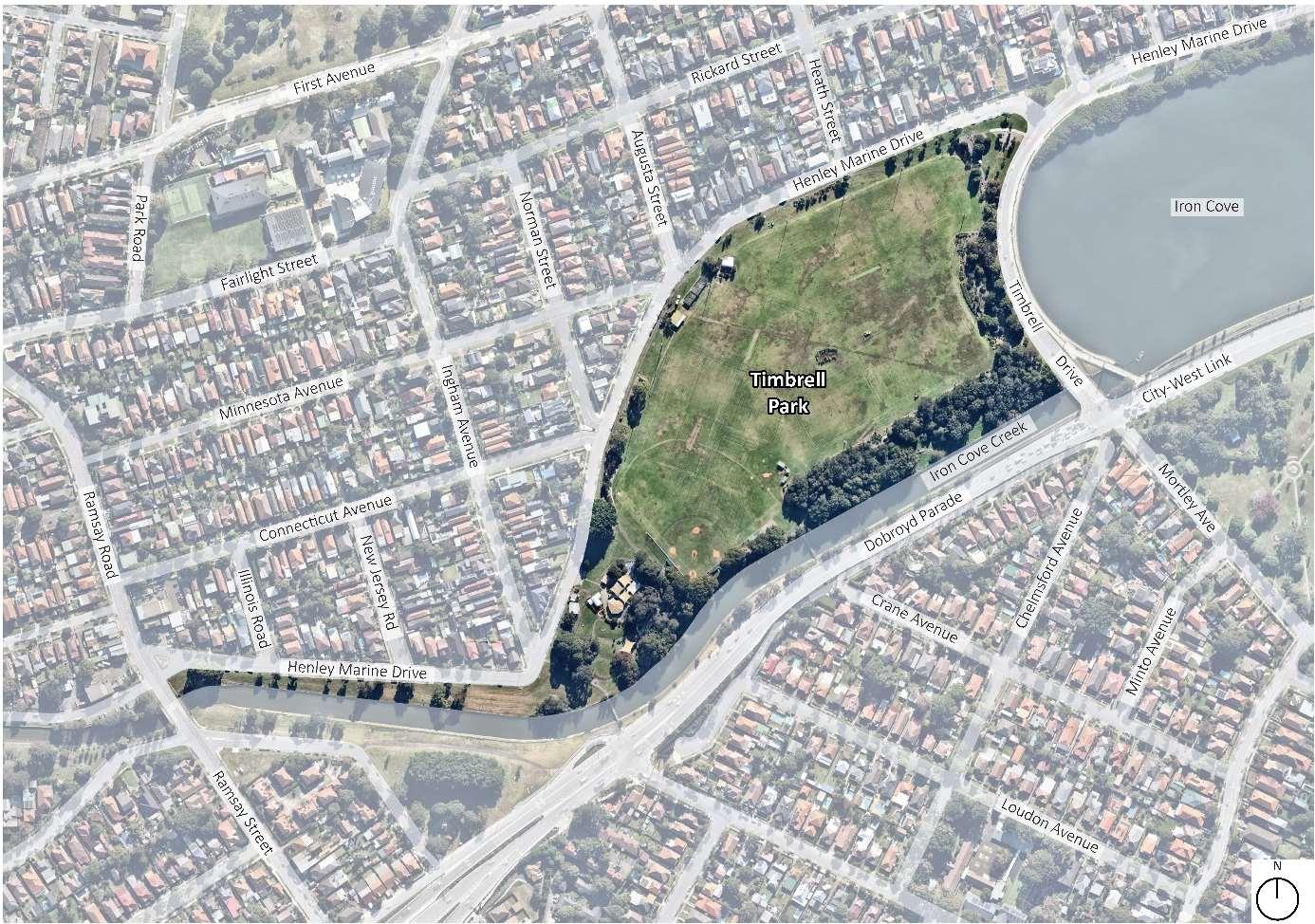
Key features of Timbrell Park are:
Livvi’s Place, an inclusive regional playground
Livvi’s Café
several multi-use district sportsgrounds used year round
barbecue and picnic facilities

dog off leash area
trees and gardens
bushland
walking and cycling paths
BMX cycle track
a key access point for the popular Bay Run along the Iron Cove foreshore.

The first Plan of Management for Timbrell Park was prepared by Drummoyne Council in 1994.
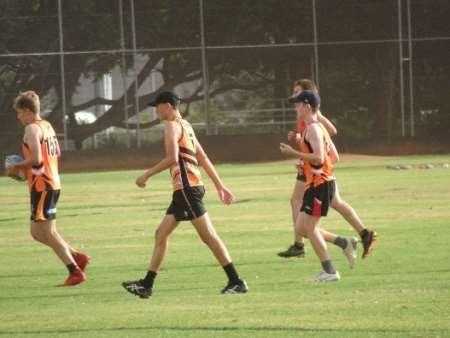
Timbrell Park was then included in the Canada Bay Generic Plan of Management for community land which was adopted in 2007.
The gazettal of the Crown Land Management Act 2016 and the subsequent changesto the management of Crownreserves requires local Councils which are the appointed Council Manager for a Crown Reserve, such as Timbrell Park, toprepare a Plan of Management for that reserve as if it werecommunity land under the Local Government Act 1993.
As such this Plan of Management will replace the2007 Generic Plan of Management as it applies to Timbrell Parkwhen it is adopted by City of Canada Bay and approved by the Minister.
This Plan of Management and Masterplanwill provide a holistic framework for the ongoing management and use of Timbrell Park for the next 10 years. To achieve this aim, the following objectives of this plan are to:
comply withrelevant legislation, particularly the Crown Land Management Act 2016, Native Title Act 1993, and the Local Government Act 1993
reflect the values and desired outcomes of engagement with the community, user groups, local residents, and other stakeholders
identify, consider and balance cultural heritage, environmental, open space and recreational values
include clear and achievable management actions which reflect Council’s strategic goals
provide a framework to guide the future use, management and improvement of Timbrell Park
identify priorities for theallocation of resources to inform futurecapital works and maintenance programs consistent with identified community needs
include a Masterplan todirect future upgrade projects.
The process of preparing this Plan of Management, engagement with stakeholders and the community, and documents produced at each stage, are shownin Figure2.
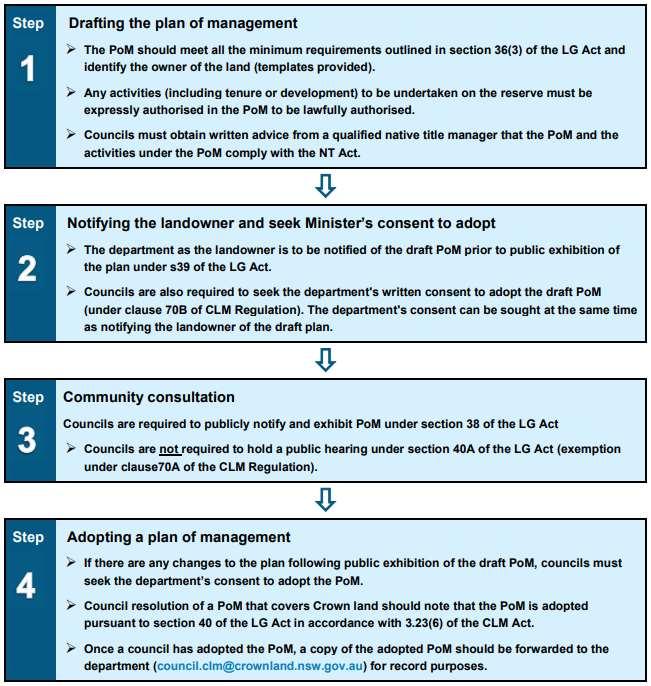
Engagement with the community is an important part of the preparation of this Plan of Management. It gives everyone in the community the chance to have an input into the planning process so Council has a better understanding of the range of values, issues and concerns, and desired improvements to consider when preparingthe Plan of Management. For more detail please refer to the separate Community and Stakeholder Engagement Report (Parkland Planners, 2020) which can be viewed here.
The Crown Land Management Amendment (Plan of Management) Regulation 2021 exempts Council from the requirement to hold apublic hearing into the proposed categorisation of Crown land in accordance with Section 40(A) of the Local Government Act 1993.
Requirements for a Plan of Management for community land, and for Crown land managed by a Council, areas provided by the Local Government Act 1993. These requirements and where they can be found in this Plan, are listed in Table 1.
Requirement of the Local Government Act
Adescriptionoftheconditionoftheland,andofanybuildingsorother improvementsonthelandasatthedateofadoptionofthePlanof Management
Adescriptionoftheuseofthelandandanysuchbuildingsorimprovementsas atthedateofadoptionofthePlanofManagement.
Categorisationofcommunityland
Coreobjectivesformanagementoftheland
Thepurposesforwhichtheland,andanysuchbuildingsorimprovements,will bepermittedtobeused.
Thepurposesforwhichanyfurtherdevelopmentofthelandwillbepermitted, whetherunderleaseorlicenceorotherwise.
Adescriptionofthescaleandintensityofanypermitteduseordevelopment.
Authorisationofleases,licencesorotherestatesovercommunityland.
Objectivesandperformancetargets.
Meansbywhichtheplan’sobjectivesandperformancetargetswillbe achieved.
Meansforassessingachievementofobjectivesandperformancetargets.
How this plan
Section2
Section2, AppendixB
Section3
Section4
Section5
Section5
Section5
Section5
Section6
Section6
Section6
This Plan of Management has been prepared according to the requirements of the Crown Land Management Act 2016. A Plan of Management will satisfy the Crown Land Management Act 2016 ifthe points in Table 2 areaddressed.
A Plan of Management prepared by a Council crown land manager satisfies the Crown Land Management Act if:
Itisconsistentwiththepurposesthelandhasbeen reservedordedicated.
(Sections 3.13 and 2.12 of the Act)
Ithasbeenpreparedunderthe Local Government Act 1993 andisclassifiedcommunitylandthatis eitherdedicatedorreservedCrownland.
(Sections 3.32 (1)(b) and Section 3.23 (6)
ThisPlanhasbeenpreparedconsistentwith thepurpose(s)ofthereservesand dedications.
AllCrownlandthatthisPlanofManagement hasbeenpreparedforiseitherdedicatedor reservedCrownlandunderthemanagement ofCityofCanadaBayCouncil,oris communitylandunderthe Local Government Act 1993 andtherefore requiredtohaveaPlanofManagement.
PlansofManagementforthelandaretobeprepared andadoptedinaccordancewiththeprovisionsof Division2orPart2ofChapter6ofthe Local Government Act 1993
(Section 3.23 (7) (d)
IfthedraftPlanofManagementaltersthecategories assignedasprovidedbythissection,thecouncil managermustobtainthewrittenconsentofthe Ministertoadopttheplanifthere-categorisation wouldrequireanadditiontothepurposesforwhich thelandisdedicatedorreserved
Holdpublichearingundersection40Aofthe Local Government Act 1993
(Section 3.23 (7) (d)
Exceptingwheretherelevantlandisexcludedland, thewrittenadviceofatleastoneCouncil’sNative TitleManagerthatitcomplieswithanyapplicable provisionsofthenativetitlelegislationhasbeen obtained.
(Section 8.7 (1) (d)
Councilmustcomplywithanyrequirementsofthe nativetitlelegislationinrelationtotheland
(Section 8.10)
ThisPlanhasbeenpreparedtosatisfythe requirementsofthe Local Government Act 1993
Noadditionalpurposesofreservedor dedicatedlandareproposed.
The Crown Land Management Amendment (Plan of Management) Regulation 2021 exemptsCouncilfromtherequirementto holdapublichearingintotheproposed categorisationofCrownlandinaccordance withSection40(A)ofthe Local Government Act 1993.
Councilhasreceivedtheadviceofanative titlemanagerthattheplancomplieswiththe Native Title Act 1993 (Cwth).
ThePlanofManagementhasbeen preparedtoensureanyimpactsonnative titlewillbeappropriatelyaddressedunder thefutureactprovisionsofthe Native Title Act 1993.
CouncilshallmeetthenotificationrequirementsofSection24JBofthe Native Title Act 1993 inrelationtotheconstructionor establishmentofapublicworkpriorto furtherapproval.
This page is left blank intentionally
Timbrell Park is located in Five Dock, at the south-eastern border of Canada Bay local government area (LGA) with Inner West LGA.
Timbrell Park is adjoined by Timbrell Drive, the Bay Run and Iron Cove tothe east; Iron Cove CreekIron Cove Creek and Dobroyd Parade/City West Link to the south; and Henley Marine Drive and residences to the north-west.


The traditional owners of the area arethe Wangalclan of the Dharug Aboriginal people. City of Canada Bay recognises the connection ofthe Wangal to Country through signage at prominent locations in Timbrell Park.


The land comprising Timbrell Park was once a wetland situated at the head of Iron Creek at Iron Cove. Dominic Steele Consulting Archaeology (2020) identified that the land at Iron Cove has recognised natural values and Aboriginal cultural heritage sensitivity as an embayment and creek system forming part of a traditional Aboriginal river cultural heritage landscape.
Historical records indicate Iron Cove was an important location in Aboriginal Sydney geography in 1788, and a number of (most likely) prehistoric Aboriginal archaeological heritage sites survive in the local landscape.
A siteregistered on theAboriginal Heritage Information Management System (AHIMS) on 15 June 2017 as sitenumber 45-6-3322 has been investigated by Council. Heritage NSW recently advised Councilthat sitenumber 45-6-3322 on the AHIMS indicates “not a site” and that documentation resulting from the investigation by Council has been added to the electronic recordin the AHIMS. Council has advised Aboriginal stakeholders accordingly.
A history of Timbrell Park and its use is in Appendix A.

A portion of the easternedge of the now Timbrell Park was apart of a 480-acreCrownGrant to Nicholas Bayley on 9August 1803.
Since that time Timbrell Park has been reclaimed from Iron Cove.
During WorldWar II four gun emplacements andpossibly a radar station were located in the park.
In morerecent years Livvi’s Place inclusive playground, Livvi’s Café andthe BMXtrack have expanded recreation opportunities available in the park.
Timbrell Park adjoins the Iron Cove Foreshore Drive comprising Timbrell Drive and Henley Marine Drive which has local heritage significance in the Canada Bay Local Environmental Plan 2013.
Figure 4 shows the land parcels included in this Plan of Management. Property details for these land parcels arelisted in Table 3.
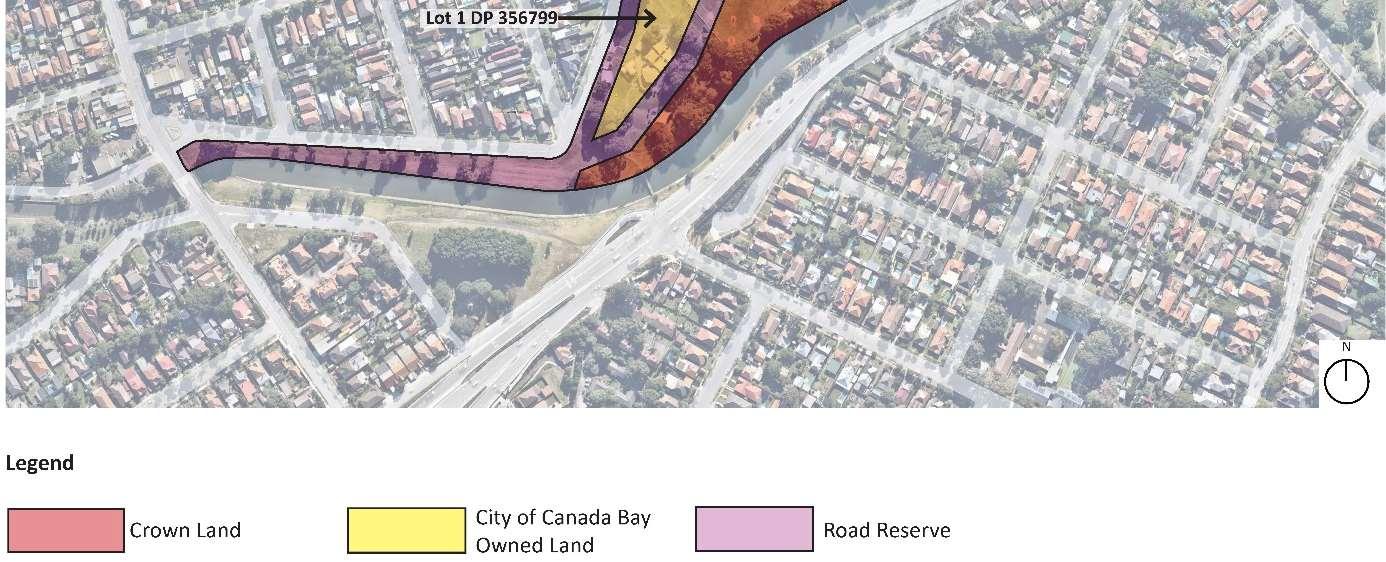
Figure4 Ownership of land in Timbrell Park

Timbrell Park is zoned RE1 Public Recreation in the Canada Bay Local Environmental Plan 2013.
Table 4 shows the native title status of Lot 7010 DP 93651 (R.71318) at 14 November 2019.
Table 4 Native title and Aboriginal land claims Native
14 November 2019
Timbrell Park is managed by City of Canada Bay Council, which is responsible for:
development and management of Timbrell Park
managing leases, licences and other use agreements
liaising with user groups about wet weather arrangements, improvements to facilities
allocation of resources (financial, human and physical) for park development and maintenance
liaising with authorities which haveresponsibilities relevant todevelopment and management of infrastructureand services associated with the park, suchas Sydney Water.
Council is also responsible for review of this Plan of Management when necessary to enable changing circumstances and community needs tobe considered and incorporated.
Several organisations have aresponsibility and/or an interest in Timbrell Park.
Stakeholder Responsibility / interest in Timbrell Park
CityofCanadaBayCouncil Landowner Management
Assetmanagement
Communityandstakeholderengagement
Communitysafety Bookings
Maintenance Funding
MinisterforPlanningand PublicSpaces DepartmentofPlanningand Environment–CrownLands
Landowner/manager
Useoftheparkaccordingtopublicpurpose Nativetitleprovisions LeasesoverCrownland
RoadsandMaritime Services Partlandowner
AboriginalHeritageOffice Aboriginalinterests
TouchedbyOlivia Foundation/Variety
FriendsofLivvi’sPlaceFive Dock
Keysportingusers
CanadaBayBicycleUser Group(BUG)
Localresidents
InnerWestCouncil
SydneyWater
Livvi’sPlaceinclusiveplaygroundandLivvi’sCafé StoryTimeteam
Seasonalandcasualuseagreements
Parkusers
Neighbours Users
AdjoiningCouncilacrossIronCoveCreek
Co-ownerofpedestrianbridgesacrossthecanallinkingTimbrellPark withHaberfield
IronCoveCreekIronCoveCreek,naturalisationproject
NSWPolice Crimeprevention
Use agreements in place at Timbrell Park are in Table 6.
The long-term temperature, rainfall and wind averages for Sydney Olympic Park1, the closest meteorological station toTimbrell Park near Sydney Harbour, shows:
a mean annual maximum temperature of 23.6oC, peaking at 28.4oC in January.
mean annual minimum temperature of 13.9oC, withmean lowest temperatures below 10oC from June to August.
mean annual rainfall of 912 mm, with highest average rainfall occurring inFebruary (110 mm) and lowest average rainfall in September (53mm).
the dominant wind direction at 3pm is east, south-east and south during the spring, summer and autumn months. Wind direction in winter is predominantly from the south, west and north-west.
The underlying geology of the land currently occupied by Timbrell Park is Quaternary Rh Hawkesbury Sandstone, HQ sedimentary witha high proportion of quartz (EcoLogical, 2019). Prior to reclamation and infilling unconsolidated sediments representing alluvial environments interdigitated with estuarinesaline swamps and sandy beach deposits (Dominic Steele Consulting Archaeology, 2020).
The majority of the footprint of TimbrellPark wasan embayment with an inter-tidal zone comprising sand, mudflats, mangroves and possibly saltmarsh wetlands. The land was filled from the 1920s as part of a broader program of sea-walling and embayment reclamation across Sydney Harbour (Dominic Steele Consulting Archaeology, 2020).The most common reclamation method wasto construct a sandstone sea wall and infillbehind the barrier often with domestic garbage, industrial waste, and sediments from the floor of the adjacent bay. Due to reclamation and levelling to create the park in the early 20th century the soillandscape is described by Chapman and Murphy (1989) as Disturbed Terrain.
Dominic Steele Consulting Archaeology (2020) identified that TimbrellPark is surrounded by three natural soil landscapes which aredisturbed to varyingdegrees by urbanisation. These natural soillandscapeswere potential sources of sediment into TimbrellPark inthe form of residual eroded soils (Blacktown and Gymea soil landscapes) and alluvial sediments (Birrong soil landscape).
Reclamation works at Timbrell Park in the early 1940s areshown in Figure 5. The reclamation works appear to have been completed by 1951.
The Canada Bay Local Environmental Plan 2013 Acid Sulfate Soils Map shows that Timbrell Park has Class 2 acid sulfate soils.
EnvironmentalInvestigation Services (2010) found that contaminants inthe soils at Timbrell Park are TPH (C10-C36) and PAHs (including total PAHs and benzo(a)pyrene). Elevated concentrations of lead are present across the site, encountered in boreholes to a depth of 0.5 to 2metres, which may extend across the site.
Sources: State Library of NSW 2019 in Dominic Steele Consulting Archaeology (2020)
EnvironmentalInvestigation Services (2010) recommended that all fill material encountered at the site should betreated as contaminated unless laboratory testing proved otherwise. Exposure to contaminated fill is reduced by maintaining a grass cover over most of the site, and by mulching exposed soil.
Timbrell Park has arelatively flat topography dominated by sporting fields, with minor slopes between 1o and 2o. Grassed batters 1.0 to 1.5 metres in height slope downinto the park from Henley Marine Drive at slopes from 3o to 5o (Environmental Investigation Services, 2010).
Council is proposingto level the sporting fields to0.75% to even out undulations in the surface ofthe sporting fields and toimprove fielddrainage.
The first-order tributary of Iron Cove Creek on the southern boundary of Timbrell Park drained into Iron Cove beforethe creek was confined toa relatively straight concrete-lined stormwater canalprior to1951. Iron Cove Creek in turn drains into the Parramatta River.
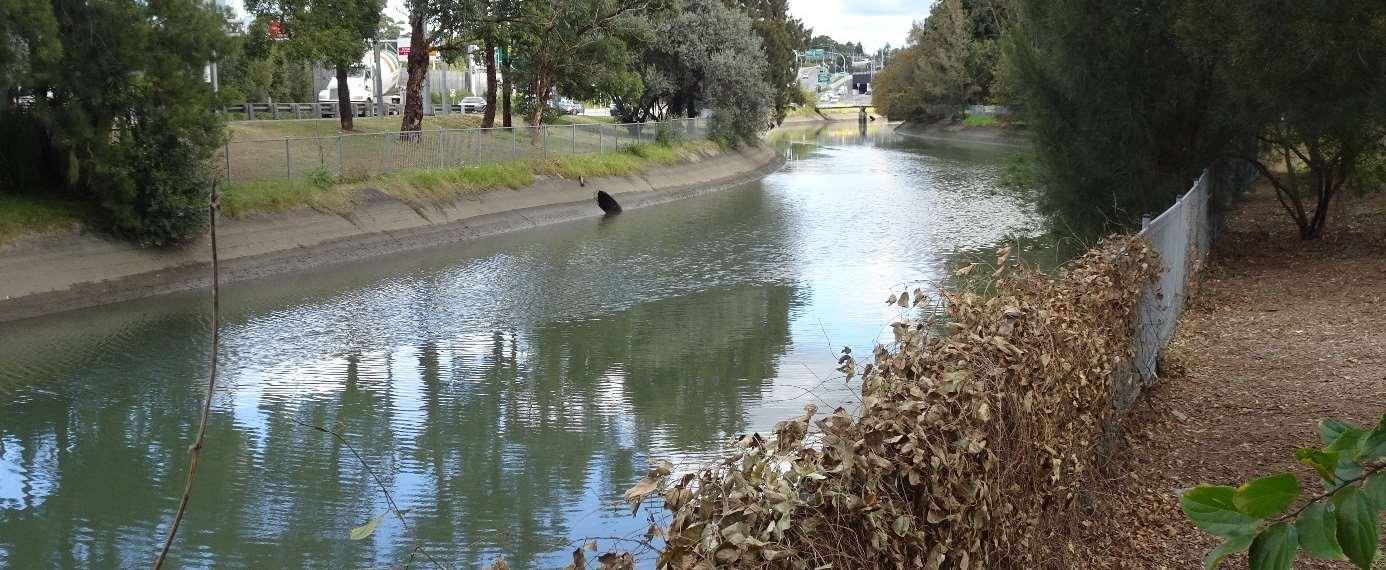


Iron Cove Creek at Timbrell Park is highly tidal with a significant difference between low and high tide level.
There is anecdotal evidence of poor drainage of the sportsfields which increases towardthe bike facility in the south-eastern area of the park.
Flora
Vegetation present in Timbrell Park consists of planted native and exotic trees and shrubs in landscaped areas. There is no remnant or significant vegetation within Timbrell Park. The Canada Bay Biodiversity Framework identifies Timbrell Park as a prioritysupporting habitat (area 6) with critical habitat.
The vegetation communities in Timbrell Park as shown in Figure 6are:
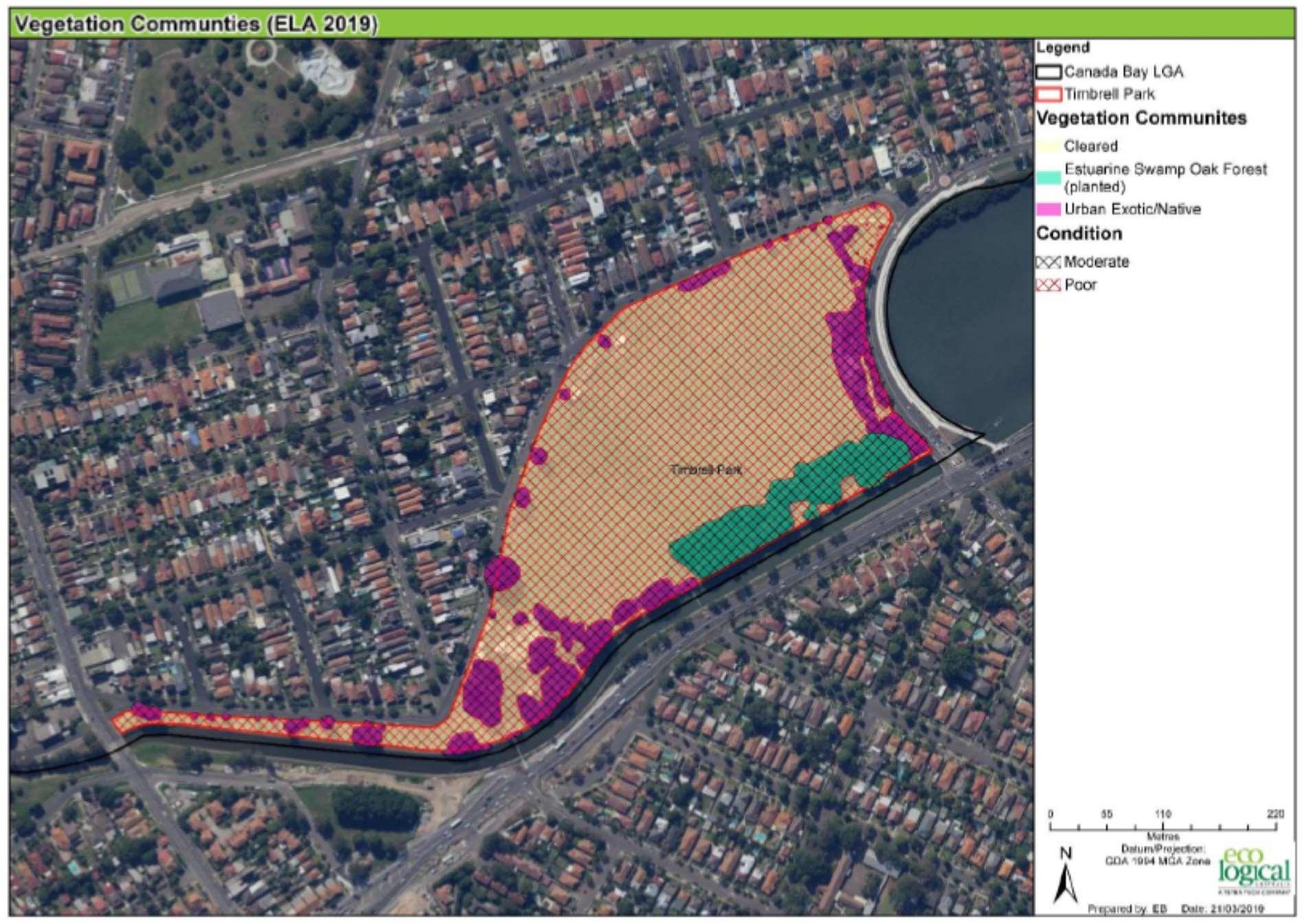
Cleared –turf grass which is mown for sporting fields and diamonds, and for informal recreation use
Urban Exotic/Native as mapped by theOffice of Environment and Heritage (2016) in poor condition.
Estuarine SwampOak Forest (planted) in moderate condition. This community is established (15-25 years old) plantings of SwampShe-Oak, Paperbark, Brush Box and Bangalay (Eucalyptus botryoides).
Current canopy cover in Timbrell Park is 19.5%. The Canada Bay Biodiversity Framework identifies actions toincrease tree canopy and understory in the park. Council has identified additional planting in theparkland area toachieve a canopy cover approaching 25% in the parkland sections (not including the sports fields) of Timbrell Park.
Notable trees in Timbrell Park include the Fig with extensiveroots adjacent tothe baseball clubhouse.


The small clump of vegetation in themiddle of the sporting fields is Lomandra longifolia. The proposed naturalisation of the canal will introduce saltmarshspecies to the park.
Fauna
Eco Logical Australia (2019) describes the fauna habitat on the easternand southern sides of Timbrell Park as Supporting Habitat as shownin Figure 7.
Source: Eco Logical Australia (2019)
Insight Ecology (2014) conducted a terrestrial and aquatic avifauna survey at three locations in Timbrell Park in spring 2013 and autumn 2014.They found that birds inhabiting open parkland sites are resilient native and introducedspecies adapted to the rigour of urban living including frequent disturbance by humans and dogs, and tight competition for resources from other birds and somemammals. Such species found within Timbrell Park in the survey include Australian WoodDuck, Welcome Swallow, Grey-headed Flying Fox, and domestic cats.
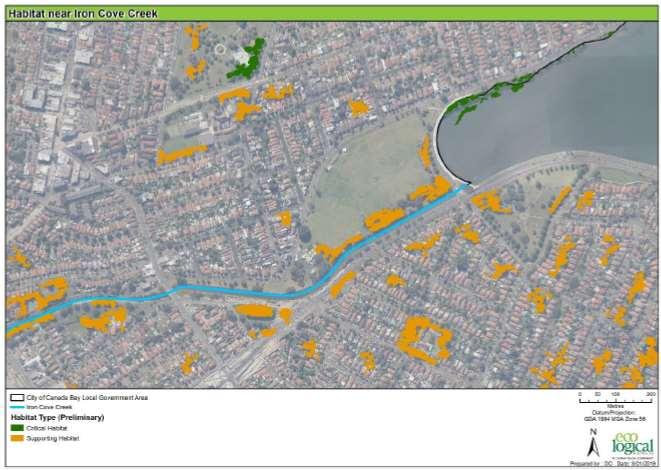
Isolated patches ofmangrove forest along the south-western foreshoreof Iron Cove provide important bird habitat area, withrecords of Bush Stone-curlew at Iron Cove. A BioNet search in 2018 showed that threatened and migratory fauna species have been recorded in Timbrell Park (Eco Logical Australia, 2019).
Nest boxes targeting possums have been installed in trees in the park.
Threats to biodiversity inTimbrell Park are the impacts of artificial lighting on microbats and other nocturnal fauna, and loss of shrubs, understorey, rocks and logs insome parts of the park (Eco Logical Australia, 2019).
Eco Logical Australia (2019) identified wildlife corridor opportunities for Timbrell Park which include:
potential fauna/green bridges toconnect the two sides of the canal
planting more trees, shrubs and understorey in the riparian zone, and naturalisation of the canal edge

planting more trees along Henley Marine Drive to provide habitat for birds and arboreal fauna
placing rock structures and logs to increase habitat, food availability and refuge for small birds, mammals and reptiles.
Access to Timbrell Parkby vehicle is directly served by City West Link / Westconnex, Timbrell Drive, Henley Marine Drive, and by local roads.
There is no on site car parking. On-street parking is available in surrounding streets which can become an issue for local residents at peak sporting use times.
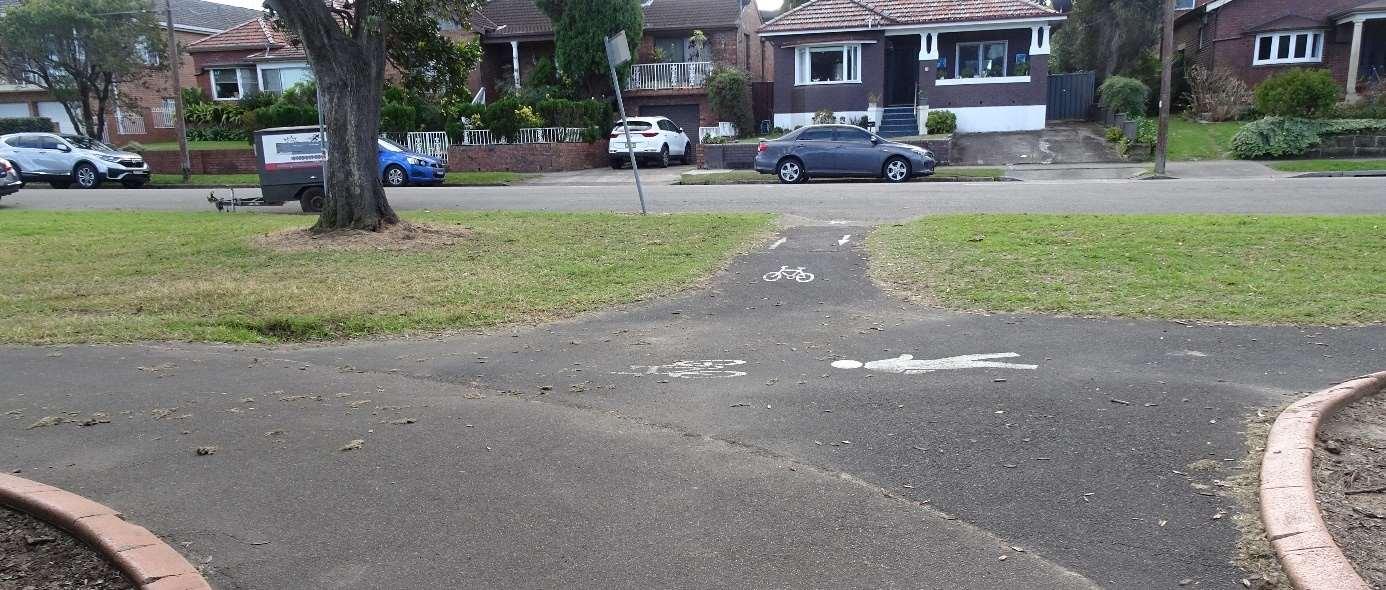
Accessible parking spaces are located outside Livvi’s Café.
Emergency vehicle access to the park is available off Henley MarineDrive west of the playground.
Pedestrian and cycle access is available to Timbrell Park via The Bay Run and local streets.
The Iron Cove Creek and Dobroyd Parade/City West Link restrict pedestrian access to Timbrell Park from Haberfield tothe south. Asmallbridge acrossthe canal facilitates pedestrian access. Transport for NSW has proposed a pedestrian overpass from Haberfield over the City West Link to southof Livvi’s Place.
Public bus routes link Timbrell Park with Ashfield railway station (directly) and Burwood railway station (indirectly). Other bus routes link the park with Five Dock,Leichhardt, Drummoyne and Abbotsford.
The park has an open quality which affords expansive views across the large portion of the park and the sportsfields to Sydney Harbour.
The park has view corridors to the east over the tree line to the Sydney CBD and beyond.
Residents north of the park on Henley Marine Drive have long views across the sportsfields to the south and west with the view terminated bythe woodland running along the edge of the canal.
Views tothe west across the sportsfields aretothe vegetated backdrop flanking the Iron Cove Creek canal.
There are close views from the mountain biketrail area toIron Cove Creek and tothe Parramatta River beyond.

Utilities and services which are provided to and through Timbrell Park areshown in Figure 9. A high pressure gas main in particular has implications for any works undertaken over the area. Locations of services may need to change over time.
Major structures in Timbrell Park are shown inFigure 10. The condition of land in the park and its structures at thedate of adoption of the Plan of Management is inAppendix B.
Timbrell Park is currently subject toseveral planned capital works projects and proposals including:
levelling and upgrading the playingfields
regional cycleway
The Living Room community space
widening and naturalisation of the stormwater canal by SydneyWater.
The Transport for NSW (TfNSW) Co-Designed Bicycle Network Blueprint includes a Tier 2 regional connectivity route along Iron Creek, with funding through the TfNSW Active Transport Program.
TfNSW is also proposing to construct anew pedestrian bridge connecting Timbrell Park south of Livvi’s Place with Reg Coady Reserve and Haberfield across Iron Cove Creek and Dobroyd Parade/City West Link. The existing bridge across the canalin this location will remain.

Timbrell Park is used for competition and training for organised community sport (including football, touch football, cricket, baseball) and school sport (field and diamond sports, and cross country).

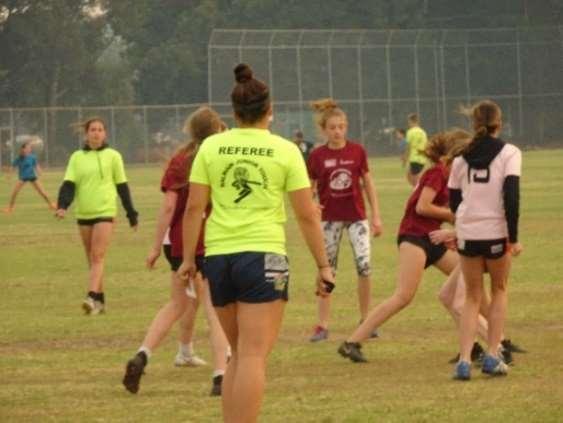
Personal and group fitness trainers and their clients use the park.
Timbrell Park is used for a wide range of informal recreation activities, making use of the space, facilities and settings offered by the park.

Such activities include:
walking
running and jogging, including Pram Runners members
cycling, including using the BMXtrack, and the paths by BAYBUG members
dog walking on leash, and off leash in the designated area fronting Henley Marine Drive to the south. This area willbe significantly reduced when the stormwater canal naturalisation occurs.
fitness and exercising
children’s play, and barbecues and parties in the playground
storytime in the playground on Mondays at 10am during school term
enjoying food and drinksat the café
Sydney Fly Rodders Club – casting practice monthly on Sunday mornings.

The mainmaintenance responsibilities of City ofCanada Bay, contractors and user groups associated with Timbrell Park are:
Maintenance is carried out according to Council’s Asset Management Plan, and includes:
mowing the playing surface and other sportsfieldmaintenance
opening and closing the public toilets
cleaning the public toilets
wastemanagement
clearing leaves
mulching the garden beds on the park perimeter and at Livvi’s Place
initial line marking for field sports
removing graffiti as required.
general maintenance and repairs to buildings, plumbing, locks, lights, fences etc. is carried out asrequired.
Playground repairs are undertaken monthly by staff members who are qualified playground inspectors. A quarterly audit of all playground assets is done by an external qualified playground inspector.
User groups areresponsible for:
minor maintenance, including subsequent line-marking, spreading clay for baseball
informing Councilof any maintenance and repairrequirements
inspecting the sportsgrounds to ensurethey arefit for purpose before each use.
Sources of funding for TimbrellPark arerate revenue, field hirefees, and grant funding.
Hire fees charged arelisted in the ‘Schedule of Fees and Charges’ in Cityof Canada Bay’s annual Operational Plan.
Expenditure on Timbrell Park includes maintenance, renovation, and capital improvements.
This page is left blank intentionally
This section describes the wider legislative and policy framework which applies to Timbrell Park.
Full versions of the legislation referred to below are on-line at www.legislation.nsw.gov.au and www.austlii.edu.au. City of Canada Bay website: www.canadabay.nsw.gov.au.
Table 7 outlines the national, state, regional and local planning context which influences the use, development and management of Timbrell Park.
Table 7 Planning context of Timbrell Park
Land use planning and management
Commonwealth Native Title Act 1993
Telecommunications Act 1997
Open space / active and informal recreation
Sport2030
AustralianStandardsfor playspaces
AustralianHuman RightsCommission AdvisoryNoteon streetscape,public outdoorareas,fixtures, fittings,furniture2013
Community and culture
Native Title Act 1993
Disability Discrimination Act 1992
Work Health and Safety Act 2012
Australian Standardsfor access,built facilities
Environment
Environmental Protection and Biodiversity Conservation Act
1999
Biodiversity ConservationStrategy 2010-2030
Australia’sStrategy forNature2019-2030
ThreatenedSpecies Strategy2015
AustralianWeeds
Strategy2017-2027
AustralianPest AnimalStrategy20172027
Intergovernmental Agreementonthe
Environment1997
AustralianStandards forenvironmental managementsystems
NSW Aboriginal Land Rights Act 1983
Crown Land Management Act
2016
CrownLand2031
CrownLandsState StrategicPlan–A
VisionforCrown Land Local Government Act 1993
NSWPublicSpaces Charter2021
NSWGreenerPlaces Policy2020
DraftGreenerPlaces DesignGuide2020
BetterPlacedPolicy HerSportHerWay: WomeninSports
FutureSportsPlans
DeliveringSportand
AntiDiscrimination Act 1997
Disability Inclusion Act
2014
NSW Disability Inclusion ActionPlan
2020-2025
Biodiversity Conservation Act
2016
Biodiversity Conservation Regulation2017
SEPP(Biodiversity andConservation)
2021
Biosecurity Act 2015
Noxious Weeds Act 1993
Local Government (General) Regulation 2021
Environmental Planning and Assessment Act
1979 Roads Act 1993
Local Land Services Act 2013
SEPP(Transport andInfrastructure)
2021
ActiveRecreationin NSW
EveryoneCanPlay:A GuidelinetoCreate InclusivePlaySpaces
2019
Companion Animals Act
1998 andRegulation
2008
Heritage Act 1977
NSW StrategicPlan forChildren andYoung People20222024
National
Parks and Wildlife Act
1974
Pesticides Act 1999 and Pesticides
Regulation 2017
Our Future on the Coast: An overview of coastal manage-ment in NSW 2018
Coastal Management Act 2016
SEPP(Coastal Management)2018
Catchment Management Authorities Act 2003
Contaminated Land Management Act 1997
SEPP(Vegetationin Non-RuralAreas)
2017
Protection of the Environment Operations Act 1997
Local Land Services Act 2013
Smoke-free Environment Act 2000 and Smoke-free Environment Regulation 2016
Soil Conservation Act 1938
Water Management Act 2000
National Parks and Wildlife Act 1974
FiveMillionTreesfor GreaterSydney (5MT)
Sydney AMetropolisof ThreeCities: GreaterSydney RegionPlan
50-YearVisionfor GreaterSydney’sOpen SpaceandParklands
2021
GreaterSydneyGreen Grid2017
GreaterSydney OutdoorsSurvey2021
SydneyGreenGrid–CentralDistrict
SydneyMetropolitan CatchmentAction Plan2013-2023
GreaterSydney
RegionalStrategic WeedManagement Plan2017-2022
ParramattaRiver EstuaryCoastalZone ManagementPlan 2013-2023
Canada Bay LGA
CanadaBayLocal StrategicPlanning Statement
YourFuture2030
CanadaBayLocal EnvironmentalPlan
2013
CanadaBay Development ControlPlan
CanadaBaySection 94Contributions Plan
SocialInfrastructure (OpenSpaceand Recreation)Strategy
Let’sAllPlayStrategy
DogsinPublicPlaces Strategy
Aboriginal andCultural Heritage Studyand Management
Plan2006
Community Safetyand Crime Prevention
Plan20142018
Disability Inclusion ActionPlan
2017-2021
Local Movement Strategy
Pedestrian Accessand MobilityPlan
Environmental Strategy2014
Biodiversity
Frameworkand ActionPlan
UrbanTreeCanopy Strategy
GreenhouseAction Plan
WaterEfficiencyPlan
DraftElectricVehicle ChargingStrategy
Implementation
Key legislation and planning requirements are setout in this section. Other applicable legislation and plans arein Appendix C.
The Commonwealth Native Title Act 1993 recognises and protects thetraditional ownership and interest inland and waters that indigenous Australians hold accordingto their traditions, laws and customs. Theobjectives of the Native Title Act are to:
provide for the recognition and protection of native title
establish ways in which futuredealings affectingnative title may proceed and to set standards for those dealings
establish a mechanism for determining claims tonative title
provide for, or permit, the validation of past acts invalidated because of the existence of native title.
The Act describes the process for the recognition of native titlerights, including mechanisms for Aboriginal and Torres Strait Islander Peopleto establish the existenceof nativetitle, lodge native title claims, determine and validate the extinguishment of native title, and dealing with land and waters wherenative title persists.
All Crown land in NSW can be subject to a nativetitle claim under the Native Title Act. A native title claim does not generally affect Crownland where nativetitle has been extinguished or it is considered excluded land.
The Native Title Act may affect use of Crown land, particularly development and granting of tenure. Under the Crown Land Management Act it is mandatory for Council to nominate or engage a qualified Native TitleManager who provides adviceregarding how Council’s dealings and activities on Crown land can be valid or not valid in accordance with the Native Title Act. Council must obtain the written advice from a Native Title Manager that Council complies with any applicable provisions of the native title legislation when:
granting leases, licences, permits, forestry rights or easements over the land
approving (or submitting for approval) a plan of management for the land that authorises or permits any of the kinds of dealings referred to above.
The NSW Crown Land Management Act 2016 requires that onCrownland (including where managed by a local council) native title rights/interests must be addressed (unless native title has been surrendered, extinguished or legally determined to no longer exist). Any dealings in land or water by a Crownland manager that affect (impair or extinguish) native title are classified as “futureacts” and must comply withthe Act. Examples of a“future act”, on Crown land, might include the granting of freeholdtitle, or a lease or licence, or the construction of public works. The Native Title Act sets out procedures tofollow beforesuch “future acts” can be validly carriedout.
The NSW legislation most affecting use and management of Timbrell Park is the Crown Land Management Act 2016, Aboriginal Land Rights Act 1983, Local Government Act 1993, and the Environmental Planning and Assessment Act 1979
Most of Timbrell Park is Crown land as shown inFigure 4. Crown land in NSW is governed by the Crown Land Management Act 2016, which provides aframework for the state government, local Councils and members of the community to work together to provide care, control andmanagement of Crownreserves. City of Canada Bay is Crownland manager under the CLM Act, and continues to havemanagement responsibility for Timbrell Park.
Under Section 1.4of theCLM Act, Crown land is required tobe managed according to the objects and principles of Crown land management (refer to Section 4 of this Plan).
Section 3.21 of the CLM Act authorises a local Council that has management responsibility for an area of dedicated or reserved Crown land (a “council manager”), as City of Canada Bay does for Timbrell Park, tomanagethat land in accordance with the public land provisions of the Local Government Act 1993. With some exceptions, Section 3.22(1) of the CLM Act requires that aCouncil manager of dedicated or reserved Crownland “must manage the land as if itwere community land under the Local Government Act 1993” and has “for that purpose allthe functions that a local Council has under that Act in relation to community land (including in relation to the leasing and licensing of community land)”. Notwithstanding, Crown land must bemanaged in accordance with the purpose(s) of the land and cannot be usedfor an activity incompatible with its purpose(s).
Section 3.23 of the CLM Act requires a Council manager of dedicated or reserved Crown land to:
categorise the land toone or more categories of community land referred to in Section 36(4) of the Local Government Act 1993. The assigned category(s) must be closely related to the purpose(s) for which the land is dedicated or reserved. The
proposed multiple categorisations of Timbrell Park which correspond withthe current reservepurpose of Public Recreation, is in Figure4.
prepare and adopt a Plan of Management for the dedicated or reserved Crown land in accordance with the Plan of Management provisions of Division 2 of Part 2 of Chapter 6 of the Local Government Act 1993.
The CLM Act provides that any existing lease, licence or permit issued under the Crown Lands Act 1989 will continue for its agreed term.However from 1July 2018 all new leases, licences and permits areissued under the new legislation.
Section 3.15 of the CLM Act also allows the Minister tomake, and publish in the NSW Government Gazette, Crown land management rules “for or with respect to the management of dedicated or reservedCrown land by Crown land managers”.
The Crown Land Management Regulation 2018 supports the new Crown Land Management Act 2016. CrownLand Managers must comply with Crown land regulations which prescribe principles and rules relating tothe use andmanagement of Crown land inNSW.
Crown land has significant spiritual, social, cultural and economic importance to the Aboriginal people of NSW. The CrownLand Management Act recognises and supports Aboriginal rights, interests and involvement in Crown land.
This 10-year vision will guide how Crown land inNSW will be used for the years tocome.
The draft plan includes a roadmap of priorities, outcomes and enablers that are all steps in delivering a vision whereCrown lands supports resilient, sustainable and prosperous communities across NSW.
The draft plan sets out an approach that will enable the use of Crownland to evolvetomeet changing community needs.
The Aboriginal Land Rights Act 1983 (ALRAct) recognises the rights of Aboriginal people in NSW. The Act seeks to compensate Aboriginal peoples (who may or may not also be native title holders) for past dispossession, dislocation and removal of land in NSW.
Aboriginal land claims may be placed on any Crown land in NSW. The Department of Planning and Environment is responsiblefor investigating claims as defined in the ALR Act. If a claim is established, the land is transferred to the Aboriginal Land Council as freehold land.
At thetime of preparing this Plan of Management none of the reserves subject to this Plan of Management are affected by an undetermined Aboriginal land claim.
One parcel of Timbrell Park (Lot 1 DP 356799) is owned by City of Canada Bay Council and is classified as community land under the Local Government Act 1993. Council owned land which is classified as ‘community’ land must be managed and kept for the purposes of the community. Community land must be managed according to the Local Government Act 1993 and the Local Government (General) Regulation 2021
Community land:
must have a Plan of Management prepared for it, which sets out guidelines for use and management of the land. Until a Plan of Management is adopted, the nature and use of the land must not change.
must be kept for the useof the general community, and must not be sold. Council has no power tosell, exchange or otherwise dispose of community land, except for the purpose of enabling that land to become, or be added to, aCrown Reserve or land reserved or dedicated underthe National Parks and Wildlife Act 1974
cannot be leased or licenced for a period of more than 21 years, or for 30 years with consent from the Minister.
Community land must be categorised in accordance with the Local Government Act 1993. A category assigned tocommunity land, using the guidelines for categorisation in the Local Government (General) Regulation 2021, reflects Council’s intentions for future management and use of the land.
The CLMA 2016 requires categorisation of Crown land according to the Local Government Act 1993 and consistent with the public purpose of the Crownreserve.
All of Timbrell Park (excluding the road reserve)was categorised as Sportsground in the 2007 Generic Plan of Management. However the category of Sportsground is not appropriatetoapply to the entire park, so it is proposed that Timbrell Parkis categorised as Sportsground, Park, andGeneral Community Use according to the guidelines for categorisation in Table 8. Refer toSection 4.3.3 for the categorisation map and core objectives.
Category Guidelines1
Sportsground Ifthelandisusedorproposedtobeused primarilyforactiverecreationinvolvingorganised sportsortheplayingofoutdoorgames.
Park Landthatis,orisproposedtobe,improvedby landscaping,gardensortheprovisionofnonsportingequipmentandfacilities,forusemainly forpassiveoractiverecreational,social, educationalandculturalpursuitsthatdonot undulyintrudeonthepeacefulenjoymentofthe landbyothers.
General CommunityUse Landthatmaybemadeavailableforuseforany purposeforwhichcommunitylandmaybeused, whetherbythepublicatlargeorbyspecific sectionsofthepublic.
Local Government (General Regulation) 2021
Application to Timbrell Park
Sportingfieldsandamenities
Playground
Informalgrassedareas
Gardenbeds
Offleashdogexercisearea
Paperbarkgrove
Proposedconstructed
wetland
LivingRoom
Livvi’sCafé
The requirements of the Local Government Act 1993 regarding leases, licences and other estates arein Section 6.
The Environmental Planning and Assessment Act 1979 (EPA Act) establishes the statutory planning framework for environmental and landuse planning in NSW through:
State Environmental Planning Policies (SEPPs).
Local Environmental Plans (LEPs). The Canada Bay Local EnvironmentalPlan 2013 applies to Timbrell Park.
The EPA Act requires that “environmental impacts” be considered in land use planning and decision making.
The SEPP (Transport and Infrastructure) 2021 assists local Councils andcommunities by simplifying the process for providing essential infrastructureand enabling greater flexibility in the location, development and maintenance of infrastructureand service facilities. It includes specific planning provisions and development controls for a range of infrastructure works or facilities including parksand other public reserves, roads, emergency services, electricity delivery, and telecommunications networks. Theclauses relevant to permissible works in Timbrell Park are in Section 6 of this plan.
The local planning framework is governed by Local Strategic Planning Statement, Community Strategic Plan, Delivery Plan and Operational Plan, the Canada Bay Local EnvironmentalPlan 2013, and Development Control Plan.
This page is left blank intentionally
This section defines the specific roles and objectives for Timbrell Park based on community values and management directions of City of Canada Bay and the Department of Environment and Planning-Crown Lands.
Timbrell Park is situated on the boundary of the Five Dock-Canada Bay and Russell LeaRodd Point smallareas (id. Profile, 2020). Thecombined population of Five Dock-Canada Bay and Russell Lea-Rodd Point had a population of 18,244 people in 2019, with a forecast increase in population of4,845 residents (26% increase) to 23,089 by 2036.
Compared with the population of the City of Canada Bay, the Five Dock/Canada Bay small area hadin 2016:
a higher proportion of people in the younger, under 15 years, age groups (18.6% comparedwith 16.2%) as well as more people in the 40-to 44 and older, 65 years and over, age groups
fewer peoplein the 20 to 34 year age ranges
a higher proportion of couple families with one or morechildren (35.6% compared with 31.2%) as well as ahigher proportion of one-parent families and single person households
a lower proportion of couples without children
considerable growth in couples with children households, and extra 131 such households added between 2011 and 2016
a much larger proportion of people with Italian ancestry (25.0% comparedto 14.8%), as wellas morepeople withAustralian ancestry
a smaller percentage ofpeople with Chinese ancestry (8.4% compared to 16.9%), but with considerable growth in the local Chinese ancestry population between 2011 and 2016 of 220 persons
significantly lower residential densities, with a far higher percentage of detached dwellings (48.1% compared to 36.8%) and alsomore medium density dwellings (31.0% comparedto 20.4%), but withmedium density dwellings on the increase with 187 new medium density dwellings added between 2011 and 2016 (with a total 2016 stock of 4,330 dwellings)
Five Dock/Canada Bay’s demographic and dwelling profile is indicative of an older, established, residential area that is undergoing a phase of urban renewal with an influx of younger to middle aged families and, to adegree, someurban redevelopment and increasing residential densities.
The process and outcomes of community and stakeholder engagement undertaken for this Plan of Management and Masterplan areset outin detail in the Draft TimbrellPark Community and Stakeholder Engagement Report (Parkland Planners, 2020).
Community and stakeholder engagement for this project was undertaken in two stages:
1. Information gathering in November-December 2019 (Stage 1).
2. Public exhibition of the draft plans in mid 2022(Stage 2).
Values and roles for Timbrell Park
City of Canada Bay City Council takes a values-based approachto the planning, use and management of Timbrell Park.
By understanding the reasons why the community values Timbrell Park, the roles that the community expects the site toplay in the futuremay be determined. ThisPlan of Management is based on protecting, conserving and enhancing the values of Timbrell Park. Desired outcomes, management strategies and actions which are consistent with these values have been developed.
The values of Timbrell Park revealed by the community engagement are in Table 9.
Table 9
Values
Values and roles of Timbrell Park
Large open space with opportunity for multipurpose activities
Informal recreation opportunities
Explanation
TimbrellParkismorethan11hectares ofpubliclyavailableopenspaceina mediumdensityurbanareawithan increasingpopulation.
ThespaceavailableinTimbrellPark facilitatesmultipurposeactivitiesthat thecommunitycanparticipatein.
TimbrellParkoffersarangeofinformal recreationactivitiesforallageswhich areaccessibletothecommunity.
Livvi’sPlaceinclusiveplayground,with itsfencedplayspace,rangeofplay facilitiesandopportunities,and Storytimeactivityisespeciallyvalued. Thecafé,internalcircuitpath,BMX track,theoff-leashdogareaandpicnic/ barbecuefacilitiesareappreciated.
Significance Roles
District Publicopenspace
Emergencyassembly point
District/ Regional Play
Venueforinformalcasual activeandinformal recreationactivities
Inclusivechildren’splay space
Offleashdogexercise area
Location and access
ThecommunityvaluesTimbrellPark becauseitisclosetothewaterofIron Cove,andiscentralandaccessibleto TheBayRunalongIronCove.
TimbrellParkisdescribedasbeing easytogettoandconvenientfrom nearbyhomesandfromfurtherafield. Onstreetvehicleparkingisavailable.
District Partofregionalandlocal bikeroute
Starting/finishingpoint andconnectingloopfor theBayRun
Sport opportunities
TimbrellParkprovidesfacilitiesfor communitybasedsportincluding competition,trainingandcasualusefor severalfieldanddiamondsports. Thesocialopportunitiesprovidedby organisedsportingclubsisvalued.
District Venueforcompetition andtrainingfor local/districtfieldand diamondsportsinFive Dock
Natural/ environmental / ecological
Thebushlandareatothesouthofpark, andtreesandshadeingeneral,are valued.
Visual ViewsfromTimbrellParktothewater ofIronCovearecoveted.
Theextensiveflatgrassedareaand treesgivetheparkagreen appearance.
TimbrellParkisdescribedascleanand well-presented.
District PartoftheGreenGrid
ConnectivitybetweenIron CoveandRamsayStreet alongIronCoveCreek Wildlifehabitatand corridor
District PartofGreenGrid Visualbackdropto adjoiningdevelopment
The issues the community and stakeholders raised, and how their suggestions toaddress those issues, arebrieflyset out below and addressed in relevant sections of this plan.
The “top 20’ issues raised by the community and stakeholders, and how they areaddressed in this plan, arein Table 10 below. A detailed list of issues and suggestions is in Appendix D.
Timbrell Park will continue to be a district scale, quality multi-purpose sport and informal recreation area which together has “something for everyone”. It is an inclusive space with facilities for the whole community to enjoy a range of organised and informal sport, recreation and play.
The vision for Timbrell Park is consistent with theNSW government and City of Canada Bay’s vision for open space and parkland (refer toAppendix E).
Timbrell Park will be managed according to the principles of Crown land management embodied in the Crown Land Management Act 2016 which are:
(a) that environmental protection principles be observed in relation to themanagement and administration of Crownland, and
(b) that the natural resources of Crown land (including water, soil, flora, fauna and scenic quality) be conserved wherever possible, and
(c) that public use and enjoyment of appropriate Crown land be encouraged, and
(d) that, whereappropriate, multiple use of Crown land be encouraged, and
(e) that, whereappropriate, Crown land should be used and managed in such a way that boththe land and its resources aresustained inperpetuity, and
(f) that Crown land be occupied, used, sold, leased, licenced or otherwise dealt with in the best interests of the State consistent with the above principles.
Timbrell Park will be managed according to the core objectives under the Local Government Act 1993 for eachcategory of Crown and community land as shown in Figure 11.

The coreobjectives for community land categorised as Sportsground are to:
encourage, promote and facilitaterecreational pursuits in the community involving organised and informal sporting activities and games.
ensure that such activities are managed having regardto any adverse impact on nearby residences.
The coreobjectives for community land categorised as Park areto:
encourage, promote and facilitaterecreational, cultural, social and educational pastimes and activities
provide for passive recreational activities or pastimes and for the casual playing of games
improve the land in sucha way as to promote and facilitate its use to achieve the other core objectives for its management.
The coreobjectives for community land categorised as General Community Use are to:
promote, encourage and provide for the use of the land, and to provide facilities on the land, to meet the currentand future needs of the local community and of the wider public in relation to:
- public recreation and the physical, cultural, social and intellectual welfare or development of individual members of the public.
- purposes for which a lease, licence or other estate may be granted in respect of the land (other than the provision of public utilities and works associated with or ancillary to public utilities).
For context Figure4 - Ownership of land in Timbrell Park from p9 of the PoM is reproduced below:
Timbrell Park will be managed consistent with its purpose of Public Recreation.
City of Canada Bay’s objectives for the RE1 Public Recreation zone areto:

enable land tobe used for public open space or recreational purposes.
provide a range of recreational settings and activities and compatible land uses.
protect and enhancethenatural environment for recreational purposes.
facilitate public access to and along the foreshore.
conserve public open space that enhances the scenic and environmentalquality of Canada Bay.
The management objectives for Timbrell Park related to its values areset out below.
Values Objectives
Large open space and opportunity for a variety of activities
ConsiderTimbrellParkasaprecinctcomprisingalargeparklandaswellasa sportandactiverecreationfacility.
Broadenaccesstoanduseoftheparkforarangeofsporting,informal recreationandcommunityandsocialuses.
Monitoruseoftheparkanditsconsistencywiththecarryingcapacityof facilitiesandsettings,andadjustvisitationifrequired.
Informal recreation opportunities
Providearangeofopportunitiesforrecreationalactivitiesforallagegroupsin avarietyofsettings.
Provideandmaintainopportunitiestoexperiencepeaceandquietinthepark. Ensuresafeenjoymentoftheparkforthecommunity.
Location and access
Ensureequitableandeasyaccesstoandwithintheparkforallmembersof thecommunity,regardlessofgender,ageorphysicalability.
Enhancelinkstoothersportingandrecreationareas,residentialareasand retailareaswithinandoutsideCanadaBay.
Sport and active recreation opportunities
Natural/ environmental
Providehighqualityfacilitiesforfieldanddiamondsports. Provideopportunitiesforphysicalfitness.
Manageandmaintaintheparkinanecologicallysustainablemanner. Ensuretheprinciplesofecologicallysustainabledevelopmentareconsidered ineveryareaofimprovementtothepark.
Encouragetheuseofecologicallysustainabledevelopment,watersensitive urbandesign,andothermanagementapproachestominimisetheuseof non-renewableresources.
Aimtowardsa25%treecanopycoverinthenon-sportingareasofthepark. Plantappropriatevegetationandensureitishealthy.
Managetrees,vegetationandlandscaping.
Visual Enhancetheleafyandgreenvisualcharacterofthepark. Provideshadeforparkvisitors.
Manageandmaintainopenspace,sportingandrecreationfacilitiesinan efficientandcost-effectivemanner.
Ensurethepark,facilitiesandamenitiesareclean,tidyandwellmaintained. Minimisegenerationofwaste.
Social, heritage, culture
Encouragecommunity“ownership”anduseofthepark. Involvethecommunityinplanning,managementandmaintenanceofthe park.
Conserve,enhanceandpromoteAboriginal,Europeanandnon-European heritagevaluesofthepark.
Interpretheritageandhistoricalvaluesoftheparkforusersandthe community.
Increaseopportunitiesforsocialandcommunityinteractioninthepark. Encouragesocialandculturalactivitiesandstructuresinthepark. Encourageprivateandcommunityceremoniesandcelebrationsbeingheld inthepark.
AdoptCrimePreventionThroughEnvironmentalDesignandSaferBy DesignprinciplesinmanagingthePrecincttominimisevandalismand increasepersonalsafetyofprecinctusers. Maintainpartnershipswithsportingandotherusergroups.
This page is left blank intentionally
Timbrell Park will continue tobe developed and used for a broad range of permitted uses consistent with the categorisation and public purposes of the reserve.
Introduction
Permissible uses and developments at Timbrell Park must be in accordance with relevant legislation, particularly:
Crown Land Management Act 2016
Native Title Act 1993
Aboriginal Land Rights Act 1983
Local Government Act 1993
SEPP (Transport and Infrastructure) 2021
Canada Bay Local Environmental Plan 2013
uses for which leases, licences and other estatesmay be granted on community and Crown land under the Local Government Act 1993, Crown Land Management Act 2016, and the Crown Land Management Regulation 2018.
Commonwealth legislation.
any interests held on title.
Use of Crown land must be consistent with:
the principles of Crown land management
the public purpose of Public Recreation
any interests and rightsgranted under the Crown Land Management Act 2016.
NativeTitle Act 1993
Native titlerights and interestsmust be considered on Crownland unless native title has been extinguished or surrendered, or determined by a courtto no longer exist.
When proposing any act that may affect nativetitle on Crownland or Crown reserves the act must be authorised through Part 2Division 3 of the Native Title Act 1993.
Examples of acts whichmay affect native title onCrown land or reserves managed by Council include:
construction of newbuildings and other facilities such as toilet blocks, walking tracks, tennis courts, grandstands and barbecues
construction of extensions to existing buildings
construction of newroads or tracks
installation of infrastructure such as powerlines, sewerage pipes, etc.
creation of an easement
issue of a lease or licence
undertaking of major earthworks.
The Native Title Act 1993 also contains provisions regarding public works. The Act defines a public work as:
(a) any of the following that is constructed or established by or on behalf of the Crown, or a local government body or other statutory authority of the Crown, in any of its capacities:
(i) a building, or other structure(including a memorial), that is afixture; or
(ii) a road, railway or bridge; or
(iia) where the expression is used in or for the purposes of Division 2 or A of Part 2--a stock-route; or
(iii) a well, or bore, for obtaining water; or
(iv) any major earthworks; or
(b) a building that is constructed with the authority of the Crown, other than on alease.
Major earthworks are defined as: earthworks (other than in the courseof mining) whose construction causes major disturbance to the land, or to the bed or subsoil under waters.
To undertake a future act (including the adoption of a Plan of Management) on Crown land, Council must comply with the futureact provisions of the Native Title Act 1993 and meet the requirements of Section 8.7the Crown Land Management Act 2016. Generally, Section 24JA of the Native Title Act 1993 allows most actions that aCouncil would want toundertake on Crown land. To utilise Section 24JA the reservation must have been validly created prior to 23 December 1996. Council willbe able to utilise Section J forfuture actsover the part of R.71318 comprising Timbrell Park.
Where it is proposed to construct or establish apublic work on reserved or dedicated Crown land, where native title is not extinguished, prior to approval Council will notify and give an opportunity to comment any representative Aboriginal/Torres Strait Islander bodies, registered native title bodies corporateand registered native title claimants in relation tothe land or waters covered by the reservation or lease as required under the Native Title Act 1993
The Aboriginal Land Rights Act 1983 provides land rights for Aboriginal people in NSW. The lodgement of an Aboriginal land claim by a LandCouncil creates an inchoate (unformed) interest inthe land. The full extent of that interest is not known until the claim is investigated and a determination is made by the relevant Minister.
A Plan of Management must consider the inchoate interests of Aboriginal people where an undetermined Aboriginal Land Claim exists.
According tothe Local Government Act 1993 and the Local Government (General) Regulation 2021, uses and developments on land classified as community land must be consistent with the guidelines for each relevant category and the core objectives of the relevant category. The guidelines and core objectives for the Sportsground, Park, and General Community Use categories which apply to TimbrellPark are outlined above.
All activities which are consistent with the guidelines for categorisation asSportsground, Park, and GeneralCommunity Use whichmeet the coreobjectives of those categorisations, are expressly authorised by this Plan.
The Canada Bay Local Environmental Plan 2013 sets out ingeneral terms what types of developments are permissible within the RE1 Public Recreation zone, and provisions for conservation of heritage items.
All proposed uses, development and building works inthis Plan of Management should be permissible under the applicable zoning in the Canada Bay LocalEnvironmental Plan 2013, and assessed if required through a Development and Building Application process consistent with the Environmental Planning and Assessment Act 1979
Works and activities permitted under the RE1 Public Recreation zone in City of Canada Bay are listed in Table 12.
Environmental protection works
Aquaculture
Biosolidstreatmentfacilities
Boatsheds
Businessidentificationsigns
Carparks
Centre-basedchildcarefacilities
Communityfacilities
Environmentalfacilities
Informationandeducationfacilities
Jetties
Kiosks
Marinas
Markets
Mooringpens
Recreationareas
Recreationfacilities(indoor)
Recreationfacilities(outdoor)
Respitedaycarecentres
Restaurantsorcafes
Roads
Takeawayfoodanddrink
premises
Any
Any Development Applications, proposed works and major management issues willbe advertised to the community for information and to invite comment.
SEPP (Transport and Infrastructure) 2021
permitted without consent on a Crownreserve if the development is toimplement an adopted Plan of Management for the land (Clause 2.73 (2) (c)).
for certain purposes by or on behalf of Councilwithout consent on a public reserve under the controlof or vested in Council(Clause 2.73 (3)).
exempt from planning consent if it is carried out by or on behalf of apublic authority on a public reserve (Clause 2.74).
Commonwealth legislation
Council recognises that under the Telecommunications Act 1997 TimbrellPark may be a desirable location for the location of atelecommunications installation. ‘Low impact’ telecommunications installations are permissibleon community land without authorisation in a Plan of Management and without Council approval.
This Plan of Management authorises the granting of a lease or licence for the erection and use of telecommunications towers, provided theproposal is put on publicexhibition prior to a Council resolution permitting the use. Arental feewill be payable to Council.
Introduction
Timbrell Park is intended to be used for outdoor sport, active recreation, informal recreation, community/social/cultural activities, and other compatible activities. Developments and structures are limited to those which support the desired activities.
This Plan of Management expressly authorises development of new buildings and structures, and future redevelopment/refurbishment of buildings and structures, whichsupport the desired uses of Timbrell Park for outdoor sporting, recreation, and community/social activities.
Permitted uses and developments must support and enhance the other values of Timbrell Park including access, open space, sport, recreation, and the naturalenvironment.
Any use or developmentthat would further encroach on the open space ofTimbrell Park should be minimised, unless it can be shownthat the proposed use or development is:
a more efficient use of the space,
has a community benefit, and
is consistent withthe objectives of this Plan of Management.
This Plan of Management authorises the following uses and developmentsat TimbrellPark, including but not limited to those listed in Table 13. Some of the activities and developments listed below may require development consent.
The facilities on community land may change overtime, reflecting the needs of the community.
Purpose / Use
Outdoorsportingandrecreationalactivities compatiblewiththeuseofallfacilities
Organisedandunstructuredactiveandpassive sportingandrecreationalactivitiesandprograms Community,specialandculturalevents, gatheringsandceremonies
Development to facilitate uses (applies to all Community Land, Crown Land & Road Reserve)
Temporaryadvertisingstructureswhichrelateto approveduses/activities,areinternallydirected, andapprovedbyCouncil
Accessforpeopleofallabilities
Amenities
Barbecues
Commercialusesassociatedwithsportsfacilities
Sportsadministration
Advertising-internallyoriented Art,includingpainting,sculpture
BMX/mountainbikeriding
Bushregenerationandrehabilitation
Ceremonies
Classes(sport,leisure,recreation,training)
Commercialactivities
Communityandspecialevents,withapproval, includingfestivals,markets,exhibitions, concerts/performances,music,outdoortheatre andcinema,fundays,fund-raisingandcharity events
Communitygardening
Corporatepromotions
Culturalevents
Cycling–leisure,activetransport/transit
Deliveringapublicaddressorspeech
Dogexercise(prohibitedwithin10metresofthe playground,cafeandpicnic/barbecueareas.
Off-leashinthedesignatedoffleasharea-onleashonlyelsewhere.
Earthworks
Easements
Education
Emergencypurposes,includingtraining
Environmentalmanagementandmonitoring
Environmentalprotectionworks
Filling,levellingordrainingofland
Filmingandphotography,subjecttoCouncil approval
Flora,faunaandarchaeologicalsurveys
Functions
Habitatcreation
Helicoptertake-offandlanding(inmedical emergenciesonly)
Informalballgamesandrecreation
Interpretation(historical,environmental)
Irrigationanddrainage
Landscaping,gardening
Maintenanceandemergencyvehicleaccess
Maintenanceofallsportingandrecreation facilities
Marketsandfairs
Meetings
Naturestudy
Outdoorcinema
Overflowparkingduringspecialevents
Performancesincludingconcerts,film/outdoor cinema,stage
Personalandgroupfitnesstraining,subjectto Councilapproval
Pestcontrol(invertebrateandvertebrate)
Bicyclerelatedstoragefacilities/racks
Binsandotherwastereceptacles
Biobankingandothercarbonsequestration initiatives
BMXtrackincludingjumps
Bridges(walking,cycling,accessforpeoplewith disabilities)
Broadcaststructures-temporary
Café/Kiosk
Carparkingspacesforauthorisedvehiclesonly Commercialdevelopmentsympathetictoand supportingexistinguses
Communityfacilities/spacesforsocial,cultural andrecreationpurposes
Communitygardens
Complyingandexemptdevelopment
Drainageworks:complementarytothenatural drainagepatternsontheland,andtoprotect roads,services,orotherfacilitiesontheland. Easementstoprivateproperty:temporaryor permanentaccessacrossTimbrellParkwhere appropriateandincompliancewiththe requirementsofthe Local Government Act 1993 andotherrelevantlegislationandpolicy.
Educationalfacilities
Environmentalfacilities
Environmentalprotectionworks
Erosioncontrolstructures
Fencing
Fitness/exerciseequipment
Flagpolesorsmartpoles
Foodandbeverageoutlet(mobile,temporary)
Foodpreparationandrelatedfacilities
Hardstandforeventstructures
Irrigationanddrainagestructuresandsystems Landscaping(hardandsoft),includinglandscape structuresorfeatures
Lighting:forpublicsafetyandtheprotectionof assetswhileminimisinglightspillandnot affectingnocturnalfauna
Parkfurniture
Parkmaintenancestaffamenities
Pathways
Picnictables,sheltersandbarbecues
Playequipment,softfall,shadestructures
Publicutilities
Recreationareas
Recreationfacilities(outdoor)
Refreshmentkiosks(notrestaurants)
Renewableenergyequipment–solarpanels, batteries
Roads,pathways
Scoreboardandscoringinfrastructure
Seating
Sheltersandshadestructures
Picnicsandbarbecues
Playactivities(allages,abilities)
Revegetation
Riparianbanknaturalisation,stabilisationand management
Ripariancorridormanagement
Running/jogging
Sportingactivitiesincludingtraining,competition, tuition
Stormwatertreatmentand/orretention
Walking
Weedmanagement
Signage–locational,directional,interpretive, regulatory
Sportancillarypurposes
Sportingfacilitiesforconductingorganisedsport (amateur,professional)includingturforsynthetic sportsfields,sportscourts,goalposts,turfor syntheticwickets,practicenets,sightscreens, moundsandbasesforbaseball/softball,lights, safetyfencingandnetting,changeroomsand lockerfacilities,showerandtoiletfacilities,club rooms,storagefacilities–notincluding shipping/storagecontainers)
Sportscourts(outdoor)
Sportslighting–fieldlightingtoAustralian standardsforrelevantsportingactivities
Stormwaterstoragetanksandpipes
Takeawayfoodordrinkpremises
Toilets,changeandrestrooms
Utilityinstallations
Vehicleaccess,parkingandloading/unloading areas(emergencyandauthorisedvehiclesonly)
Vehiclebarriers
Viewingarea/platform
Walkingtracksandpaths,raisedpaths/ boardwalks,ramps,stairs,gates
Wastemanagement
Watersensitiveurbandesignstructuressuchas raingardens,swales
Workshedsorstoragerequiredinconnection withmaintenanceoftheland
Activities that areprohibited or restricted at Timbrell Park include, but arenot limited to:
breaking or leaving anybottle, glass, syringe or other objects likely to endanger the safety of any person
camping or staying overnight
depositing rubbish
discharging of rifles or firearms
dogs off leash
dogs within 10 metres ofplaygrounds and food preparation areas
fireworks without approval
flying of model aeroplanes or drones
any gameor activity likely to damage property, injure, endanger or causenuisance to any other person
helicopter landings, except in emergencies
horse riding
interfering with or damaging any Council building, equipment, furniture, landscaping, tree, plant or flora
leaving of dog faeces (removal and proper disposal is required)
lighting of fires, except inCouncilconstructed fireplaces or portable barbecues
practising of golf or archery
remote controlvehicles including model aeroplanes and cars
taking of unauthorised motor vehicles or motorised bikes, except in constructed carparks and driveways.
Conduct which is prohibited in dedicated or reserved Crown land are listedin Clause 9 of the Crown Land Management Regulation 2018.
Activities that can be prohibited on Crownland by direction or notice under Part 9 of the Crown Land Management Act 2016 are listed in Clause 13 of the Regulation.
Activities at Timbrell Park may be prevented or restricted by public healthorders such as during a pandemic.
This Plan of Management expressly authorises development of new buildings and structures, and redevelopment/refurbishment of existing buildings and structures, which support the desired uses of Timbrell Park and are consistent with the reserve purpose of Public Recreation and the categorisation.
Proposed buildings and structures at Timbrell Park include:
Demolition and construction of newsporting amenities
Living Room
Allitems indicated on the Masterplan.
The location, size and scale of future buildings and structures at Timbrell Park will be consistent with:
community needs
physical site constraints such as proximity to waterways, and flooding.
best practice design standards including Australian Standards and NSW Better Places guidelines.
Access to new facilities in the park and any refurbishment of those structures will be provided according to Australian Standard1428 (Parts 1 – 4) Design for Access and Mobility.
Access and seating for people with disabilities should comply withthe Disability Discrimination Act and the Building Code of Australia.
All facilities and infrastructure (newand renewed), and maintenance of the park will integrate sustainability in terms of energy use, life cycle costs, source material impacts, and Water Sensitive Urban Design (WSUD).
All new buildings and/or refurbishments of existing buildings will be low-scale and of architectureand built form appropriate tothe local climate and physical setting.
Landscaping works will be undertaken consistent with the precedents in the Masterplan.
Species selected for planting at Timbrell Park will be native and endemic to the area where possible, and be appropriate for a highly modified and used recreation area. Planting within the park will be undertaken on a site-specific basis as shown on the Masterplan, withthe objective to increase canopy cover to atarget of 25% inthe non-sports field areas.
Introduction
In accordance with the Local Government Act 1993 a Plan of Management for community land must set out the scale and intensity of proposed uses and developments.
The scale and intensity of future uses and development at Timbrell Park is dependent on:
the natureof the approved future uses and developments
the carrying capacity of facilities and spaces at Timbrell Park
impact on adjoining residents andland uses in terms of noise, lighting, traffic and vehicle parking
consistency with the reserve purpose and categorisation.
Any proposal to use buildings, structures and spaces at Timbrell Park will be considered on merit and balanced against physical constraintsand the amenity of adjoining residents and land uses.
The benchmarks for the scale and intensity of future uses and developments permissible at Timbrell Park will be physical disturbance and damage tofacilities and spaces. Thephysical impacts of activities and uses on facilities and spaces should be regularly monitored. Review of permissible activities and developments willoccur if site monitoring shows any deterioration from the present condition of Timbrell Park resulting from those activities or developments.
Activities at Timbrell Park which may attract high numbers of people include sporting activities and community events. The intensity of use, multiple activities/uses, and real or perceived crowding/congestion or competition for space across open space at Timbrell Park will be managed soas not to unreasonably compromisethe amenity of users and the community.
At times, such as during the COVID-19 pandemic, Council isrequired to implement public health directives to ensure social distancing at public open spaces and facilities, which may involve temporarily preventing access tospecific facilities such as playgrounds and café seating.
Conversely, the response toa pandemic or similar situation would increase demand for walking, cycling and outdoor informalrecreation opportunities. Timbrell Park is ideally placed to offer such local outdoor open space and exercise opportunities.
Under Section 46(1)(b) of the Local Government Act 1993 a lease, licence, other estate or easement (alsoreferred to as use agreements) may be granted over all or part of community land as a way of formalising the use of community land. The Crown Land Management Act 2016 contains similar provisions for Crown land managed by Council Crown Land Managers.
Leases and licences may be held by organisations such as sporting clubs and associations, community groups, schools, non-government organisations, charities, community welfare
services, non-profit organisations and government authorities, or by private/commercial organisations or peopleproviding facilities and/or services for public use.
A lease willbe typically required whereexclusive use or control of allor part of Timbrell Park is desirable for effectivemanagement. Alease may also be required due to the scale of investment in facilities, the necessity for security measures, or where the relationship between amajor user and facilities on community land justifies such security of tenure.
Licences allow multiple and non-exclusiveuse of an area. A licence maybe required where intermittent or short-termuse or controlof all or part of Timbrell Park is proposed. A number of licences for different users can apply to the same area at the sametime, provided thereis no conflict of interest.
In accordance with Section 46A of the Local Government Act 1993 a Plan of Management for community land is to specify and authorise any purpose for whicha lease, licence or other estate may be granted over community land during the life of a Plan of Management. Under Section 46 of the Act, Council may lease or licence community land for purposes consistent with the categorisation and zoning of the land.
The lease or licence must be for uses consistentwith the reserve purpose(s), the assigned categorisation and zoning of the land, be in the best interests of the community as a whole, and enable, wherever possible, shared and multiple use of community land.
Any lease or licence proposal will be individually assessed and considered, including the community benefit, compatibility with this Plan ofManagement, and the capacity of the community land and the local area to support the activity.
Several use agreements(leases, licences or other estates) currently apply to Timbrell Park as listed in Table 6. These agreements areauthorised until the end of theircurrent term beforethe exercising of any options.
The Local Government (General) Regulation 2021 sets out requirements for issuing of leases, licences and short term/casual permits on community land.
The maximum period for leases and licences on community land allowable under the Local Government Act is 21 years, or 30 years if consent from the Minister is provided (including any period for which the lease or licence could berenewed by the exercise of an option) for purposes consistent with the categorisation and core objectives ofthe particular area of community land. Community land may only be leased or licenced if public notice is given according tothe requirements of the Local Government Act.
Under Section 47, Council may grant a lease, licence or other estate exceeding five years if it gives public notice of the proposal to the owner, the public and all stakeholders, and invites and considers public submissions. If an objection tothe proposalis made, Council may not grant a lease, licence or other estate without consent of the Minister for Local Government.
For proposed leases, licences and other estatesof five years or less, Council must publicly advertisethe proposalin the sameway as for leases, licences and other estates over 5 years. Final approval of the lease rests with Council, but the Minister for Local Government has the discretion to callin a proposed lease anddetermine thematter in place of Council. However, someshort-term and other types of leases, licences and other estates, such as providing underground pipes and connections, are exempt from the need to advertise.
Any leases or licences for emergency services organisations, and not-for-profit and community groups after 30 June 2021must be authorised by an adoptedPlan of
Management, or Ministers consent must be sought tomanage the land as is it were operational land under the Local Government Act 1993
Requirements for leases and licences over dedicated or reserved Crown land
The Crown Land Management Act 2016 sets out requirements for granting leases, licences, permits, or easements including secondary interests on dedicated or reserved Crown land.
Table 14 Leases and licences over dedicated or reserved Crown land
Section of Crown Land Management Act 2016
3.22
Functionsof CouncilasCrown LandManager
8.77
AdviceofNative TitleManager requiredtogrant interests
2.20&3.17and
Crown Land Regulation 2018 Section31
Shortterm licencesover dedicatedor reservedCrown land
Lease and licence requirements
AsCrownLandManager,Councilmustmanagethelandasifitwere communitylandunderthe Local Government Act 1993. CouncilasCrownLand ManagercanexerciseallthefunctionsthatalocalCouncilhasunderthatAct inrelationtocommunityland,includinginrelationtoleasingandlicensingof communityland.
WhereCouncilisCrownLandManager,anativetitlereportmustbeprepared priortograntingalease,licenceorotherpermit,inaccordancewithNativeTitle legislation.ThisrequirementalsoextendstocapitalworksonCrownreserves.
CouncilasCrownLandManagermayissueshorttermlicencesonCrownland asifitwerecommunitylandunderthe Local Government Act 1993 foruses including:
- Accessthroughareserve
- Advertising
- Campingusingatent,caravanor otherwise
- Catering
- Community,trainingoreducation
- Emergencyoccupation
- Entertainment
- Environmentalprotection,conservation orrestorationorenvironmentalstudies
- Equestrianevents
- Exhibitions
- Filming(asdefinedbythe Local Government Act 1993)
- Functions
2.19,3.17
Secondary interestsover dedicatedor reservedCrown land
2.18
Specialprovisions relatingto Minister’spowers overdedicatedor reservedCrown land
- Grazing
- Hiringofequipment
- Holidayaccommodation
- Markets
- Meetings
- Militaryexercises
- Mooringofboatstowharves orotherstructures
- Sales
- Shows
- Siteinvestigations
- Sportingandorganised recreationalactivities
- Stablingofhorses
- Storage.
TheMinisterorCouncilmayissueasecondaryinterestwheretheyare satisfieditisinthepublicinterestandwouldnotbelikelytomateriallyharmuse ofthelandforthepurposesforwhichitisdedicatedorreserved.
TheMinistermaygrantalease,licence,permit,oreasementoverdedicatedor reservedCrownlandforafacilityorinfrastructure,oranyotherpurposethe Ministerthinksfit. Beforedoingso,theMinistermustconsulttheCrownland managerortherelevantgovernmentagencyifthelandisused,occupiedor administeredbyanagencyortheMinistertowhomthatagencyisresponsible. Ifthelandistobeusedoroccupiedundertherelevantinterestforanypurpose exceptapurposeforwhichitiscurrentlydedicatedorreserved,anoticeisto bepublishedspecifyingthepurposesforwhichthelandistobeusedor
occupiedundertherelevantinterest,andbesatisfiedthatitisinthepublic interesttogranttherelevantinterest.
A tenure(lease, licence), short term use agreement or easement on Crown land may impact native title rights and interests. Any such tenure or use agreement issuedon Crown land must be issued in accordance with the future actprovisions of the Native Title Act 1993 and in accordance with Part8 of the Crown Land Management Act 2016 unless native title is extinguished. For Crownland which is not excluded land, this will requirewritten advice from Council’s Native Title Manager that it complies with any applicable provisions of the native title legislation. The advice of an independent Native Title Manager was sought before this Plan of Management was adopted in relation to Lot 7010 DP 93651 which is not excluded land.
Subject to the Native Title Act 1993, any secondary interest or short term licence on Crown land described in Division 2.5of the Crown Land Management Act 2016 may be issued.
The granting of easements over Crown land will be subject to the provisions of the Native Title Act 1993 and Division 8.7 of the Crown Land Management Act 2016.
Use agreements over community and Crown land are dealt with in Sections 46, 46A and 47 of the Local Government Act 1993, Clauses 116to 119 of the Local Government (General) Regulation 2021, Division 3.4 of the Crown Land Management Act 2016,and Clause 70 of the Crown Land Management Regulation 2018.
In accordance with Section 46A of the Local Government Act 1993 a Plan of Management for community land is to specify and authorise any purpose for whicha lease, licence or other estate may be granted over community land during the life of a Plan of Management.
This Plan of Management expressly authorises the issue of leases, licences and other estates over the land covered by this Plan of Management, provided that:
the purpose is consistent withthe purpose for which it was dedicated or reserved, and any purposes which have been added to the reserve
the purpose is consistent withthe guidelines and core objectives for the category of the land
the lease, licence or other estate is for a permittedpurpose listed in the Local Government Act 1993 or the Local Government (General) Regulation 2021
the issue of the lease, licence or other estate andthe provisions of the lease, licence or other estate can be validated by the provisions of the Native Title Act 1993 (Cth)
where the land is subject to a claim under the Aboriginal Land Rights Act 1983 the issue of any lease, licence or other estatewill not prevent the land from being transferred in the event the claim is granted
the lease, licence or other estate is granted and notified in accordance with the provisions of the Local Government Act 1993 or the Local Government (General) Regulation 2021
the issue of the lease, licence or other estate will not materially harm the use of the land for any of the purposes for whichit was dedicated or reserved.
Depending on the natureof the proposed lease or licence, Council would develop specific objectives and requirements tailored tothe proposed use. Terms and conditions of a lease, licence or other estate should reflect the interest of the Council, protect the public, and ensure proper management and maintenance.
This Plan of Management expressly authorises the issue of leases, licences and other estates over the land inTimbrell Park categorised as Sportsground, Parkand General Community Use as set out in Table 15 below.
Short termlicences andbookings will be issued in accordance with the Local Government (General) Regulation 2021.
Section 46A of the Local Government Act 1993 requires that Plans of Management must specify purposes for which a lease, licence or other estatemay be granted only by tender. A lease or licence for a term exceeding fiveyearsmay be granted only by tender, unless it is granted to a non-profit organisation. However, Council may apply a tender process in respect togranting any particular lease, licence or estate.
Leases, licences and other estatesfor the following purposes willbe granted only after a public competitive tender process in accordancewith the Local Government Act 1993:
advertising
commercial activities
a lease or licence for a term exceeding five years, unless granted to a non-profit organisation
other leases/licences Councilmay want to tender.
If Councilproposes togrant alease, licence or other estate in respect of community land, it must follow certain notification procedures as outlined in Section 47 of the Local Government Act 1993
Where a lease arrangement has been entered into with Council over community land, subleasing of the land must be in accordance with the requirements of Section 47C ofthe Local Government Act 1993 i.e. the purpose for whichthe land was to be used under the lease.
Community land that is the subject of a lease cannot be sublet for a purpose other than:
the purpose for which the land was to be used under the lease;or
a purpose prescribed bytheRegulations.
Under Clause 119 of the Local Government (General) Regulation 2021, community land leased by asporting club may be sub-let for refreshment kiosks, dances and private parties.
Introduction
Exclusive use of any area of community and Crown land is not desirable, as Timbrell Park should be available for use by anyone in the community. An exception is a use where the exclusion of the public is desirable for security ofassets and public safety.
The exclusive occupation or use of Timbrell Park is only permitted for the purposes of any lease to whichSections47 and 47Aof the Act applies.
Section 46 of the Local Government Act 1993 generally prevents Councils from granting leases, licences or otherestates over community land for private purposes. However, the Act enables short-term casual licences to be issuedby Councils for purposes prescribed by the Regulation. The purpose of the lease, licence or other estate must be consistent withthe core objectives for the relevant category of community land.
Council intends to lease/licence an area of Timbrell Park toTouched by Olivia for a Living Room, described as a community space.
The terms and conditions of any agreement for the proposed Living Room willensure that:
public access is available
use of thefacility is compatible and in keeping with, and does not significantly detract from, the uses, appearance and enjoyment of theadjacent park and sporting areas
it will not have unacceptable impacts on the surrounding residents and neighbourhood.
- ‘Living Room’community space
- café/kiosk for refreshment purposes, including outdoor seating and tables, with or without liquor licence
- child care or vacation care
- commercial activities associated with and ancillary to Timbrell Park and aligned with its values infunction, scope and scale
- educational purposes, including classes, workshops
- community services delivery and provision
- arts and cultural purposes, including concerts, dramatic productions
- recreational, community and leisure purposes, including fitness classes, dance classes, games
- sporting uses developed/operated by a private operator
Licence
- mobile food/beverage vans
- advertising aligned with Timbrell Park values and Council’s policies
- hire or sale of recreational equipment
- sporting, community, recreational and related activities
- hire or sale of sporting equipment
- mobile food/beverage vans
- advertising aligned with Timbrell Park’s values and Council’s policies
- sporting activities fixtures and events including ticketed events
- sporting, community, recreational and related activities
- café/kiosk for refreshment purposes, including outdoor seating and tables, with or without liquor licence
- child care or vacation care
- mobile food/beverage vans
- advertising aligned with Timbrell Park’s values and Council’s policies
Short-term licence Depending on activity and agreement with Council
Including but not limited to:
- Access through a reserve
- Advertising
- Catering
- Coaching clinics for basketball, skating and the like
- Community services and activities
- Community events and festivals
- Community training or education
- Delivering a public address
- Emergency occupation
- Engaging in an appropriate trade or business
- Entertainment
- Environmentalprotection, conservation or restoration or environmental studies
- commercial activities associated with and ancillary to Timbrell Park and aligned with its values in function, scope and scale including management and maintenance of sporting and related infrastructure and the sporting fields
- commercial activities associated with and ancillary to Timbrell Park and aligned with the values infunction, scope and scale
- educational purposes, including education classes, workshops
- arts and cultural purposes, including concerts, dramatic productions
- recreational, community and leisure purposes, including fitness classes
- sporting, community, recreational and related activities
Including but not limited to:
- Access through a reserve
- Advertising
- Broadcasting or filming of sporting fixtures and still photography
- Broadcasts associated with any event, concert, or public speech
- Catering
- Coaching clinics for sporting activities
- Community events and festivals
- Community services and activities
- Community training or education
- Delivering a public address
- Emergency occupation
- Engaging in an appropriate trade or business
- Entertainment
Including but not limited to:
- Access through a reserve
- Advertising
- Auctions and similar activities
- Broadcasting or filming of sporting fixtures and still photography
- Catering
- Cinema
- Coaching clinics for recreational, sporting activities
- Community events and festivals
- Community services and activities
- Community training or education
- Delivering a public address
- Displays, exhibitions, fashion parades, shows
- Emergency occupation
- Engaging in an appropriate trade or business
- Equestrian events
- Exhibitions
- Filming (as defined by the Local Government Act 1993), including for cinema/ television including temporary erection or use of buildings or structures necessary to enable a filming project to be carried out
- Functions – community, corporate
- Hiring of equipment
- Markets, fairs
- Meetings
- Military exercises
- Mobile food/beverage vans
- Outdoor cinema
- Performances, playing a musical instrument or singing for fee or reward
- Photography (still, commercial)
- Picnics
- Private celebrations (weddings and family gatherings)
- Sales
- Scientific studies, surveys
- Shows
- Site investigations
- Sporting and organised recreational activities
- Storage
- Environmentalprotection, conservation or restoration or environmental studies
- Equestrian events
- Exhibitions
- Filming (as defined by the Local Government Act 1993), including for cinema /television including temporary erection or use of buildings or structures necessary to enable a filming project to be carried out
- Functions - community, corporate
- Helicopter take-off/ landing
- Hiring of equipment
- Markets, fairs
- Meetings
- Military exercises
- Mobile food/beverage vans
- Outdoor cinema
- Performances, playing a musical instrument or singing for fee or reward
- Photography (still, commercial)
- Private celebrations (weddings, family gatherings)
- Promotion or enhancement of sporting groups, fixtures and events (e.g. ‘guest’ events for juniors, gala days, club meetings)
- Sales
- Scientific studies, surveys
- Seminars and presentations, including educational programs
- Entertainment
- Environmentalprotection, conservation or restoration or environmental studies
- Exhibitions
- Filming (defined by the Local Government Act 1993), for cinema/television including temporary erection or use of buildings or structures necessary to enable a filming project to be carried out
- Functions - community, corporate (e.g. commemorative functions, book launches, film releases, similar activities)
- Hiring of equipment
- Markets, fairs
- Meetings
- Military exercises
- Performances, playing a musical instrument or singing for fee or reward
- Photography (still, commercial)
- Private celebrations (weddings and family gatherings)
- Promotion or enhancement of sporting groups, fixtures and events (for example ‘guest’ events for juniors, gala days, club meetings)
- Sales
- Scientific studies, surveys
- Seminars and presentations, including educational programs
- Shows
- Shows
- Site investigations
- Sporting and organised recreational activities, fixtures and events including ticketed events
- Sports ancillary ceremonies (for example, rehearsals, opening and closing ceremonies, cheer squads, etc.)
- Sports and fitness training and classes
- Storage
- Site investigations
- Sporting and organised recreational activities, including ticketed events
- Storage
Other estates
This Plan of Management expressly authorises Council to grant ‘an estate’ over Crown and community land for the provision of public utilities and works associated with or ancillary to public utilities and provision of services, or connections for premises adjoining the community land to a facility of the council or public utility provider on the community land in accordance with the Local Government Act 1993. The granting of easements of over Crown land will also be subject to the provisions of the Native Title Act 1993, Division 8.7 of the Crown Land Management Act 2016, and other applicable legislation.
This Plan of Management authorises the construction of structures for the purposes of stormwater management, treatment and/or retention as prescribed in Section 28 of the Local Government (General) Regulation 2021. This Plan authorises the continued use of drains, channels and easements, and the creation of new drains, channels and easements.
This Plan of Management expressly authorises the granting of easements over community land at Timbrell Park for public utilities, providing pipes, conduits or other connections under the ground surface. This is limited to easements which connect premises adjoining community land to an existing water, sewer, drainage or electricity facility of Council or another public utility provider that is situated on the land. Such easements are authorised provided that:
there is no feasible alternative to connecting to a facility on the community land
there is no significant impact on the condition or use of the community land
in all cases, the applicant is to be responsible for all costs incurred by Council in the creation of the easement.
Granting of easements for public utilities and stormwater management at Timbrell Park is subject to conditions as required to ensure protection of reserve assets, values and uses; and demonstration of a community and/or environmentalbenefit. Councilwill oppose the
General Community Use category creation of any additional (foreign) services or utility installations, or easements, in or through Timbrell Park unless there is an advantage for the park and its management, or an overriding community or environmentalbenefit.
Granting of easements above or on the surface of community land is not within the authority of this Plan of Management. These easements include, but are not limited to, piping to a natural watercourse, piping from a facility on community land to a facility on private land, and private vehicular or pedestrian access.
AMasterplan istoberead inconjunctionwith thePlan ofManagement.TheMasterplan isthe illustrativerepresentationoftheproposedconstructionanddesignoutcomes.Ithighlightslongterm planning aspirations and establishes best practice outcomes and a clear vision. It uses community goals and desires for the project, giving spatial organisation. The Master Plan is a conceptplanandelementsaresubjecttochangetoaccommodatedetaileddesignconstraints and other unforeseen changes provided the overall objectives of the PoM remainunchanged.
The Draft Masterplan forTimbrell Park is shown below in Figure 12. The Draft Master Plan shows the location of the proposed upgrading and improvement works in the following Action Plan to achieve the objectives for Timbrell Park.
The key elements of the Draft Masterplan are:
filling to raise the ground levels of the easternsporting fields and to re-grade the eastern sporting fields toa minimum 0.75% cross-fall
replacing the existing amenities building and touch footballbuilding with a new amenities building demonstrating best practice modern design. The new amenities building will include shade awning, male and female change rooms, public toilets, canteen, covered spectator areas, storerooms, and meeting room
the Living Room community space
footbridge linking Timbrell Park south of Livvi’s Place across the canal toHaberfield
naturalising the SydneyWater stormwater canalbetween Ramsay Street and the proposed overhead footbridge. This will displace the dog off leash exercisearea and options will be investigated toaddressthe need for off leash dog exercise.
widening and upgrading the shared path along Timbrell Drive, Henley Marine Drive, and the southern boundary of the park along the canal
additional and replacement tree planting
upgrading of the BMXtrack
additional park furniture such as water stations, dog waste bag dispensers and bins.




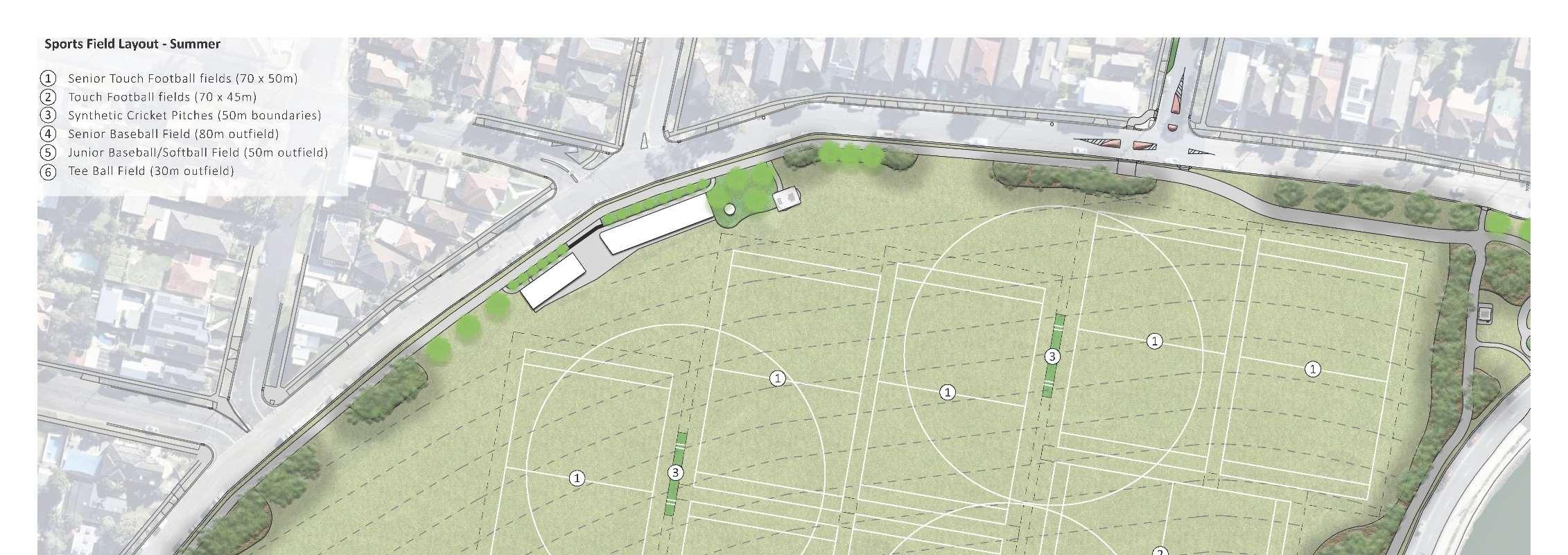


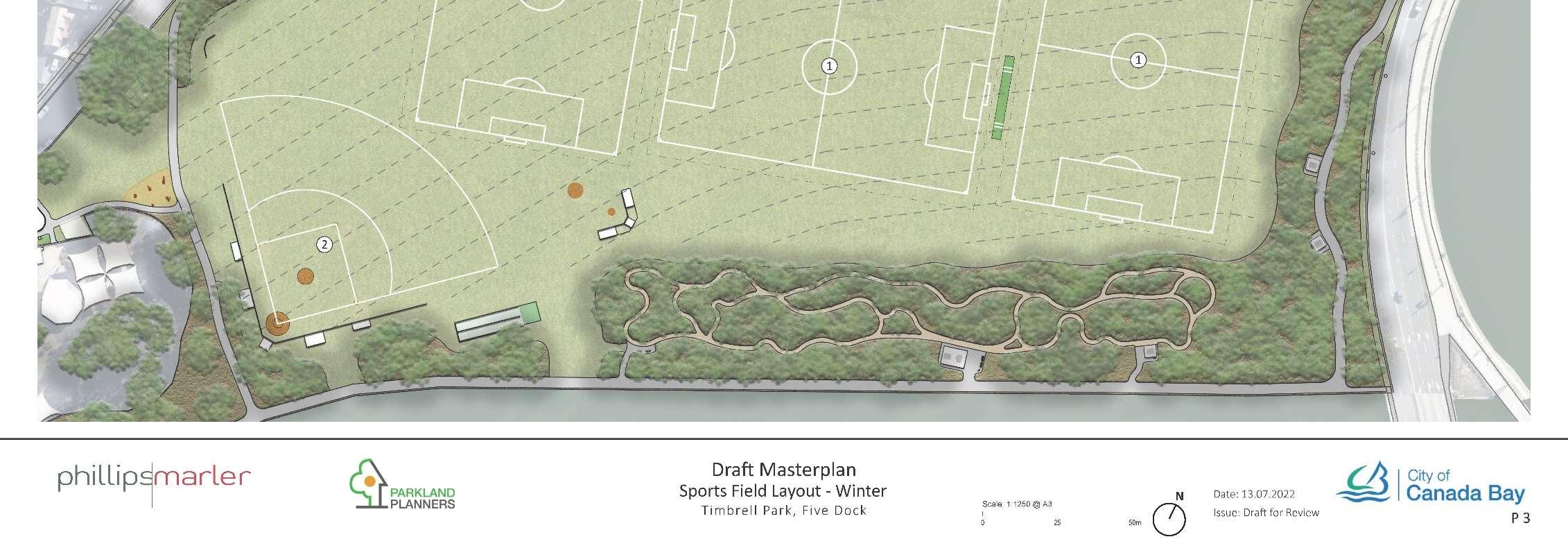
The Local Government Act 1993 requires Plans of Management for community and Crown land to:
contain performancetargets.
specify the means of achieving objectives and performance targets.
specify howachievement of the objectives and performance targets is tobe assessed.
This section outlines the actions required to implement the management direction for Timbrell Park, consistent with the six principles ofthe Canada Bay Open Space and Recreation Strategy 2019.
Across all of the six principles is the preparation of an Operational Management Plan that will be reviewed annually soadjustments can be made to meet the objectives of the Plan of Management.
Heading Explanation
Item Anissueorneedtobeaddressed,oranopportunity.
Objectives/ performance targets
Targets/strategiestoachievevisionandobjectivesforTimbrellPark. Theyreflectthe valueofTimbrellPark,andprovidedirectionfortheaction.
Actions Specifictaskoractionrequiredtoaddressissues/needs,consistentwithachieving theobjectives/performancetargets
Meansof assessing performance
HowCouncilintendstomeasureandassessitsperformanceinimplementingand achievingtheactionovertime.
Resource Capitaloroperationalbudgetorexternalfunding
Address current and future gaps by realising the capacity of existing open space and recreation facilities.
Item Objectives/ performance targets
Sporting fields Providean enhancedlevel, safeplayingfield surface
Improvedrainage toreduceriskof flooding
Actions
Meansof assessing performance
Resource
Regradethesportsfieldstofallat 0.75%towardsIronCoveCreek
Installfielddrainageandirrigation system
Increaseinturf quality
Increaseinthe numberofdays thatfieldsare availablefor sportinguse
Reductionin injuriesfromfield surface
Capital budget
Capital budget
Caterforthe needsoftouch football,cricket, soccerand baseball
Facilitatemultipurposeuseof thesportingfields
Improvelighting ofsportingfields fortrainingand competition
Providelighting dependingonthe sportsground classificationand intendeduse
Caterfordogoff leashexercise
Reconfigurethesportingfields to:
- 7senior+2juniortouch footballfields(summer)/5 soccerfields(winter)
- 3syntheticcricketpitches
- 1seniorbaseball,1junior baseball/softballand1teeballdiamonds
PrepareandimplementaSports LightingPlanfortrainingand competitionconsistentwithuser needs.
Increasein utilisationoffield space
Operational budget
Livvi’s inclusive playspace
Ensuretheplay spaceissafefor usersandcarers
Supportinclusion andsocial interactions
Investigateoptionsforoffleash dogexercisewhenexistingoff leashareaisnolongerfitfor purposeduetostormwatercanal widening.
Positivefeedback fromsportingusers
Operational, Capital budgets
Extendandupgradethe playgroundforallagesin consultationwithallstakeholders
Investigation undertakenand implemented including appropriate installationof associated infrastructure(bins andbagsetc.)
Positivefeedback fromchildren, parentsandcarers
Operational, Capital budgets
Capital budget
Simplify maintenance requirements
Redesigntheplayground, includingremovingormodifying gardenbeds
Placebinsinsidetheplayground
Playground redesigncomplete
Capital budget
Reductionin volumeofrubbish onthegroundin theplayground
Operational budget
Deliver open space and recreation facilities, services and programs to cater for the informal and formal recreation needs of the diversity of age groups, cultures and genders.
Item Objectives/ performance targets
TheLiving Room Providean activatedindoor/ outdoor communityspace tosupport informal recreationand community gatheringsinthe park
Effectiveongoing managementof TheLivingRoom
Actions
Meansof assessing performance
Resource
Replacethedemountablecafé adjacenttoLivvi’sPlayspacewith apermanentcommunityfacility the“LivingRoom”withalarge kitchen/foodpreparationspace, indoorandcoveredoutdoor seatingoptions,additional storageroomsandanadditional indoorgeneral-usecommunity space.
Enterintoalease/licence agreementwithTouchedby OliviaforTheLivingRoom
Construction complete. Positivefeedback fromlocal residentsandthe community
External funding
BMX/ mountain biketrails
Caterforawide rangeofBMX/ mountainbike ridingskilllevels
ReplacetheexistingBMX/ mountainbikepathwith formalisedtrailswithmultiple circuitvariationsandobstacles
Installseveralbreakoutspaces withseatingandsheltersbetween thenewsharedpathandBMX/ mountainbiketrails
Leaseexecuted andmanaged
NewBMX/ mountainbike course
Positivefeedback frombikeriders
Breakoutspaces installedandused
Operational budget
Capital budget
Ensurethatthe biketrailsare visiblefromthe circuitpathand sportsfields
Fitness equipment Offeran opportunityto improvephysical fitness
Thinthetreecanopytoensure sightlinestothebikefacility
Capital budget
Provideavarietyofexercise equipmentsuitableforallages
Lineofsighttothe biketrailsfromthe circuitpathand thesportsfields
Installationof exercise equipment complete
Operational budget
Capital budget
Item Objectives/ performance targets
Actions
Meansof assessing performance
Observationsof use
Resource
Picnicand barbecue facilities
Provide opportunitiesfor picnicsand socialgatherings
Cricket nets Improvethe conditionand safetyofthe cricketnets
Installnewpicnicsheltersalong theupgradedsharedpathset backfromTimbrellDrive
Installationof exercise equipment complete
Observationsof use
Capital budget
Sports amenities
Provideimproved facilitiesand amenitiesto reflect community needs
Maintainexistingpicnicand barbecuefacilities
Maintainandupgradecricketnets consistentwithuserneeds
Trim/removeoverhanging branchesabovethecricketnets
Constructanamenitiesbuilding onHenleyMarineDrive,with expandedandenhancedchange rooms,publictoilets,new canteen,coveredspectator areas,multiplestoreroomsfor sportingusergroups,andindoor general-usecommunityspace
Improvementin condition assessment
Improvementin condition assessment
Overhanging branchestrimmed orremoved
Amenitiesbuilding constructionis complete
Operational budget
Operational, Capital
Operational budget
Capital budget
Storage Encourage sharedstorageof sportequipment inbuildings wherepossible
Seating Provideseating inappropriate locations accordingtouser andstakeholder needs
Drinking water Providedrinking waterforpark users
Liaisewithbaseball/Livvi’sPlace regardingsharedstoragespace inconjunctionwithproposednew facilities
Storageissues resolved. Equipmentstored inbuildings
Operational budget
Provideseatinginappropriate locationsasshownonthe Masterplan.
Seatinginstalled Observationsof useofseats
Capital budget
Installnewdrinkingwaterand refillstationsconsistentwithuser needs
Drinkingwaterand refillstations installed
Observationsof use
Capital budget
Improve accessibility, connectivity to open space and recreation facilities, services and programs through green walkable streets, active transport links, affordable access, universal design, and equitable distribution.
Item Objectives/ performance targets
Internal park access
Provideuniversal accesstothe parkcircuitpath andtothe playground, LivingRoomand newamenities building
Actions
Meansof assessing performance
Resource
Constructanewsharedpathto theedgeofIronCoveCreek
Upgradethesharedpathtothe northernandwesternedgesof thesportsfields
Upgradethesharedpathonthe easternedgeofTimbrellDrive
Constructanaccessiblepath fromHenleyMarineDrivetothe playground
Pathconstructed Observationsof use
Capital budget
Pathupgraded Capital budget
Pathupgraded Capital budget
Pathconstructed Capital budget
Enhancefitness activities
Increaseevening useofthepark
Installnewdistancemarkers aroundtheinternalsharedpath
Installpathlightingconsistent withrelevantstandards
Distancemarkers installed Capital budget
Pathlighting installed
Lightingmeets relevant standards
Capital budget
Pedestrian and cycle access to the park
Facilitate pedestrianand cycleaccessto thepark
Improvesafetyof pedestriansand cyclists
Improvesight linesinboth directionsfor walkersand riderscrossing HenleyMarine
Constructaseparated pedestrianandbicycleentryto TimbrellParkfromtheBayRun withupgradedpedestrian crossingoverTimbrellDrive
Upgradethecrossingover HenleyMarineDrivetoconnect withtheproposedon-roadcycle laneaspartoftheproposed ConcordtotheBayCycleway
Constructpathconnectionwith theproposedelevatedcycleway
Upgrade/ constructionof sharedpaths complete Increasein numberof pedestriansand cyclistsusingthe paths
Capital budget
Item Objectives/ performance targets
Driveand TimbrellDrive
Actions
Meansof assessing performance
Resource
overIronCoveCreekand DobroydParadelinkingthepark toHaberfield
Connectnewandexistingpaths withtheproposedsharedpath aspartoftheproposedIron CoveCreekCanalNaturalisation works
Mark‘NoStopping’zonesacross allpedestrian/cycle/pramramps betweentheparkandHenley MarineDrive
“NoStopping’ zonesmarked Observationsof unimpeded accesstopaths bypedestrians andcyclists
Operational budget
Link to Iron Cove Bay Run
LinkTimbrell ParkwithRobson ParkandtheIron CoveBayRun
Increase opportunitiesfor community recreation Further encourage sustainable transportoptions
Bike parking Improvethe securityofbikes forparkusers
Vehicle access Ensurecontrolled butunimpeded accessfor authorised vehicles
LiaisewithInnerWestCouncil aboutremovingthedamaged/ redundantpedestrianbridge acrossIronCoveCreeknorthof theplayspace
Investigatefurtheroptionsto enhancepedestrianandcyclist accesstothepark
WorkwithInnerWestCouncilon anintegratedandjointly developedmasterplanaswell asanoperationalplanforthe IronCoveBayRunwhich strategicallyassesseslinkages, wayfinding,accessibilityand eventmanagement.
Removalofthe pedestrianbridge complete
Operational ,Capital budgets
Options considered
MasterPlanand OperationalPlan fortheBayRun complete
Operational budget
Operational budget
Installbikeracksinappropriate locations
Increasein numberand locationofbike racksinthepark
Capital budget
Locateandmanagevehicle accesspointstoallbuildings, sportingfieldsandotherhigh activityareas
Maintainservice,management andemergencyvehicleaccess points
Appropriate service, managementand emergency vehicleaccess pointstoall buildings,sporting
Capital budget
Item Objectives/ performance targets
Actions
Meansof assessing performance
Signage Assistparkusers withwayfinding andunderstandingpark rules
Establishalternativeserviceand emergencyvehicleaccesspoints wherefeasible.
Reviewwayfindingand regulatorysignage
Installadditionalsignageif required.
fieldsandother highactivityareas
Reviewcomplete
Signageinstalled
Increasein compliancewith parkrules
Operational budget
Capital budget
Work in partnership and plan collaboratively with the private sector, government agencies, peak bodies and local sporting clubs to share space and deliver new open space and recreation facilities.
Item Objectives/ performance targets
Relationship withCrown Lands
Relationship withVariety Livvi’sPlace
Fosterastrong working relationshipwith CrownLands
Fosterastrong working relationshipwith VarietyLivvi’s Place
Actions
Meansof assessing performance
Resource
Continuetoworkinpartnership withCrownLandsasthe landownerofthemajorityof TimbrellPark
Continuetoworkinpartnership withVarietyLivvi’sPlaceonthe provisionofinclusiveplay facilitiesandtheproposedLiving Roomfacility
Quarterlycontact withCrown Lands
Liaisonas appropriate
Operational budget
Community and stakeholder engagement
AdviseCouncil aboutparkissues, useand management
Provideaconduit foradjoining residentsandthe widercommunityto Councilaboutthe park
Considertheestablishmentofa TimbrellParkAdvisoryGroup comprisingrepresentativesof groupswhouse,havearoleor interestin,orarelikelytobe affectedbyuseandmanagement ofthepark
Informlocalresidentsregarding useoftheparkforlargeevents. ProvideCouncilcontactnumbers toreportnoise,parking infringements,litterorforother complaints.
Consideration complete
Establishmentof TimbrellPark AdvisoryGroupif desirable
Nocomplaints/ positivefeedback fromlocal residents
Operational budget
Operational budget
Operational budget
Provideapointof contacttoCouncil forparkusers Ensurecompliance withparkrules,
Maintainranger/enforcement patrolswithinandaroundthe park
Ranger/ enforcement patrollogbooks
Operational budget
restrictionsand regulations
Deteranti-social behaviour
Addresspossible oremerging securityissues
Be adaptable and future-proof open space for growth through co-located, multipurpose, shared use, diverse and flexible spaces.
Optimise recurrent asset management and maintenance costs.
Item Objectives/ performance targets
Fitfor purpose
Allfacilitiesarefit forpurpose
Actions
Meansof assessing performance
Resource
Undertakeregularcustomer satisfactionandusersurveysto accuratelyidentifyneeds
Surveys undertaken
Operational Budget
Asset Management
Manageassets consistentwith Asset Management Plan
Monitordefectperiodsforall facilities Monitoring program
Developacomprehensive DefectsRegister
PrepareaprecinctwideAsset ManagementPlanincorporating:
playingfields
buildings
informalrecreation
cycleway
DefectsRegisteris developed
Asset ManagementPlan completed
Operational Budget
Operational Budget
Operational Budget
Utilities and Services
Facilitydesign includes
Workwithutilityandservice providersonfacilitydesignto provideaccessasrequiredto utilitiesandservicesand minimiseongoingdisruptionto users.
Designprocess/ protocolagreed withutilityand serviceproviders.
Operational Budget
Be environmentally and financially sustainable through the provision of recreation facilities and programs that:
protect and enhance connections to nature, biodiversity, ecology and mitigate the impacts of climate change;
remain fit for purpose through quality maintenance and asset management.
Item Objectives/ performance targets
Iron Cove Creek Canal Naturalisation
Partiallyreinstate naturalcreek conditions
Providehabitatfor invertebratesand birds
Minimiseflooding fromsevererain eventsandhigh tides
Contamination Effective managementof contamination
Actions
Replacethesectionof concretecanalbetween RamsayStreetandWaratah Streetwithacombinationof rocks,nativeplants,sandstone blocksandcoastalsaltmarsh flats
Continuetowork withSydney Wateron
completionofthe stormwater wideningproject
Resource
ExternalSydney Water funds
Soilcontamination Managesoil contamination
Allcontaminatedmaterialson sitearemanagedin accordancewitha RemediationActionPlan (RAP).
DevelopaSiteActionPlan (SAP)whichallfuturecapital workswillberequiredto complywith.
Reviewagainst RAP
Capital Budget
Completionof SAP
Allfutureworks reviewedagainst SAP
Capital Budget
Operational Budget
Use of chemicals
Complywith acceptedhealth andenvironmentalstandards
Minimiserun-off intolocal waterways
Addressanyhazardous materialissues/risks associatedwiththepark’s dredgingandreclamation historyas/whenthesebecome knowntoCouncil.
Managefertiliser,herbicide, pesticideandotherchemical useonthepark’ssporting fields,opengrassareas, gardenbedsandelsewhere
Respondas appropriate Operational Budget
Ongoing compliance
Operational Budget
Item Objectives/ performance targets
Waste management
Ensurethatall wastegeneratedat TimbrellParkis effectivelyand efficientlymanaged
Encourageand promotewaste minimisationand recyclingbypark users
Actions
Meansof assessing performance
Resource
Continuetooperate/maintaina wastemanagementsystemat thepark
Reviewthewaste managementplan
Includewasteminimisationand recyclingrequirementsaspart offutureuseagreementsand aspartofthepermits/ approvalsformajorevents
ReviewWMP annually
Operational Budget
Climate change
NetZeroemissions fortheprecinctby 2030
Independent verificationof sustainability performance
Climateresilient precinct
Undertakeannualemissions audits
Achieveenvironmental certificationoftheprecinctby 2025(e.g.GreenStar,ISO 140001and/orCarbonNeutral)
Prepareaprecinct-wide ClimateChangeManagement Planaddressingclimaterisk, resilience,netzeroemissions, canopycoverandbiodiversity andecologicalvalues
Reviewandreportpubliclyon theClimateChange ManagementPlan
Waste minimisationand recycling requirement includedinfuture useagreements andpermits/ approvalsfor majorevents
Emissionsaudit results
Environmental certificationby 2025
Completed ClimateChange Management Plan
Operational Budget
External and Operational Budget
Operational Budget
Reportspublicly available
Operational Budget
Energyand resource consumption
Sportinglicencees andorganisations reduceimpactson climate
Usersreduce energyand resource consumption
Developpartnershipswith licenceesandorganisations advocatingforclimateactionin sports
Review/auditenergy consumptioninthepark.
Identifyactionstoreduce energywastageandoverall usagelevels.
Includeutilityandsustainability clausesinallleaseandlicence agreements–separate metering,directbilling, requirementtomonitorand reporttoCouncil.
Partnerships established
External and Operational Budget
Auditcompleted
Outcomesfrom audit
Alllicencesand leasesinclude utilityclauses
Utility consumption monitoredand reported
Operational Budget
Operational Budget
External and Operational Budget
Item Objectives/ performance targets
Actions
Meansof assessing performance
Resource
Wateruse Minimisepotable waterusebypark usersandinpark maintenance Minimiseimpacts offlooding
Investigateopportunitiesfor electricvehiclecharging opportunitiesforparkusers
Investigation complete Installelectric vehiclecharging opportunities
Capital budget
Review/auditwater consumptioninthepark.
Identifyactionstoreducewater wastageandoverallusage levels.
IncorporateWaterSensitive UrbanDevelopment(WSUD) principlesintoparkdesign
Undertakeinvestigationsinto stormwaterharvestingto irrigatetheupgradedsports fields
Investigatediscretelocations forirrigationtankstominimise impactonviews
Review/audit complete
Actionsidentified
Operational budget
Operational budget
WSUDprinciples reflectedinthe park
Investigations complete
Capital budget
Operational budget
Ecology Improvementin ecologicalvalues oftheprecinct
Monitorecologicalvalues (includingcanopycover)ofthe precinct
Includeanecological enhancementactionplaninthe ClimateChangeManagement Plan
Agreedlocations forirrigation tanks
Nonetdecrease incanopy
ClimateChange Management Planincludesan ecologicalvalues enhancement actionplan
Operational budget
Operational Budget
Operational Budget
Treeplanting Increaseurbantree canopyanddeliver GreenGrid connections, includingensuring thatMasterPlans andPrecinctPlans Strivetoachieve 25%canopycover.
Increasetree canopywhile facilitatingviewsof thewater
Plantlow-growing,spaced treesontheHenleyMarine Drivenorthernandwestern perimeter
Planting completed
Operational Budget
Investigateandengagewith localresidentsonplanting treesalongHenleyMarine DriveaspartoftheIronCove CreekCanalNaturalisation
Investigations completed Operational Budget
Item Objectives/ performance targets
Treesafety Ensurethattrees arehealthy Minimiseriskof treesandbranches toparkusers
Gardenbeds Improvethevisual amenityofthepark edges
Vegetation links Improvethe structureand conditionof existingplanted habitat Linkisolated patchesof revegetation
LinkTimbrellPark withRoddPoint
Financial sustainability Ensuresufficient resourcesare availableto operateand maintainfacilities
Actions
Meansof assessing performance
Resource
Periodicallyundertakeatree assessment
Carryoutnecessaryactionsto isolate,ormakesafe,any hazardoustrees
Establishnewgardenbeds accordingtotheMasterplan
Establishagroundcoverand understoreycomponentat TimbrellPark
Assessments completed
Actresponsively toissues
Gardens completed
Groundcover andunderstorey planting completed
Operational Budget
Operational Budget
Operational Budget
Operational Budget
Plantnativegrassesand groundcoversalongHenley MarineDriveforfaunafood source,habitatandmovement
Maintainallfacilitiestothe requiredstandardandlevelof service
Allocateappropriateresources tomanagethefacility
Planting completed
Operational Budget
Annualbudget review
Operational Budget
Capitaland
Operational Budget
Item Objectives/ performance targets
Park information
Ensureaconsistent ‘look’forpark signage
Ensurepark informationisupto date
Actions
Means of assessing performance
Resource
Developaconsistentpark signagepalette
Parksignage paletteagreed
Operational budget
Use of technology
ImplementCouncil’s SmartCityStrategy
Installtechnologyto assistCouncilwith parkmanagement
Regularlyreviewandupdate informationaboutTimbrell ParkonCouncil’swebsite
Providefreewi-fiinTimbrell Park
Installremoteaccessto sportslighting
Providesmartaccessto amenities
Informationon Council’s websiteupdated asrequired
Operational budget
Wi-fiprovided Capital budget
Installation complete Operational Budget
Smartaccessto amenitiesin place
Operational Budget
Cultural heritage
Protect,manageand interpretAboriginal culturalheritage significanceofthe park
Retain,protectand interpretfeaturesor sitesofEuropean/ historicsignificance orinterestinthepark
Prepareandinstall interpretivesignage
Signage installed
Operational Budget
Anti-social behaviour
Reduceincidencesof anti-socialbehaviour inthepark
ConsiderCrime
PreventionThrough Environmental Designprinciplesin planning,location, designandmanagementofparkfacilities andspaces
Activatetheparkat night
Increasepassive surveillance
Reducedarkplaces inthepark
Investigateinterpretationof theWorldWarIIgun emplacements
Considerinterpretivesignage aboutdevelopmentofthe park
Undertakedayandnight auditsoftheparkinresponse toanti-socialissues
Considerholdingcommunity eventssuchasnightmarkets ormovienightsinthepark, andallowinguseofthepark bypetownersatnight
Considerlightingthefootpath aroundthepark.
Trimandmaintainlargetrees
Investigation completed
Operational Budget
Investigation completed Operational Budget
Audits completed Operational Budget
Numberof events undertaken
Operational Budget
Investigations completed Operational Budget
Maintenance undertaken Operational Budget
This page is left blank intentionally
Timbrell Park will continue tobe managed by Cityof Canada Bay as land owner and Crown Land Manager in terms of facility management, use, improvements and maintenance.
Council will have oversight of any use agreements for activities on the site.
Day-to-day management of any leased and licenced areas willbe the responsibility of any lease or licence holder according tothe terms of the lease or licence agreement.
Allocation of staff formanagement, maintenanceand capital works will be monitored by Council on an ongoing basis toensurethat standards aremaintained. If new facilities or extensive works arerequired then the need for additional staff or contractors will be assessed.
Development of newfacilities will be carried out only by Council staff or contractors engaged by Council. Council may also engage contractors toassist with the maintenance of Timbrell Park.
Once a Plan of Management for a Crown reserve has been approved and adopted by the Minister, the Crown Land Manager must carry out and give effect to the plan. Once City of Canada Bay adopts this Plan of Management it is Council’s responsibility to implement this Plan of Management.
Implementation of actions in this Plan ofManagement according to their assigned priorities will be monitored through the preparation of annual performancereports, budgets, and capital works programs.
It should be recognised that commencement and completion of the actions in this Plan of Management depends on available Council resources, funding, and Council’s priorities in its annual works program. The priority of each action should be reassessed annually to determine if the stated priority is still relevant.
Implementation of this Plan of Management willbe monitored through the preparation of annual operational and capital works programs and budgets. Performance standards and works programs for administration, maintenanceand upgrading works arerevised each year to meet allocated budgets and works priorities determined in Council’s Resourcing Plan.
City of Canada Bay Council can take several approaches infunding the implementation of this Plan ofManagement, including:
Council sources, including capital funds, developer contributions, fees and charges for use
Partnerships with sporting and other user and community groups
Applying for Commonwealth and state government grants, including Crown Reserves Improvement Fund, sports and recreation, heritage, and environmental.
CouncilwillreportontheprogressofimplementingthisPlanofManagementinthe followingways:
withinCouncil’sIntegratedPlanningandReportingframework
includingachievedandproposedactionsinitsquarterlyandannualreports
whenpreparingcapitalworksandmaintenancebudgets
Issuingmediareleasesandinformationonitswebsite
providinginformationflyersandnewsletterstoadjoiningresidentsandother stakeholders.
This Plan of Management will require regular review in order to align with community values and changing community needs, and toreflect changes in Council priorities. Council has determined that it will review the Plan of Management within 5 to 10 years of its adoption. However, the performance of this Plan of Management as set out in the Action Plan willbe reviewed on an annual basis to ensurethat TimbrellPark is being managed in accordance with the Plan of Management, is well maintained, and provides asafe environment for public enjoyment.
Council may continue toacquire or divest land for the benefit ofthe community. Landmay also comeinto Council’s ownership by dedication of land for open space.
The community will have the opportunity toparticipate in reviews of this Plan of Management.
City of Canada Bay (2007) Generic Plan of Management
City of Canada Bay (2013) Canada Bay Local Environmental Plan 2013. http://www.legislation.nsw.gov.au
City of Canada Bay (2014) Public Art Plan 2014.
City of Canada Bay (2017) Disability Inclusion Action Plan 2017-2021
City of Canada Bay (2019) Dogs in Public Places Strategy 2019
City of Canada Bay (2019) Let’s All Play Strategy 2019
City of Canada Bay (2019) Timbrell Park Off-Leash Dog Trial: Community Engagement Outcomes Report
City of Canada Bay (2020) Canada Bay Local Strategic Planning Statement.
City of Canada Bay (undated) City Planning Framework: Landscape and Visual Assessment.
Cred Consulting (2019) Social Infrastructure (Open Space and Recreation) Strategy and Action Plan. Prepared for City of Canada Bay, September.
Department of Planning and Environment (2019) Everyone Can Play: A Guideline to Create Inclusive Playspaces
Department of Planning and Environment (2019) Greater Sydney Outdoors Study
Dominic Steele Consulting Archaeology (2020) Aboriginal Archaeological and Cultural Heritage Assessment: Timbrell Park, Henley Marine Drive, Five Dock – Proposed Parklands Improvements and AHIP Application for AHIMS #45-6-3322. Prepared for City of Canada Bay, March.
Drummoyne Council(1994) Plan of Management for Timbrell Park.
Eco Logical Australia (2019) Canada Bay Biodiversity Framework and Action Plan. Prepared for City of Canada Bay.
EnvironmentalInvestigation Services (2010) Report to City of Canada Bay Council on Environmental Management Plan and Quantitative Risk Assessment for Proposed Light Poles at Timbrell Park, Henley Marine Drive, Five Dock. Prepared for City of Canada Bay, September.
Gondwana Consulting (2006) Aboriginal Cultural Heritage Study and Management Plan for the City of Canada Bay. Prepared for City of Canada Bay
Government Architect NSW (2017) Greener Places: establishing an urban green infrastructure policy for New South Wales
Greater Sydney Commission (2017) Our Greater Sydney 2056: A Metropolis of Three Cities – connecting people.
Greater Sydney Commission (2017) Eastern City District Plan.
GTA Consultants (2019) Local Movement Strategy. Prepared for City of Canada Bay.
InSight Ecology (2014) The Fauna of City of Canada Bay Local Government Area: 20132014
NSW Office of Sport (2019) Eastern City District Sport Facility Information Pack
Perumal Murphy Wu Pty Ltd(1999) Concord Heritage Study Review-Final Report. Prepared for Concord Council.
Seed Consulting Services et. al. (2019) City of Canada Bay Urban Tree Canopy Strategy
Prepared for City of Canada Bay.
Transport and Urban Planning (2014) Strategic Review of the Canada Bay Bike Plan.
Prepared for City of Canada Bay.
TyrrellStudio and Officeof the Government Architect (2017) Sydney Green Grid: Spatial Framework and Project Opportunities
Settlement began in the Five Dock area in around 1793. Aportion of theeastern edge of the now TimbrellPark was a part of a 480-acre Crown Grant toNicholas Bayley on 9 August 1803.
Five Dock was progressively settled and developed in the mid19th century as shown in Figure 4(Perumal Murphy Wu, 1989).
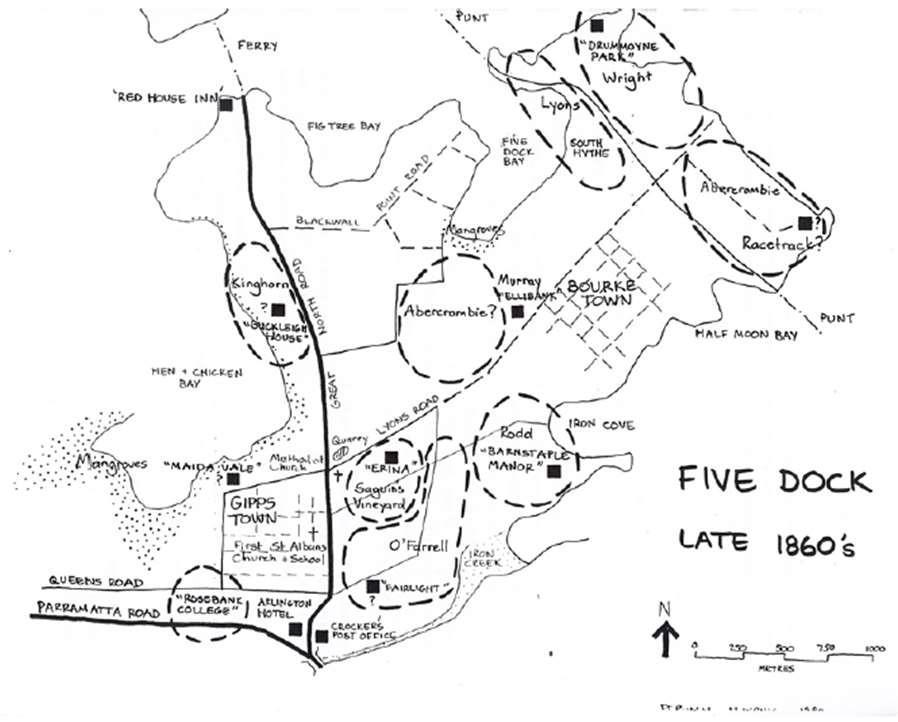
A soap factory was situated north of what is nowTimbrell Park on Iron Creek in the 1840s.
Settlement and development of Five Dock in the 1840s and 1860s
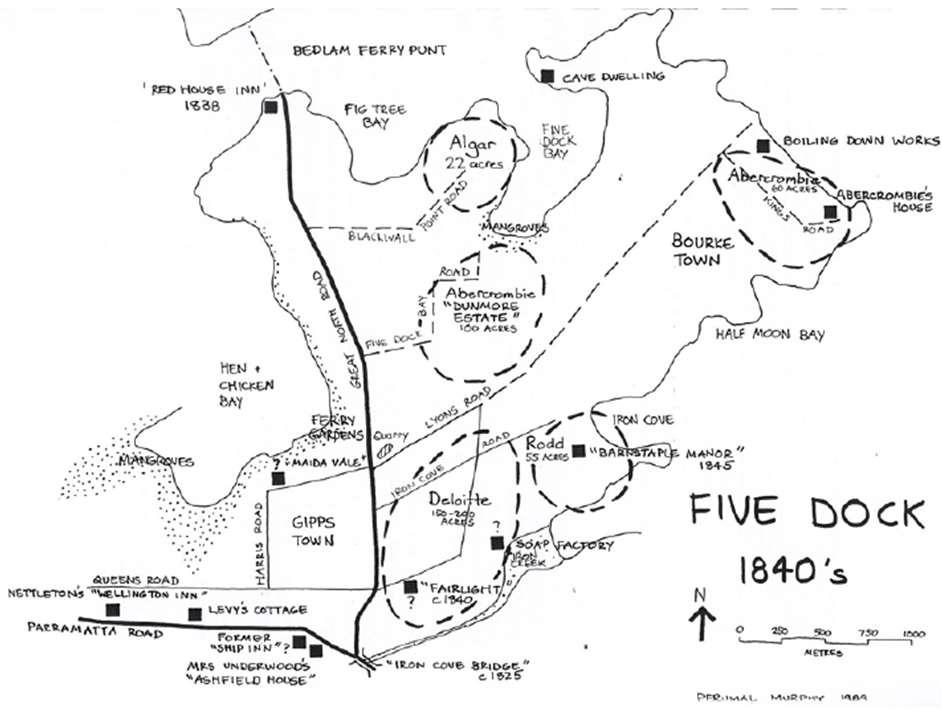
The Henley Marine Drivewas under construction in 1910.
The easterntwo-thirds or more of Timbrell Park was dredged and reclaimed from Iron Cove as part of foreshore reclamation and site infill programs inthe 1920s and 1930s, responding to local pressure for land for parks and open space as well as residential and industrial use.
The park’s potential as a sports venue was recognised in the 1930s. Historical records show that the Hon. Secretary of the Balmain and District Cricket Association requested Councilto “provide a temporary wicket until such timeas the filling of the swamp is completed”. Council agreed to the request and two wickets were provided for the 1938-39 season. InJuly 1939 the NSW Women’s Amateur Sports Councilapplied toCouncil to use the reclaimed area which it regarded as “ideal for women’s sport …”. Baseballand hockey were also played at Timbrell Park duringthe 1930s and 1940s. Over the years Timbrell Park has also supported sporting and recreational activities such as soccer, athletics, touchfootball, rugby, dog trials, rod casting tournaments, and schoolsport.
Timbrell Park was named in 1942 after T. Timbrell, a former Mayor and Alderman of Drummoyne Council.
A 1943 aerial photo of Timbrell Park (figure below) shows four gun emplacements and possibly a radar station in the park during WorldWar II. At that timeIronCove Creek had been canalised with onevehicle and twopedestrian crossings.
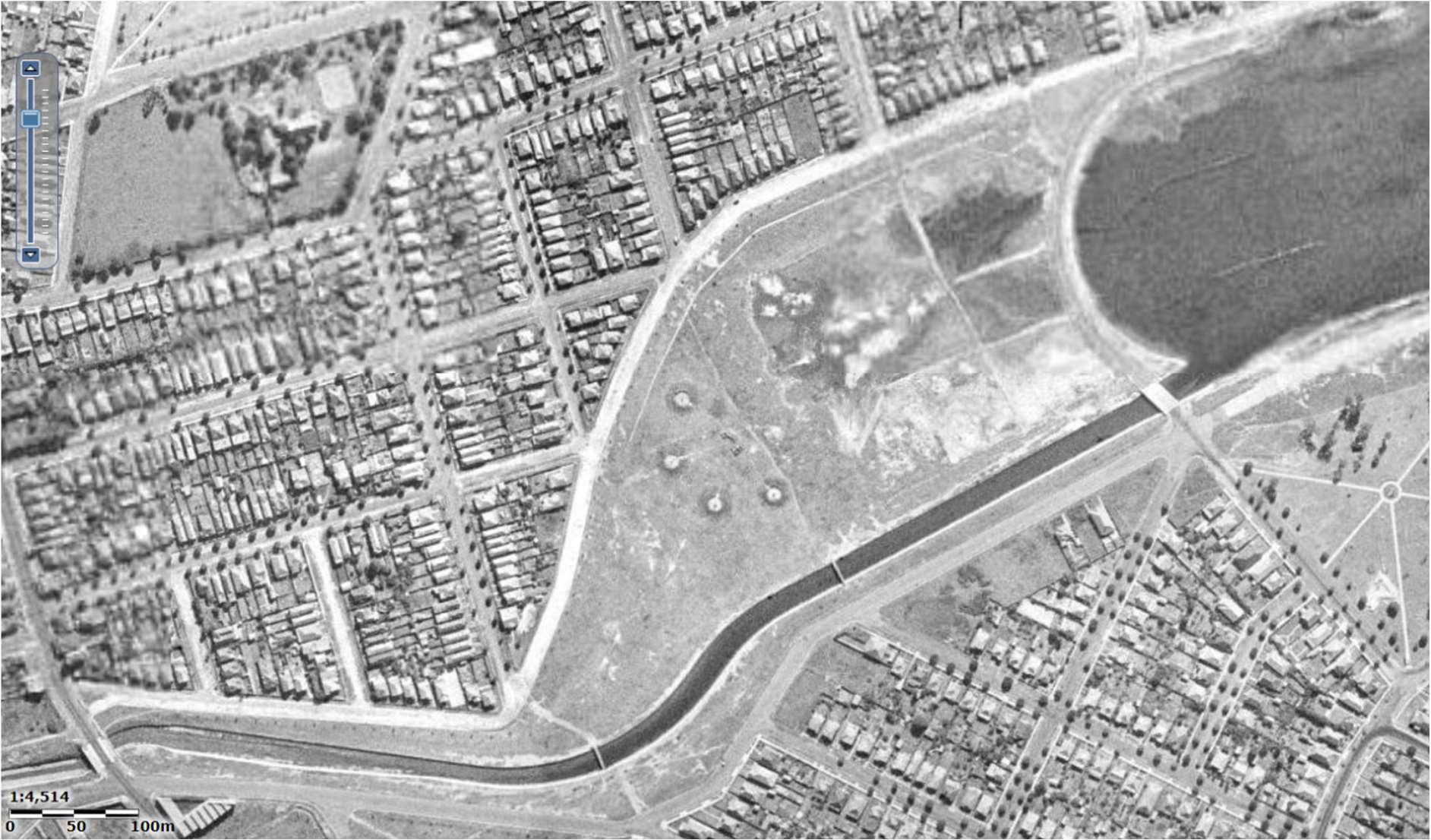
At about this time alocal resident recalls locals swimming in amuddy waterhole in themiddle of the current playing fields area. The muddy area was planted with vegetation when the playing fields were constructed.
On 22 September 1944 most of Timbrell Park was reserved as Crown land for public recreation. Drummoyne Council was appointed trustee under Section 344of the Local Government Act 1919
A feasibility study to “provide a wetlands area in the park torecreate part of the original ecosystem”was undertaken in early 1995.
In 1998 Council successfully secured aMetropolitan Greenspace grant from the NSW Department of Planning, which funded the Stage 2 upgrade of the BMXtrack, and planting in Timbrell Park. Stage 2 of the BMX track was opened by the Mayor Michael Megna on 13 September 1998.
Livvi’s Place playground, one of the first fully inclusive facilities in Sydney, was planned and constructed by the Touched by Olivia Foundation and Canada Bay Council at acost of $1.23 million, and was openedin 2009. Livvi’s Café was opened on 5 August 2014.
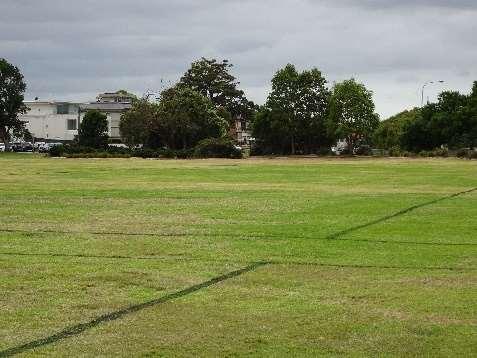
Condition ratings:
1. Excellent - No/Minimal Maintenance Required
2. Good - Minor Maintenance Required
3. Fair - Significant Maintenance Required
4. Poor - Significant Renewal / Upgrade Required
5. Very Poor - Asset requires replacement.
Condition of sporting and active recreation areas in Timbrell Park





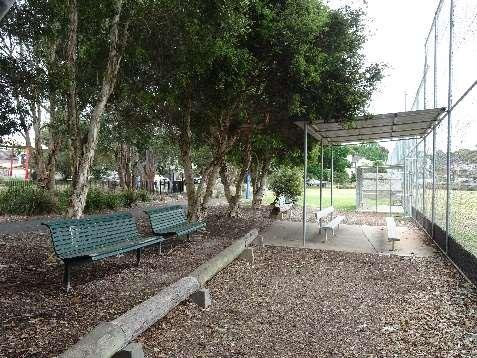

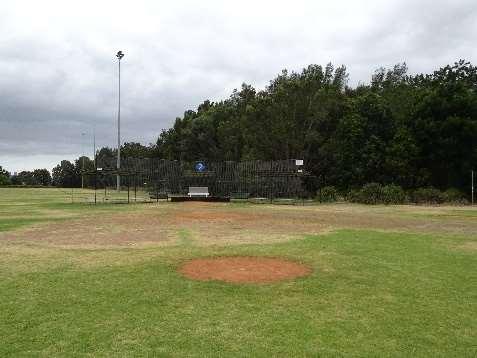
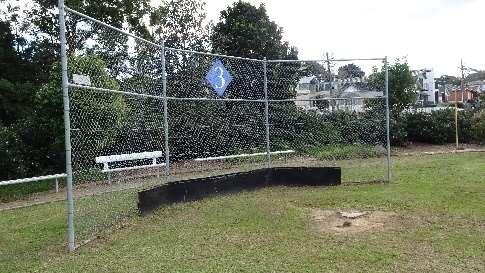
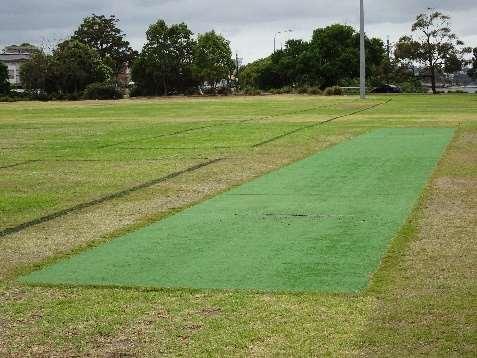


Item and description Condition Images
Amenities building 5when complete
Baseball clubhouse Canteen

Undercover seatingarea
3
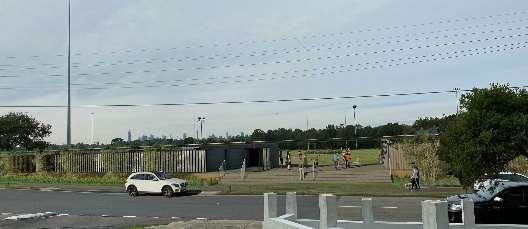
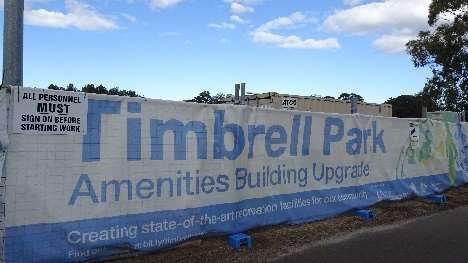
Item and description Condition Images
Livvi’s Place Allabilities
playground
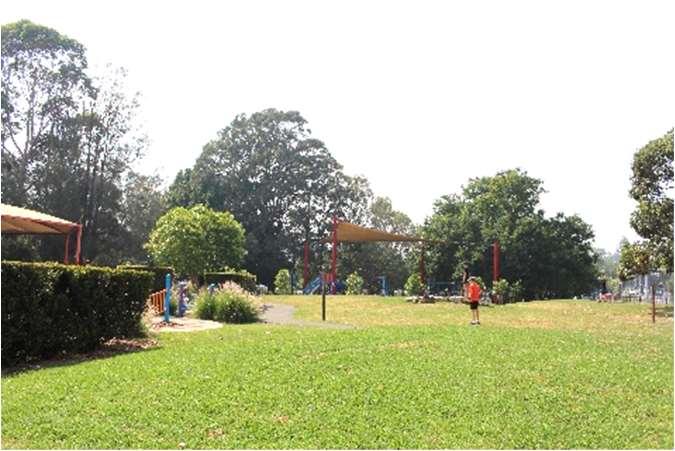
Snakesand ladders activity path, carousel, accessible slide, modified tandem stampede rider,chime piano,birds nestswing, squeaky tyres,flying fox,paths. Picnic tablesand barbecues. Softfall, sandand barkmulch Shadesails
3-4


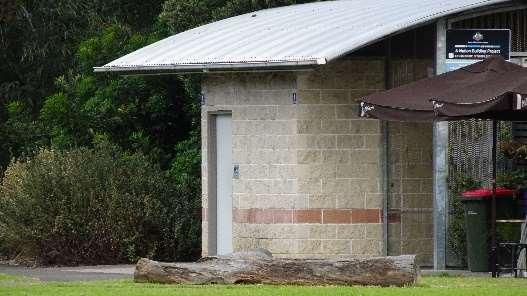
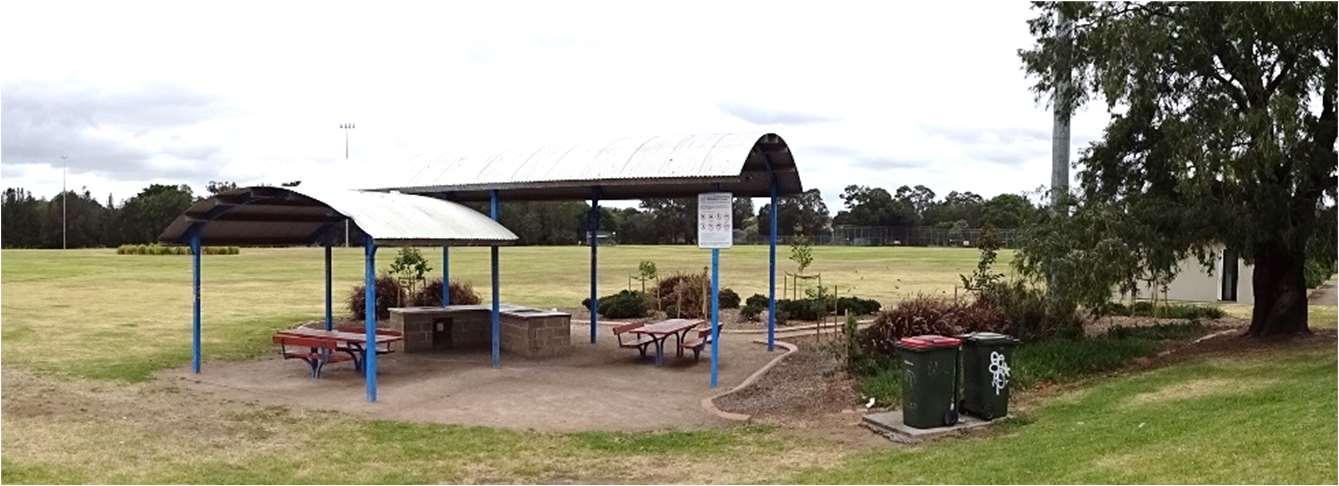




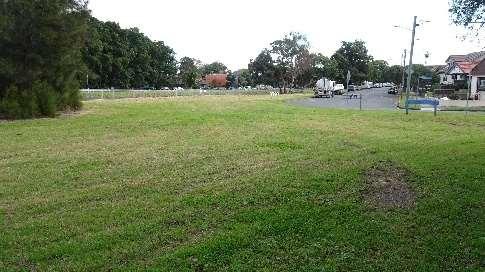
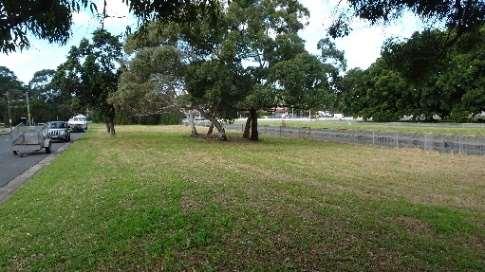


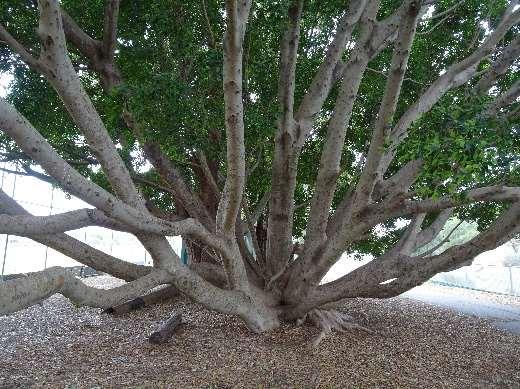
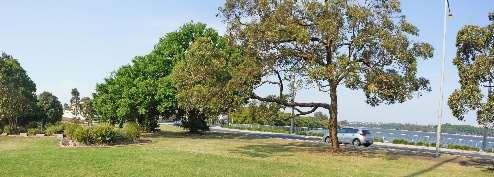


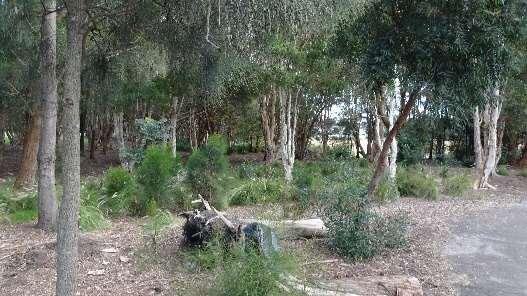
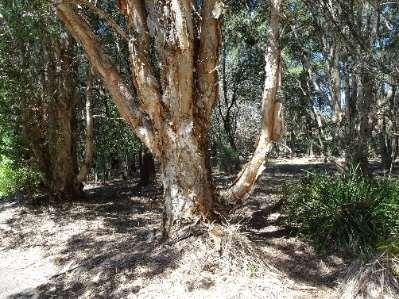

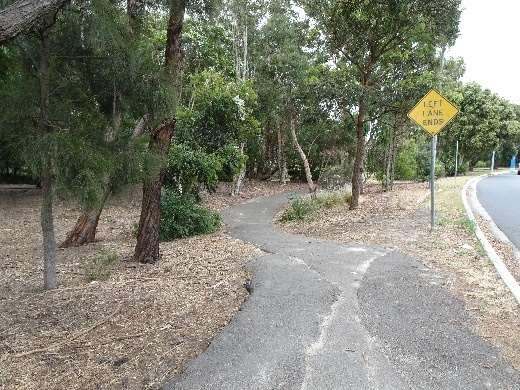
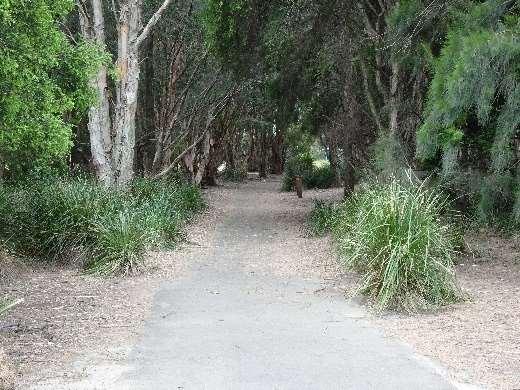

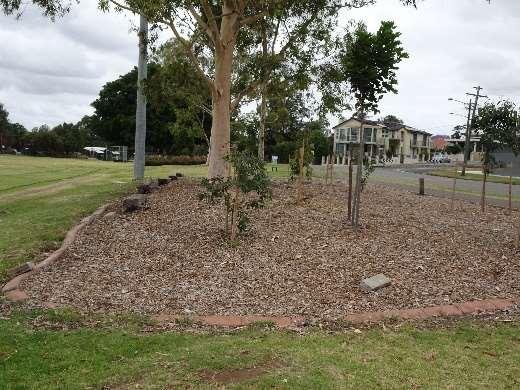
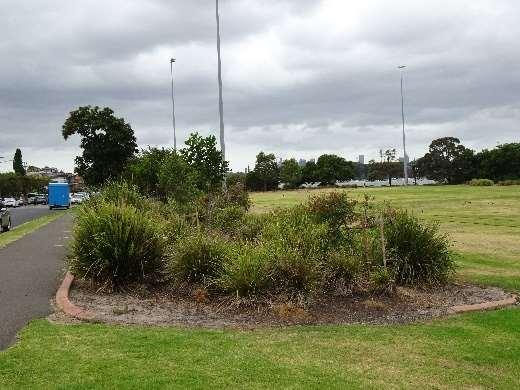


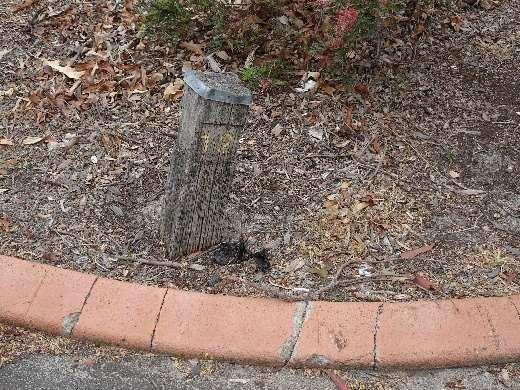

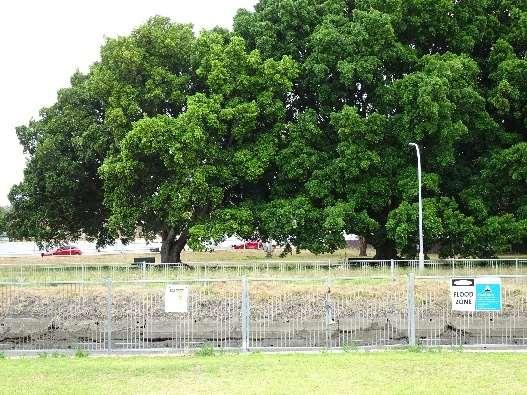

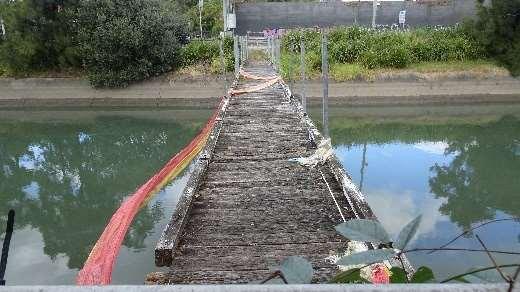

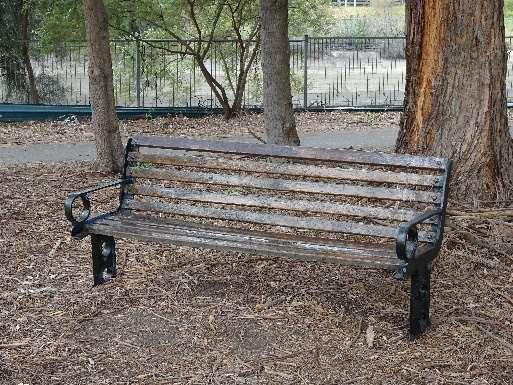


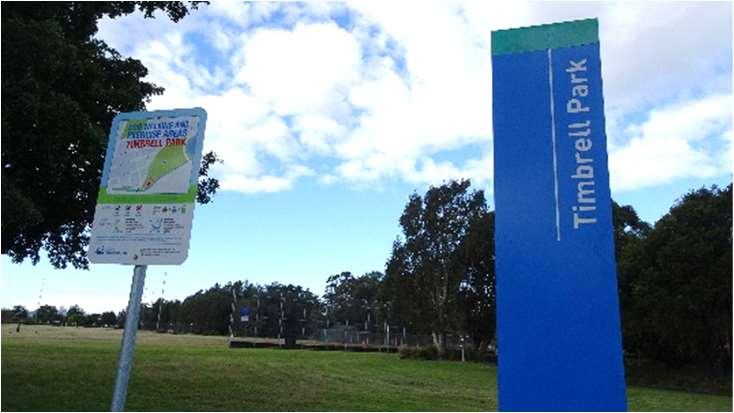
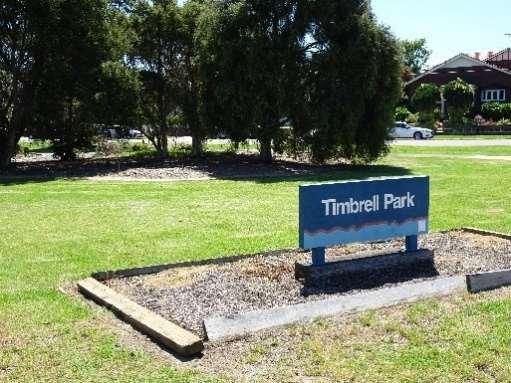

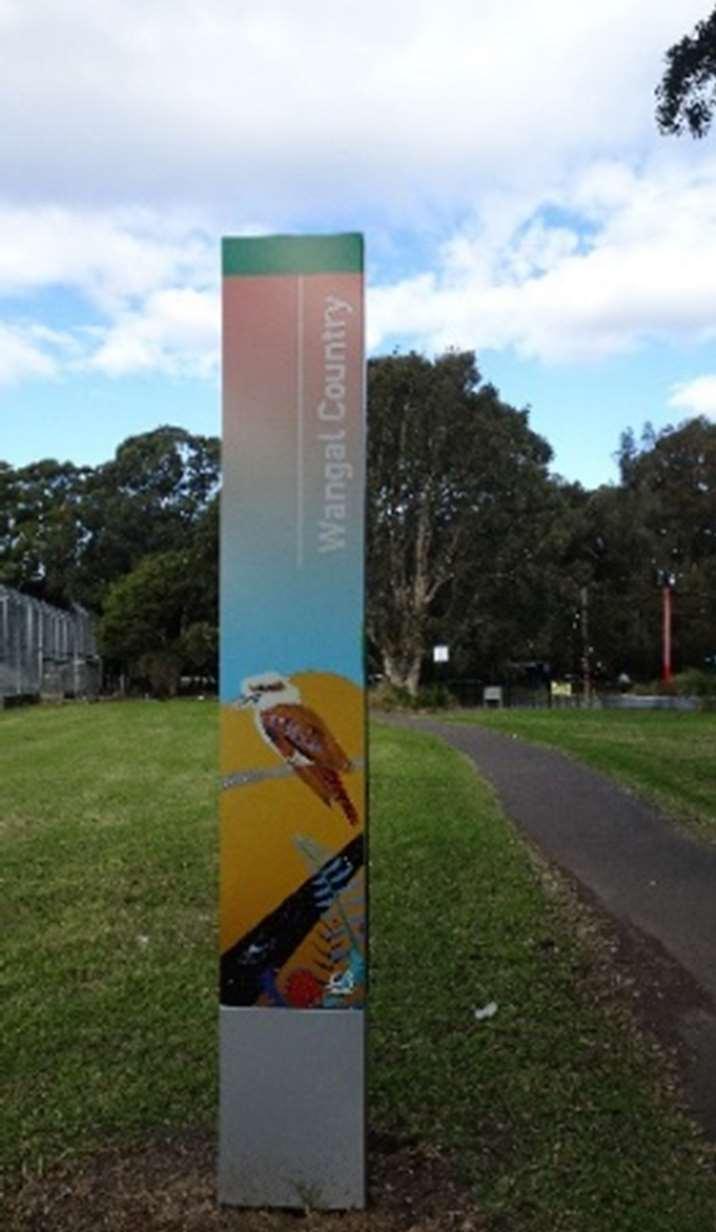
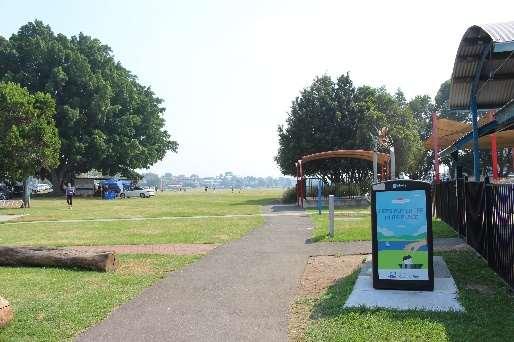
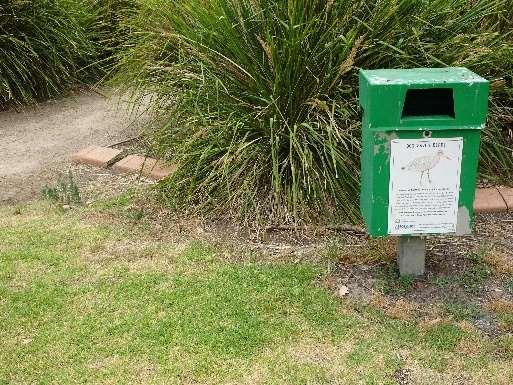

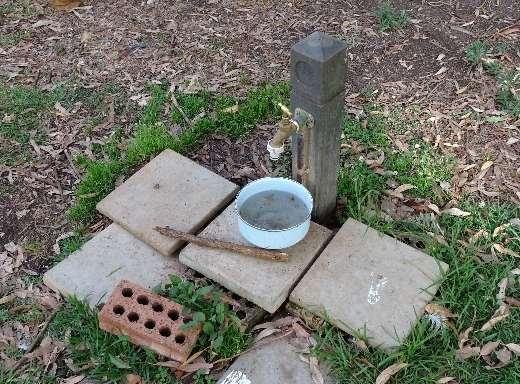


This page is left blank intentionally
The SEPP (Coastal Management) 2018 updates and consolidates the previous Coastal Protection (SEPP 71), Coastal Wetlands (SEPP 14) and Littoral Rainforests (SEPP 26) policies. It gives effect tothe objectives of the Coastal Management Act 2016 from a land use planning perspective, by specifying how development proposals aretobe assessedif they fall within the coastal zone. It spatially defines the four coastal management areas prescribed by the Act through detailedmapping and specifies assessment criteria applicable for each coastal management area for Councils and other consent authorities to apply when assessing development proposals within arespective zone/zones (as mapped).
SEPP (Coastal Management) 2018
Coastal wetlands and littoral rainforests area - areaswhichdisplaythe characteristicsofcoastalwetlandsorlittoralrainforeststhatwerepreviously protectedbySEPP14andSEPP26
Coastal vulnerability area –areassubjecttocoastalhazardssuchascoastal erosionandtidalinundation
Coastal environment area –areasthatarecharacterisedbynaturalcoastal featuressuchasbeaches,rockplatforms,coastallakesandlagoonsand undevelopedheadlands.Marineandestuarinewatersarealsoincluded
Coastal use area –landadjacenttocoastalwaters,estuariesandcoastal lakesandlagoons
Coastal environment area and coastal use area in Timbrell Park
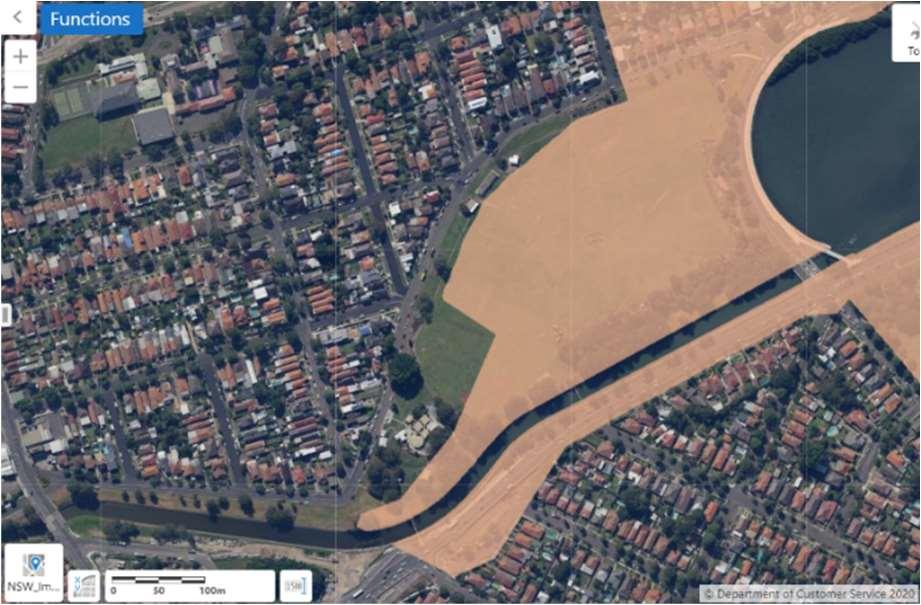
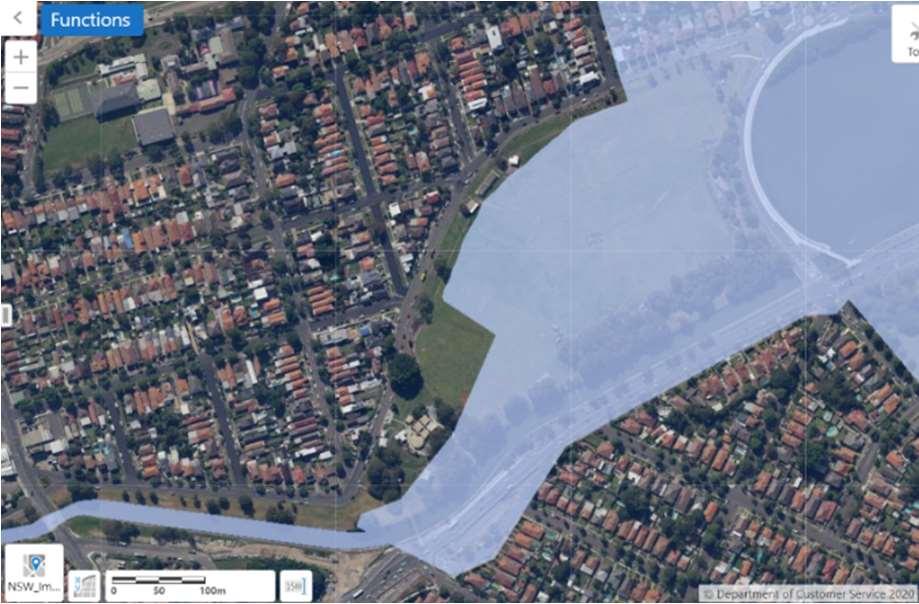
Notaffected
Notaffected
Partiallyaffected
Partiallyaffected
The SEPP Vegetation in Non-Rural Areas 2017 regulates native vegetation clearing in urban local government areas (and in urban environmental zones) wheresuch clearing would not otherwise require development consent under the Environmental Planning and Assessment Act 1979. It requires that the biodiversity offset scheme(under the Biodiversity Conservation Act 2016 and associated Regulation) is applied toall clearing of native vegetation that exceeds the offset thresholds (and does not otherwise requiredevelopment consent)in urban areas and environmental conservation zones.
Other NSW legislation may at times be relevant for the planning, development and management of Timbrell Park, as follows:
Protection of the Environment Operations Act 1997 addressesenvironmentaloffences,air quality, water quality, pollution control and noise control
National Parks and Wildlife Act 1974 contains provisions to protect places, objects and features of significance to Aboriginal people as well as toprotect and conserve habitats, ecosystems and wildlife, landforms/landscapes and natural features ofsignificance
Heritage Act 1977 conserves the State’sheritageie. thoseplaces, buildings,works, relics, moveable objects, and precincts, of State or local heritagesignificance
Biosecurity Act 2015 addresses the control of declared noxious weeds, environmental weeds and pests
Water Management Act 2000 providesforthesustainableand integratedmanagement of water sources, including guidelines to protect and enhance the quality of water in rivers
Local Land Services Act 2013 addresses land, water, natural resources and biosecurity management
Soil Conservation Act 1938 addresses the mitigation of erosion and conservation of soil resources
Disability Inclusion Act 2014 provides for the provision of services for, andinclusion of, people with a disability
Companion Animals Act 1998 provides for the declaration of Wildlife Protection Areas, requires environmental initiatives by councils to promoteresponsible animal ownership, provides for owners’to have effective control of dogs and cats in public places, and prohibits dogs within 10 metres of aplayground and food preparation/consumption areas and somerecreation areas
Smoke-free Environment Act 2000 and Smoke-free Environment Regulation 2016 prescribe controlsregarding smokingtobacco(prohibitedwithin10metresof a playground oraspectator area for/while watching an organised sportingevent).
This plan aligns with these relevant NSW Premier’s Priorities:
Greener public spaces: Increase the proportion of homes in urban areaswithin 10 minutes’ walk of quality green, open and public space by 10 per cent by2023.
Greeningourcity:IncreasethetreecanopyandgreencoveracrossGreaterSydney by planting one million trees by 2022.
The Draft Public Spaces Charter (Department ofPlanning, Industry and Environment, 2020) applies to:
public open spaces -active and passive (including parks, gardens, playgrounds, public beaches, riverbanks and waterfronts, outdoor playing fields and courts, and publicly accessible bushland.
Public facilities – including libraries, civic/community centres, showgrounds, and indoor public sports facilities.
Streets – including squares and plazas, and bicycle paths.
The ten draft principles for NSW public spaces (refer to Section 5.1) helpensure that everyone has access tohigh quality public space that allows them to enjoy and participatein public life. The Charter cites the US-based Project for Public Spaces’ finding that successful places have four key qualities:
They areaccessible – can I get there?
People can engage in activities there –am I ableto play and participate?
The space is comfortable and has a good image– am I ableto stay?
It is a sociable place – am I abletoconnect?
Greener Places is the draft Green Infrastructurepolicy produced by the Government Architect NSW which guides the planning, designand delivery of green infrastructurein urban areas across NSW.
Greener Places recognises that the network of green spaces, including parks and other public open space, provides numerous benefits in an urban environment.Such benefits include health, environmental, social, recreational, and economic. As such, green infrastructure is essential infrastructure, and is as crucial tothe city as transport, cultural and communications infrastructure.
Greener Places builds on the Sydney Green Gridwhich was developed to create a network of high quality green areas that connect towncentres, public transport networks and major residential areas in Sydney.
Greener Places aims tocreate a healthier, more liveable and sustainableurban environment by improving community access to recreation and exercise, and supporting walking and cycling connections.
The key components of the green infrastructureframework are:
parks and open space –to deliver green infrastructureforpeople
the urban tree canopy – to deliver green infrastructurefor climate change adaptation and resilience
bushland and waterways – to deliver green infrastructurefor habitat and ecological health.
Well designed green infrastructureresponds tofour key principles:
Integration: combine green infrastructure with urban development and grey infrastructure.
Connectivity: create an interconnected network of open space.
Multi-functionality: deliver multiple ecosystem services simultaneously.
Participation: involve stakeholders in development and implementation.
Greener Places advocates for public spaces to help meet the challenges associatedwith:
Health:improvingcommunityphysicalandmentalhealthoutcomesbyprovidinghigh quality open space within walking distance to encourage healthyactivities.
Climateresilience: enhancing tree canopy and other solutions like green roofs to improve air quality and reduce temperatures as we experience impacts of climate change.
Rapid population growth: meeting the need for provision of accessible public spaces responding to higher density living.
Desired outcomes of an integrated, connected and multifunctional green infrastructure network are:
Conservation of the natural environment
Increased access to open space
Improved connectivity to promote active living
Increase urban greening to ameliorate climate extremes.
Well designed, accessible, high quality and diverse greener places make it easier for people to be physically and mentally active. The social benefits of green infrastructureinclude to provide moreopportunities and places for children toplay.
Supporting Greener Places, the Draft Urban Tree Canopy Guide sets atarget for increasing the tree canopy in Greater Sydney tomore than25% in medium densityareas, and more than 40% in suburban areas.
The draft guide provides information on how to design, plan and implement green infrastructure, including parks and sportsgrounds, in urban areas throughout NSW.
The draft guide focuses on:
Open space for recreation: green infrastructurefor people
Urban tree canopy: green infrastructurefor adaptation and resilience and
Bushland and waterways: green infrastructure for habitat and ecological health
The draft guide provides strategies, performancecriteria and recommendations toassist planning authorities and design and development communities todeliver green infrastructure.
The Better Placed design policy for the built environment by Government Architect NSW places good design at the centre of all development stages from project definition and concept design to construction and maintenance. The relevant objectivesfor built structures in Timbrell Park are:
Better fit: contextual, local and of its place
Better performance: sustainable, adaptable and durable
Better for the community: inclusive, connected and diverse
Better for people: safe, comfortable and liveable
Better working: functional, efficient and fit for purpose
Better value: creating and adding value
Better look and feel: engaging, inviting and attractive.
The Office of Sport’s Women in Sport Strategy, Her Sport Her Way (2019-2023) aims to build a stronger sport sector where women and girls are valued, recognised and have equal choices and opportunities to lead and participate. It provides a clear rolefor the NSW Government to work withthe sector and new partners in innovative ways to shape the future of women’s sport.
Her Sport Her Way builds on the momentum inwomen’s sport and looks through a female lens at the way that sport in NSW is delivered, coached, marketed, led, sponsored and consumed.
Featuring 29 initiatives across four strategic pillars of participation, places and spaces, leveraging investment, and leadership- Her Sport Her Way seeks to increase women's and girl's participation as players, leaders and coaches, improve facilities, and attract more investment and recognition for women's sport.
Play is for everyone, regardless of age, ability or cultural background. The NSW Everyone Can Play Guideline is the design principles and best practice toolkit for local Councils, play space designers and other community members to ensurethat inclusive play spaces are designed and delivered to enhance accessibility and opportunities for recreation activities and social interaction to be enjoyed by everyone in the community.
Addressing thethree questions: Can I get there? Can I play? Can I stay?should be central when creating and modernising playspaces across NSW.
The Greater Sydney Region Plan: A Metropolis of Three Cities outlines a vision for a metropolis of three cities where the people of Greater Sydney live within 30 minutes of their jobs, education and health facilities, services and great places.
Open space is identified across severaldirections of the Greater Sydney Region Plan. In relation to Liveability and Sustainability ofGreater Sydney, the following directions, and the objectives and strategies which flow on from them, are set out below. Actions relating to each strategy are derived from the Eastern City District Plan whichfollows on from ‘A Metropolis of Three Cities’.
- prioritisingapeoplefriendlypublicrealm andopenspacesas acentralorganising designprinciple
-
-
-
E17 Increasing urbantree canopycover anddelivering GreenGrid connections
30 Urbantree canopy coveris increased.
32 TheGreen Gridlinks parks,open spaces, bushland andwalking andcycling paths
- managingurban developmentand urbanbushlandto reduceedge-effect impacts.
65 Expandurbantree canopyinthepublic realm.
32.1 Progressivelyrefinethe detaileddesignand deliveryof:
- GreaterSydney GreenGridpriority corridorsand projectsimportantto theDistrict
- opportunitiesfor connectionsthat formthelong-term visionofthenetwork
- walkingandcycling linksfortransportas wellasleisureand recreationaltrips.
E18 Delivering highquality openspace
31 Publicopen spaceis accessible, protected and enhanced
67 Maximisetheuseof existingopenspaceand protect,enhanceand expandopenspaceby:
- providing opportunitiesto expandanetworkof diverse,accessible, highqualityopen spacesthatrespond totheneedsand valuesof communitiesas populationsgrow.
Timbrell Park is part of the Greater Sydney Green Grid, anetwork of high quality green spaces connecting streets, parks, waterways and bushland topublic transport, centres, and public spaces.
The relevant components of the Sydney Green Grid include:
Recreation Grid:
- Increase access to openspace
- Create ahigh quality and active public realm
Ecological Grid
- Conserve the naturalenvironment
- Adapt to climate extremes
- Increase urban greening
- Improve management, maintenance and sustainable greenspace design
Blue (Hydrological) Grid
- Increase environmentalquality
- Reveal the unique character of Sydney’s waterscapes
- Reframewaterways as connectors not barriers.
The Green Grid– Central District Plan outlines priority projects in City of Canada Bay, including those along the Parramatta River, as akey active recreation link and regional open space corridor between the city and the west.
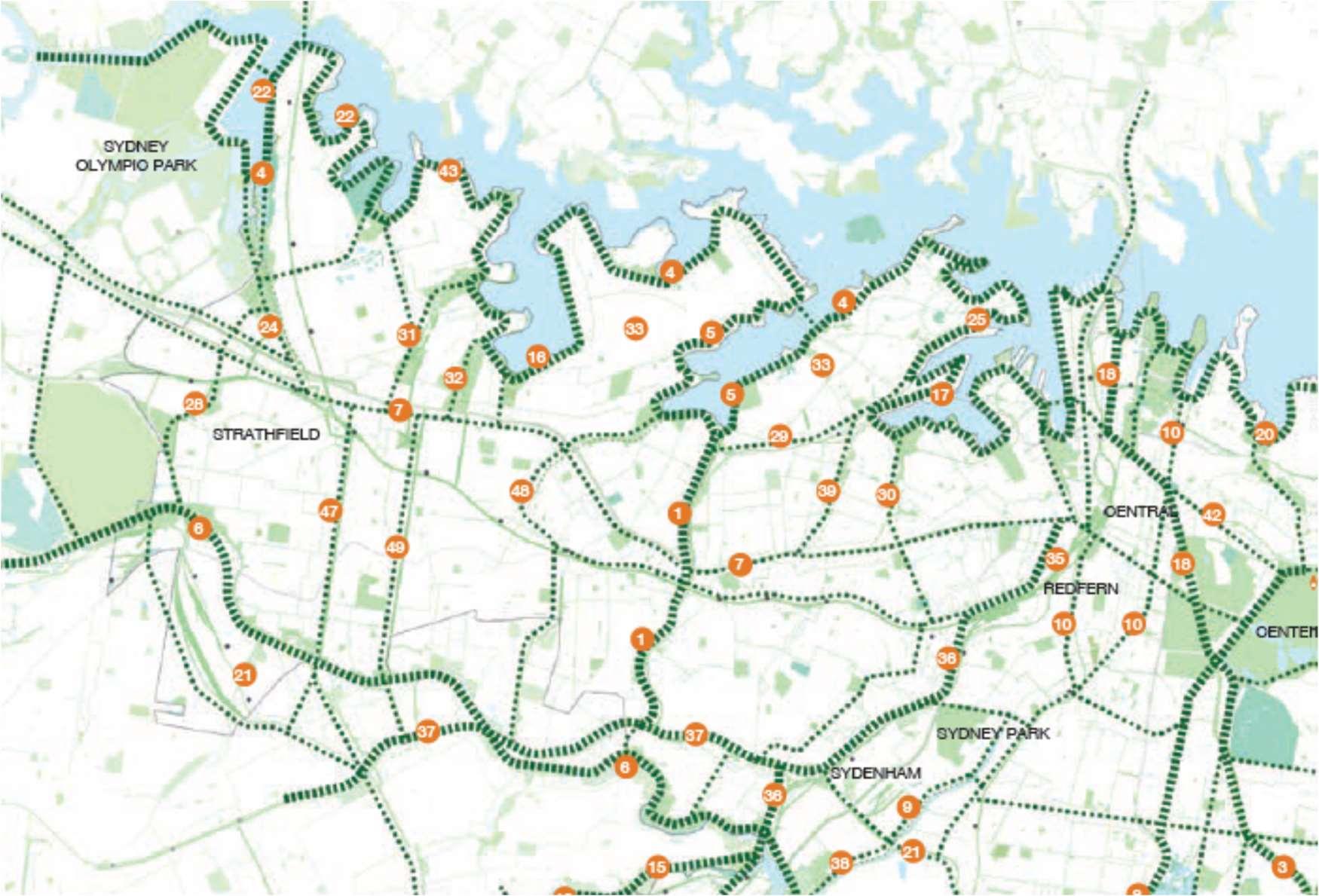
Green Grid Recreational Project Opportunities
Recreational Project Opportunity 5 ‘The Bay Run and Iron Cove Creek’ and Project Opportunity 48 ‘Cooks River Secondary Green Links: Ashfield toCanterbury’ is shown below.
A background dataandassessment, prepared by the NSW Office of Sport (2019), is intended toassist councils in planning for community sport facilities. It provides population insights and broad-scale facility data(type, location and capacity mapping) for the Sydney Eastern City District councils, as well as participation data for organised sports affiliated with State sporting organisations – but allat aregional or larger scale.
For the Canada Bay local government area an increase in participation rates, of up to 10% from 2016 to2036, across the majority of sports assessed is predicted.
A “cascading approach” is recommended to planning for community sport infrastructure:
1. optimise use of existingfacilities
2. diversify the offerings by offering multi-useopportunities
3. enhance the capacity of facilities throughupgrades
4. seek partnerships with other facilityproviders
5. provide new infrastructure tomeet demonstrated or forecastdemands.

The NSW Office of Open Space and Parklands (Department of Planning, Industry and Environment) completedthe Greater Sydney Outdoors Survey into the recreation needs of Greater Sydney in 2019.
Through the study they learnt what Sydneysiders like todo outdoors:
They love experiencing the outdoors on foot, going for runs, enjoying long hikes and taking in the view on leisurely strolls.
Water is important toeveryone, whether it's swimming at the beach or picnicking by a river you really love being around it.
Connections matter, a lot of Sydneysiders spend time in Sydney's open spaces together with friends, family and your dogs.
Compared to Greater Sydney as a whole, Eastern City District residents love to participate generally more in outdoor recreation activities except visiting playspaces and walking the dog in which they participate slightly less thanGreater Sydney.
Participation in outdoorrecreation activities by Eastern City District residents
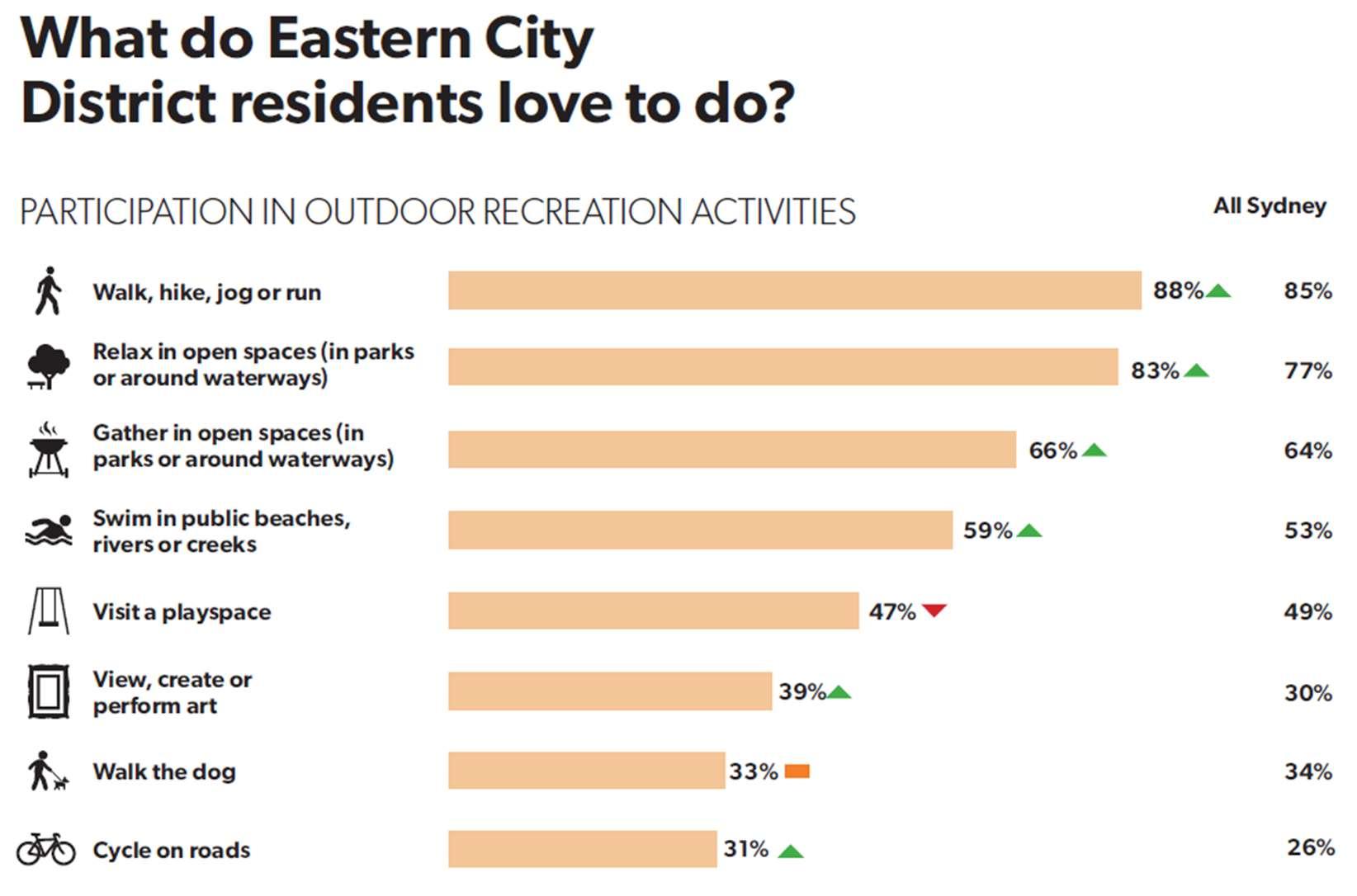
Source: Greater Sydney Outdoors Study, 2019
DPE learnt that Sydneysiders and EasternCityDistrict residents would like to see more of:
Morehigh quality, openspaces supported by good facilities, especially for areas of high development
Moreopportunities for swimming and water-based activities in the local area, especially on the ParramattaRiver and Cooks River
Larger open spaces, toprovide greater opportunity for diverse, outdoor recreation activities
Open spaces that assist in building a greater sense of community
Improvements to walking and cycling networks, tohelp get to outdoor recreation areas without a car
Improvements to existing parks, toensurethey’rebeing well utilised
Protection of existing open spaces and recreational areas for future communities
Open spaces that feel safe and provide for multiple uses.
The results are intendedto assist local Councils with their recreation planning. Many of these desired outcomes are or can be accommodated in Timbrell Park.
The NSW Government is aiming to work withCouncils and the community to plant Five Million Trees for Greater Sydney (5MT) by 2030instreets, parks,backyards,neighbourhoods and schools,so we can grow our tree canopy from 16.8% to 40%. More tree canopy means healthier neighbourhoods,more shade, cooler suburbs, habitats for wildlife and an increase in property values.
The Five Million Trees forGreater Sydney (5MT) Grant supports local councils in Greater Sydney to enhance urban tree canopy by co-funding tree planting projects in public spaces such as streets, parks and plazas.
YOUR Future 2030 is the City of Canada Bay’s Community Strategic Plan. The purpose of the Plan is to identify the community’s mainpriorities and aspirations for the future and to identify how to achieve these goals.
Our Plan is based on Council’s understanding of what our community hastold us as well as our analysis of metropolitan, district and local issues likely toimpact onour City incoming decades. The consultation undertaken to inform this document built on the consultation for Council’s Community Strategic Plan.
Among other things the community told us that green spaces, local parksand opportunities to be near the water should be protected and enhanced.
Key relevant themes of YOUR Future 2030 and their goals and strategies are: Themes,
The Canada Bay Local Strategic Planning Statement (LSPS) is informed by Council’s Community Strategic Plan. The LSPS provides the rationale for decisions about how wewill use our land to achieve the aspirations of the community.
Engagement with over 400 residents in 2019 for the Canada Bay LSPS revealed that:
moreparks and open space in their neighbourhood is thethird highest priority for future planning.
63% of residents use parks / green space in Canada Bay either every day or a few times a week.
informal recreational activities are more highly valued in parks and open space areas than formal sports. Themost popular activities of Canada Bay residents in parks ae going for a walk/run (71%), enjoying the scenery (46%), walking the dog (26%), meeting friends (26%), sitting and having a coffee (18%), socialising (16%), casualsport (15%), picnics/barbecues (13%), and participating in organised sport (12%).
79% of survey respondents chose open space and natural habitats as their preference over more fields to support organised sport and recreation (21%).
thereis significant support for more trees in parks, on streets and within centres.
public access to and along the foreshoreshouldbe achieved wherever possible.
residents would like toengage in more social and culturalactivities in parks and open space areas. Such activities include attending events (open air cinema, markets etc.) 36%, sit and have a coffee 36%, and picnics and barbecues 25%.
The vision/values and planning priorities of relevant themes of the LSPS are set out below.
Planning priorities of Canada Bay Local Strategic Planning Statement
Themes Vision/values Planning priorities
Liveability - Creategreat streets, placesand buildingsfor people
- Protectand enhancelocal character
Sustainability - Improve accessto Parramatta River foreshore
- Facilitate sustainable development andrenewal
- Providingcommunityservicesandfacilitiestomeet people’schangingneeds
- Fostersafe,healthy,creative,culturallyrichandsocially connectedcommunities
- Providehighqualityplanningandurbandesignoutcomes forkeysitesandprecincts
- Createvibrantplacesthatrespectlocalheritageand character
- Protectandimprovethehealthandenjoymentofthe ParramattaRiverCatchmentandwaterways
- Protectandenhancebushlandandbiodiversity
- Protectandenhancescenicandculturallandscapes
- IncreaseurbantreecanopyanddeliverGreenGrid connections,includingensuringthatMasterPlansand PrecinctPlansachieveaminimumof25%canopycover.
- Deliverhighqualityopenspaceandrecreationfacilities
- Increase biodiversity andtheurban treecanopy
- Reducecarbonemissionsandmanageenergy,waterand wasteefficiently
- Adapttotheimpactsofurbanandnaturalhazardsand climatechange
The LSPS also sets out strategies for access and connections, such as cycling access, biodiversity and habitat connections, foreshoreaccess, and the GreenGrid.
When preparing planning studies and controls, the LSPS advocates creating links tohabitat sites through canopy cover, the Green Grid and waterways, and improving planting of shrubs and understorey.
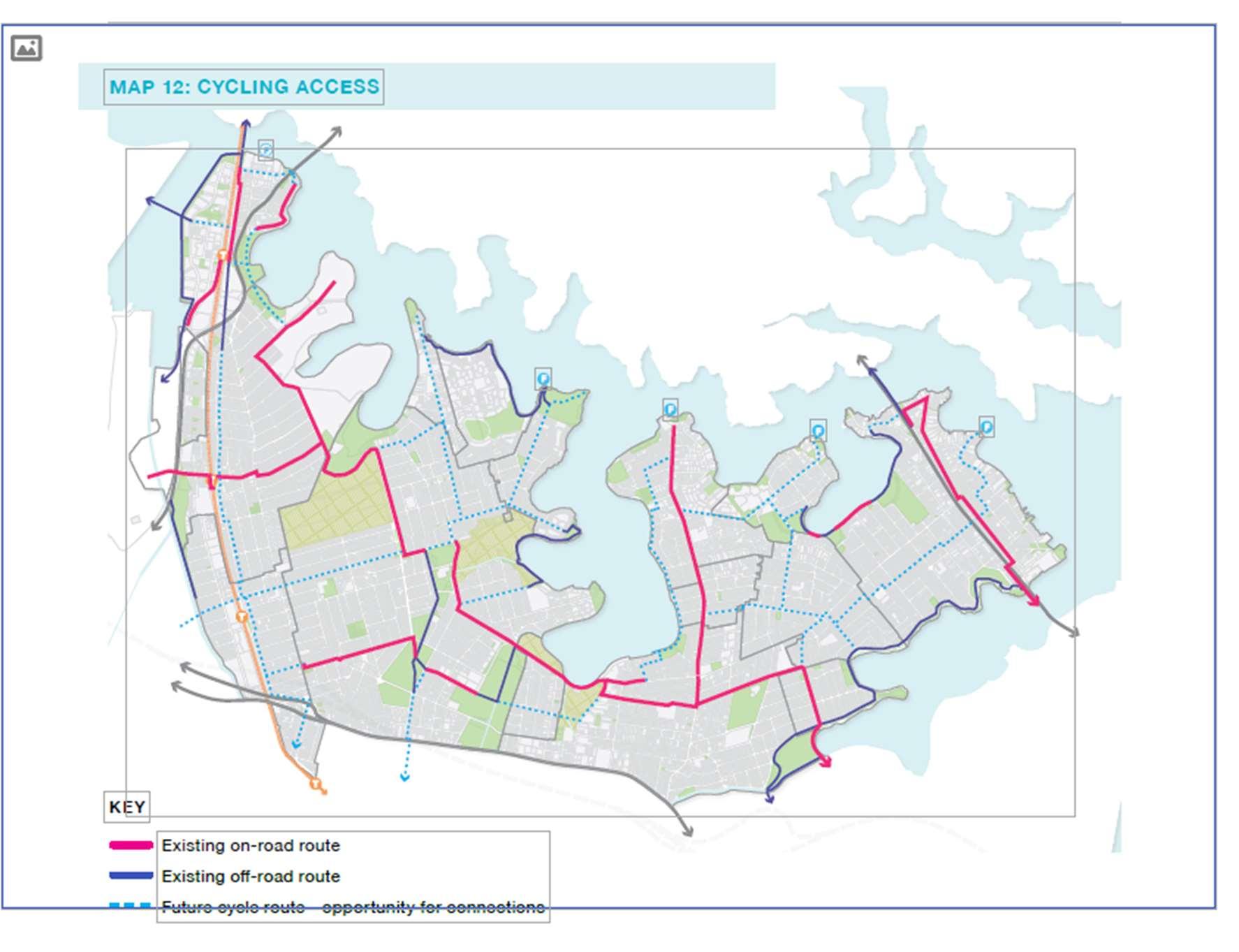

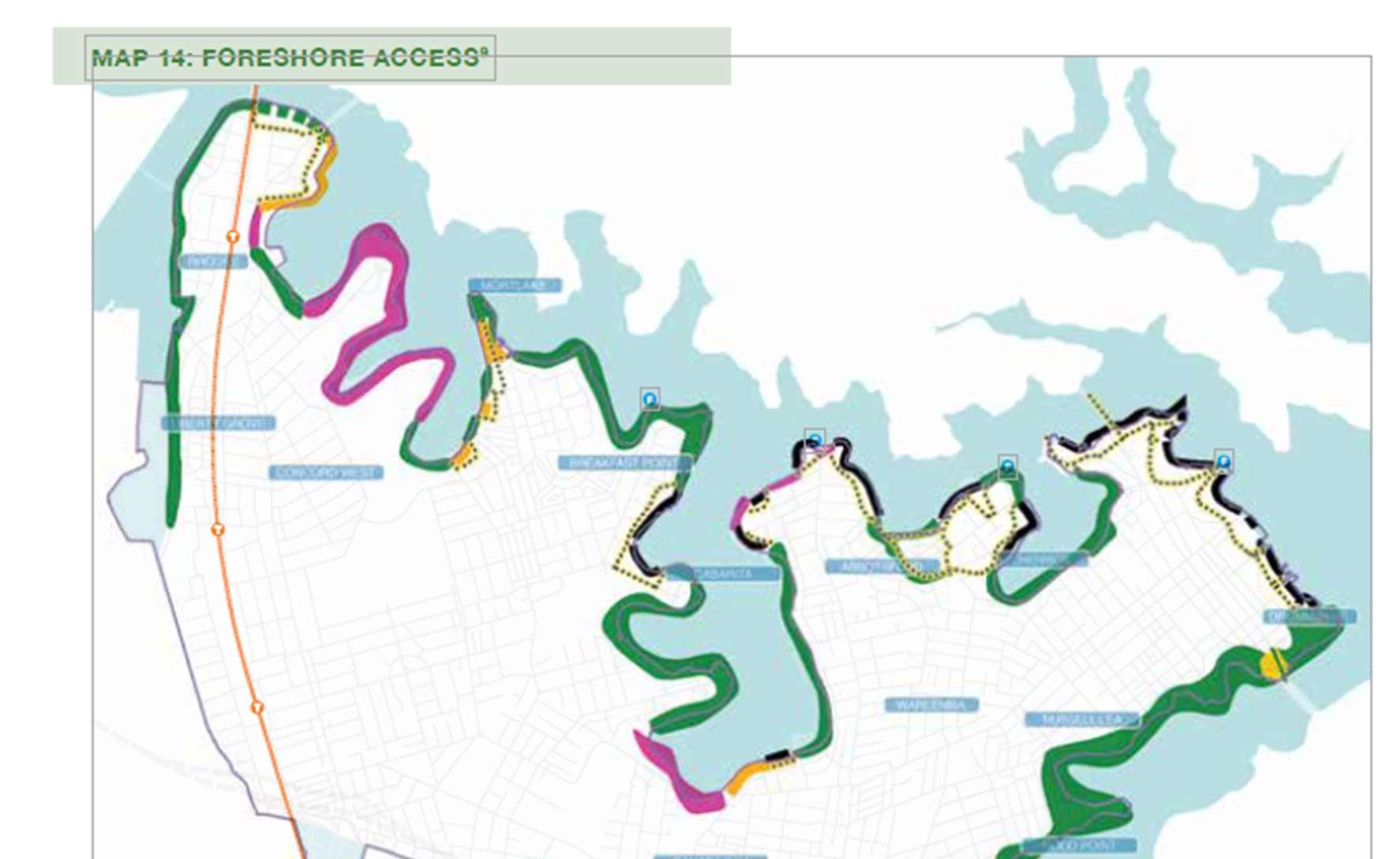

Planning Priority 17 of the LSPS is to “Deliver high quality open space and recreation facilities”.
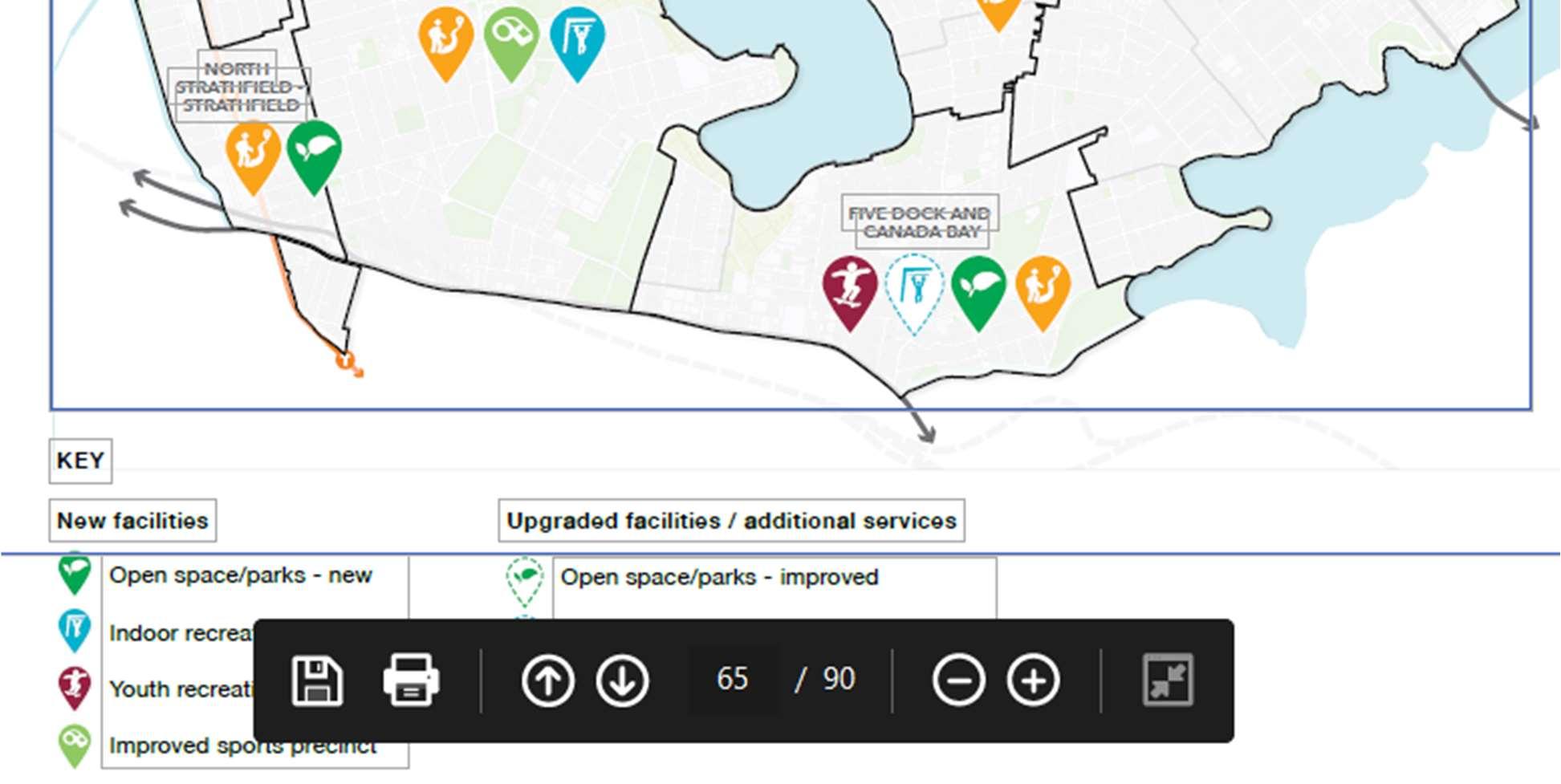
Growth and change of Canada Bay’s population will place increased pressure on existing open space and recreation facilities and demandfor increased provision and access to recreation services andprograms. Demographic changes will require open space and recreation facilities tomeet the needs of older people, children and families and young people.

Relevant open space priorities for Five Dock/Canada Bay arefor new youth recreation opportunities, indoor sports, newopen space/parks, and connections.
The LSPS also points out that increasingtemperatures and the Urban Heat Island Effect will also affect Canada Bay, with maximum temperatures projected to increase in the near future by 0.3–1.0°C and in the far future by 1.6–2.5°C. Urban heat island mapping undertaken by
Council indicates there are seasonalbut increasing urban heat island effects across the LGA. Measures to increase the tree canopy willassist inreducing the impact of the heat island.
Water
Measuresto conserve water are to:
review and update water sensitive design controls to reduce stormwater runoff and pollution entering waterways
maximise pervious areas
treatment and management of stormwater beforeit reaches waterways
provide passiveirrigation, greening and urban cooling.

Zoning
Timbrell Park is zoned RE1 Public Recreation under the Canada Bay Local Environmental Plan 2013.
Zoning of Timbrell Park

The north-east corner of Timbrell Park is mapped as part of Terrestrial Biodiversity extending from TimbrellPark along Henley Marine Drive and north to Rodd Point.
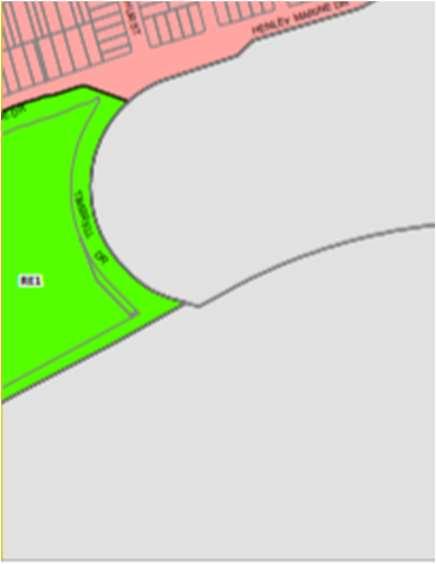
Canada Bay’s Let’s All Play Strategy was prepared in 2019 to updatethe Let’s Play Strategy (2007) and to be consistent with the NSW Government’s Everyone Can Play guidelines.

The principles of Let’s AllPlay areto:
createinclusive play spaces tobe shared and enjoyed
provide opportunities for inter-generational play
provide spaces that connect and engage the community
involve the community in pursuing play design
enhance existing and new play environments
celebrate, support and promote our play spaces
experience awide range of different play spaces.
Community engagement showedthe following desires of adults, youthand young children for play opportunities in Canada Bay:
Barriers to using parks and recreation spaces
Adults Lackofsupportinginfrastructure(55%)
Lackofplayequipmentformy household/stageoflife/gender(42%)
LackofactivitieswhichI’minterested in(31%)
Play opportunities themselves or household members are more likely to use if available:
Zipline/flyingfox(79%)
Ninjaobstaclecourse(67%)
Interactivesculpturesthatallowclimbing(64%)
Outdoorrock/wallclimbing(59%)
Basketballhoop/court(46%)
Youth (8–18 years)
Young children
Ninjaobstaclecourse(85%)
Zipline/flyingfox(85%)
Tabletennis,handballcourt,outdoorrock/wall climbing,basketball(77%)
Swings
Moderncomboplayunit
Carousel
Waterplay–wateroverhead
Seesaw
Waterplay–waterupwardsspray
Climbingframe
Timbercombounit/fort
The Canada Bay Dogs in Public Places Strategy(2019) identifies opportunities for dogs to play in public places while complying with legislative requirements of the Companion Animals Act 1998 and Local Government Act 1993.
The Strategy outlines Council’s policies regarding fencing and delineation of off-leash areas, and provision of amenities for dogs and people (signage, bins, bags, drinking fountains).
The current off-leash area in Timbrell Park is required to be fenced for safety from the nearby road. However this area will not be available when the Iron Cove Creek naturalisation project is under construction and completed.
Council undertook a trial of an off-leash dog area in the south-easternsection of Timbrell Park inOctober-November 2018. This trial was supported by 86% of respondents. Objections tothe trial were received from sporting users of Timbrell Park. Council subsequently heldanother trial and community engagement frommid December 2018 to mid April2019.
Council’s current position is that TimbrellPark willbe available for on leash dog exercise only, with off leash dog exercise allowed at Five Dock Park.
The Canada Bay Local Movement Strategy (GTA Consultants, 2019) showed Timbrell Park connects to other placesthroughout Canada Bay LGA via an on-road bicycle route on Timbrell Drive, and an off-road routewithin the park.
GTA Consultants recommended that Council encourage provision of dedicated pedestrian and cycling paths, secure bicycle parking and charging facilities at key destinations, and wellplanned and designed wayfinding elements to facilitate cycling.
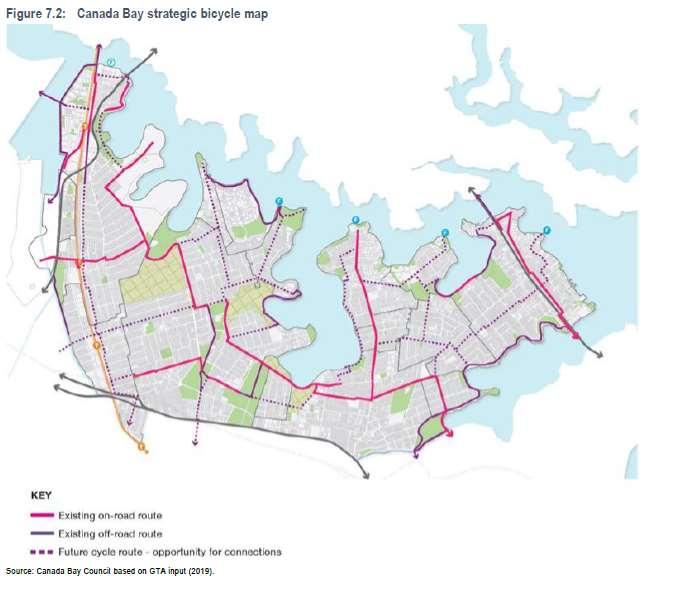
Insight Ecology (2014) recommended five priority biodiversity connectivity target zones in City of Canada Bay, which include Iron Cove Creek and Timbrell Park toRodd Point.
Map of GreenGrid

Timbrell Park has moderate Habitat Management Priority but high Potential Threat Value (shown in red).

It is also identified as an opportunity for connectivity.
To protect the existing values and implement the wildlife corridor, the Biodiversity Strategy identifies the southernboundary of the park as alocation todeliver habitat connectivity over timethrough improvement/expansion of the riparian corridor.

The Canada Bay Biodiversity Framework and Action Plan (Eco Logical Australia, 2019) informsthe Community Strategic Plan and Plans of Management for parks and reserves in Canada Bay.
The vision of the Biodiversity Framework and Action Plan is “Canada Bay is a community that values, protects, conserves and enhances natural areas and biodiversity in an urban and river foreshoreenvironment.”
The Biodiversity Framework is based on six themes:
1. native vegetation: protecting, managing and restoring Canada Bay’s native vegetation
2. urban waterways: restoring the river foreshore environment, waterways and their surrounds
3. corridors and connectivity: enhancing landscape linkages
4. public spaces: managing our reserves to promote biodiversity and community interaction
5. urban habitat: protecting and managing biodiversity inthe urban landscape
6. green infrastructure: opportunities for innovation, enhancements and excellence in biodiversity.
The natural vegetation described as supporting habitat on the southern side of TimbrellPark has a high potential habitat threat value.
The Biodiversity Framework identified the Iron Cove to Rodd Point to Timbrell Park toIron Cove Creek/Canal as one of the six highest priority habitat connectivity opportunities in City of Canada Bay.
To better connect fauna habitats and allow movement of fauna across the hard barrier of Iron Cove Creek, EcoLogical suggests constructing agreen bridge across the creek as a planted landscape bridge and apedestrian and wildlife overpass.
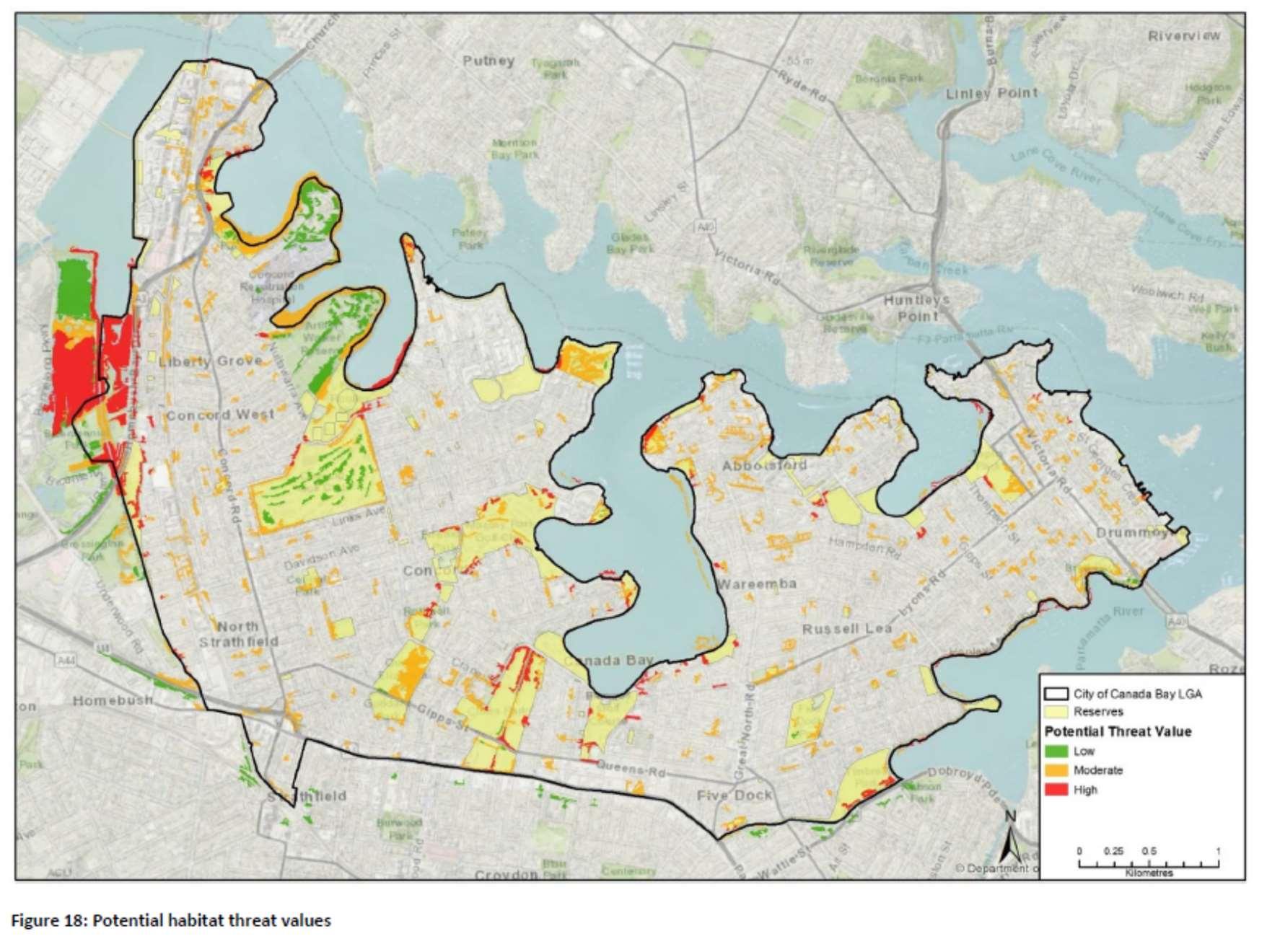
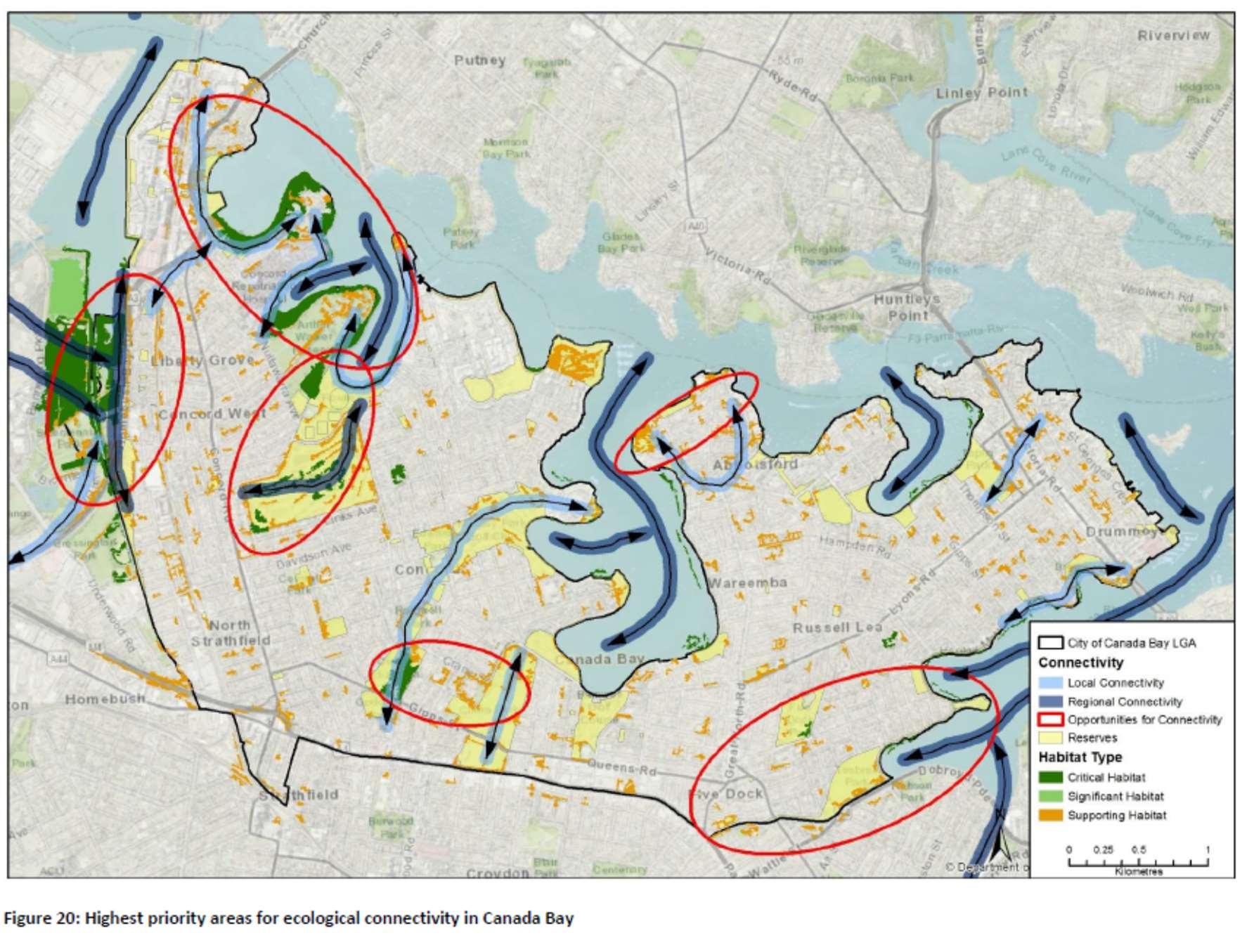

Seed Consulting Services et. al. (2019) identified that Timbrell Park is part of a “major Green Grid opportunity” along the Iron Cove foreshore.


The Strategy emphasises the importance of trees to cool increasing temperatures and to store more carbon to minimise the effects of climate change. Climate change will impact on the urban forest which can be addressed by selecting appropriate species, and providing water for establishmentand maintenance of trees.
A recommendation of the Strategy is to Develop a Park Tree Master Plan that provides a strategic approach to increasing canopy cover in parks to 25%.
The Disability Inclusion Action Plan (DIAP) 2017-2021 for the City of Canada Bay community addresses ongoing need, issues, barriers and concerns of people with a disability and those who support them. Council recognises that improved access and inclusive practices will benefit allresidents and visitors, including people with adisability, families with young children, older people, and people experiencing temporary illness or injury.
The DIAP recommends that the needs of peoplewith a disability should be considered when planning places and spaces.
Relevant City of CanadaBay Councilpolicies are:
Community Fair/Events
Mobile Food Vending
Public Open Space Hire
Sports Field Allocation
Issues and suggested improvements to Timbrell Park raised by the community and howthey area addressed in this plan, are listed below.
This page is left blank intentionally
The Draft 50-Year Vision for Greater Sydney’s Open Space and Parklands in the next 50 years is:
a living and breathing city of parks for people to connect, exercise, reflect and celebrate
a city of immense naturalbeauty, withincredible parklands, open spaces and waterways within its landscape
a place wherepeople are custodians and wholeheartedly embrace and carefor open space and parklands
cool, connected and community-focused though the Greater Sydney Green and Blue Grid
a city where open spaces and parklands are accessible, meaningful and sustainable, reflecting the stories of the city’s ancient and recent past, and enhancing unique landscapes for stories yet to be told
a place whereopenspaces and parklands arefundamental to everyday life, nurturing people while supporting a vibrant ecology and providing a homefor a rich diversity of flora and fauna inthe city and its neighbourhoods
as much a parkland cityas it is a harbour and river city, where peopleshare access to diverse types of open space and parklands.
Strategic directions underpinning the 50-year vision for Greater Sydney’s open space and parklands are:
Growing acity of parks for people
Connecting neighbourhoods toparks
Keeping Sydney green and captivating
Being smart and resilient.
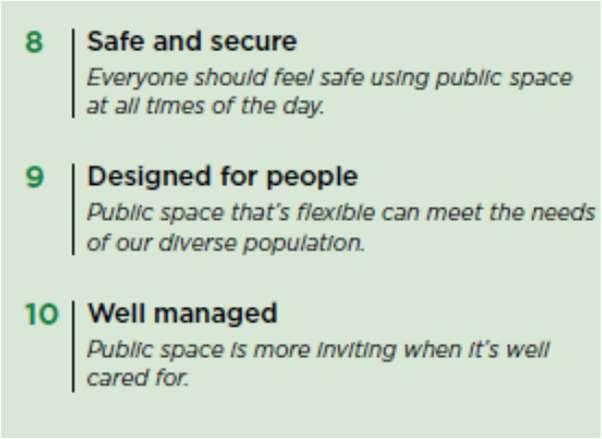


Source: Department of Planning, Industry and Environment (2020)
The vision for Canada Bay is set out by themes in Your Future2030. Collectively, Council’s vision is:

Vision for Canada Bay
Theme Vision
1 Inclusive, involved and prosperous
Ourdiversecommunityenjoysarangeofinclusiveandaccessiblesocial, recreationalandculturalopportunitiesandisactivelyinvolvedinthelifeofour City.
Peoplehaveasenseofbelonging,sharestrongrelationshipsinfriendly neighbourhoodsandoutlocaltowncentresarevibrantandprosperous.
2 Environmentally responsible
3 Easy to get around
4 Engaged and future focussed
Ourcommunitysharesacollectiveresponsibilitytoprotectourenvironment andactivelyparticipatesininnovativeprogramstomitigateclimatechange. Theseprograms,alongwithourwellcaredforandcherishedactiveand passiveopenspacesandwaterways,aresustainingourfuture.
ItiseasytogetaroundourCityandwiderSydneyregionviaanetworkof well-functioningandconnectedpublictransport,pathwaysandroads.
Withourpopulationcontinuingtogrow,ourcommunityisengagedinplanning forourfuture. Theplanningresultsinservicesthatsupportourenviable lifestyle,qualityopenspaces,arangeofhousingtypes,commercialcentres andinfrastructureanddevelopmentsthatenhanceandcomplementexisting suburbs.